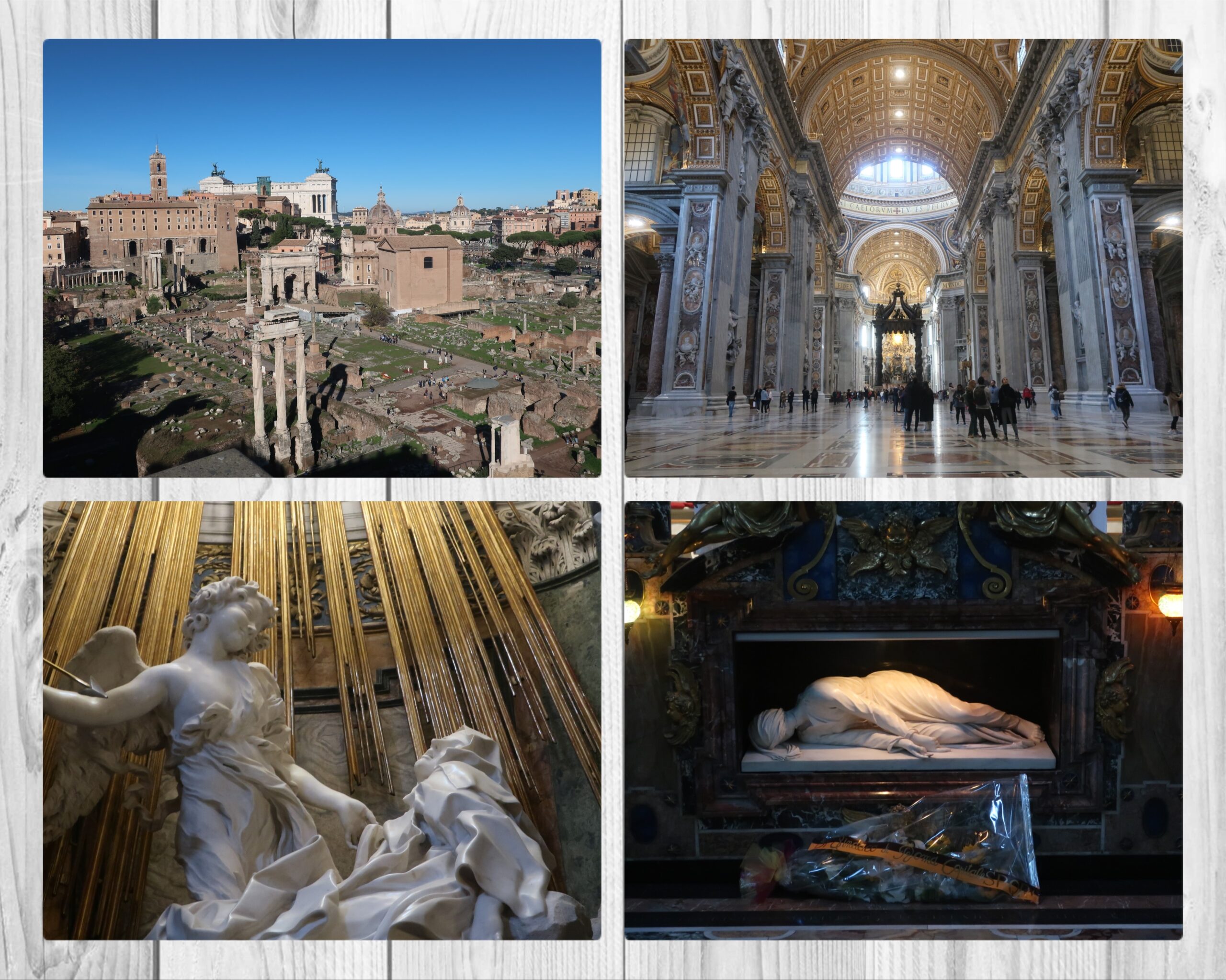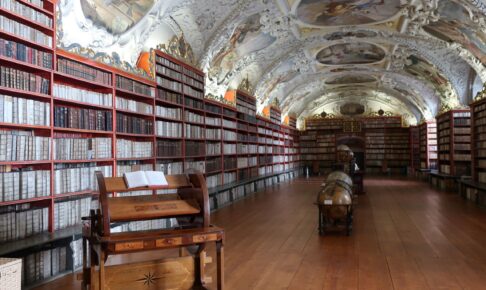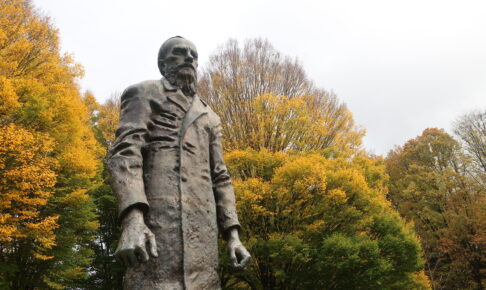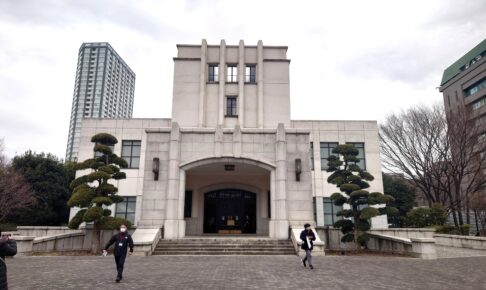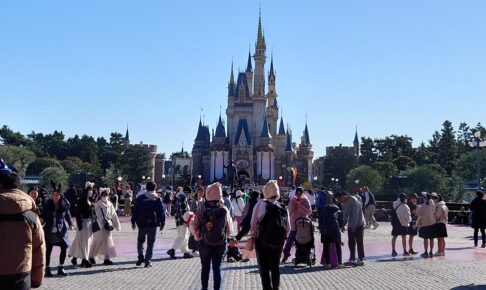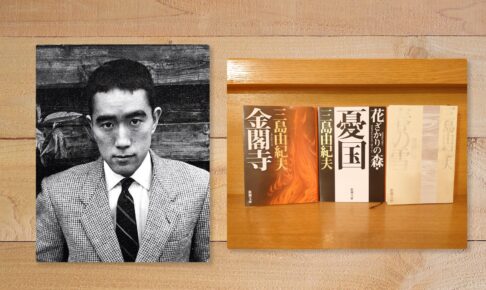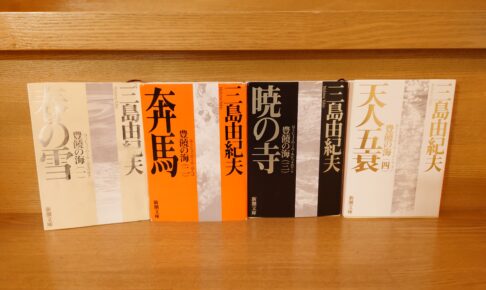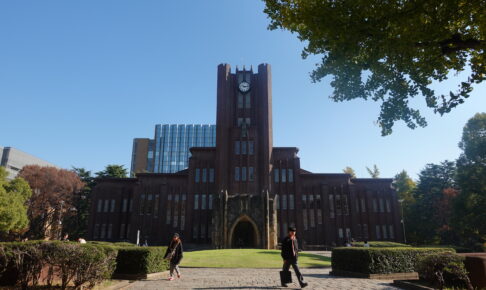Table of Contents
- 1 15 Recommended Sightseeing Spots in Rome! Taste the best of beauty from the royal road to maniac churches
- 1.1 St. Peter's Basilica
- 1.2 Roman Forum and Colosseum
- 1.3 pantheon
- 1.4 Plaza España and Barcaccia Fountain
- 1.5 Borghese Museum
- 1.6 Statue of St. Cecilia in the Basilica of Santa Cecilia in Trastevere
- 1.7 Church of Santa Maria de la Vittoria with Bernini's masterpiece "The Laws of Saint Teresa".
- 1.8 Sant'Andrea al Quirinale Cathedral
- 1.9 Basilica of San Carlo alle Quattro Fontane
- 1.10 Church of San Francesco a Ripa "Blessed Ludovica Antoni
- 1.11 Church of Santa Maria del Popolo and San Luigi dei Francesi
- 1.12 Jesuit Headquarters Church of Jez
- 1.13 church of sant'Andrea delle fratte
- 1.14 Rome's long-established Cafe Greco
- 1.15 Castroni, a famous restaurant where you can enjoy excellent espresso.
- 2 Even more maniacal recommendations to stop by if you have time.
- 2.1 Entrance to Rome: Porta del Popolo and Piazza del Popolo
- 2.2 Baths of Caracalla and Appian Way, Claudia Aqueduct
- 2.3 Catacombs of San Callisto outside of Rome
- 2.4 Basilica of San Giovanni in Laterano
- 2.5 Basilica di Santa Maria Maggiore
- 2.6 church of santa viviana
- 2.7 Chapel of Raimondi by Bernini in San Pietro in Montorio Church
- 2.8 Fountain of the Four Rivers" in Piazza Navona, Rome
- 3 Conclusion
15 Recommended Sightseeing Spots in Rome! Taste the best of beauty from the royal road to maniac churches
In this article I will introduce some of my favorite places to visit in Rome.
In this article, we will introduce not only famous churches such as St. Peter's Basilica and the Colosseum, but also maniac churches that are not often visited by tourists.
For more information about me and Rome, please see the followingTravels to Rome: "The Beauty of Rome, the City of Theaters: A Pilgrimage to Dostoevsky and Bernini" - An introduction to ancient Rome and its halls of beauty!We hope you will take a look at this article as well.
So let's get started.
St. Peter's Basilica
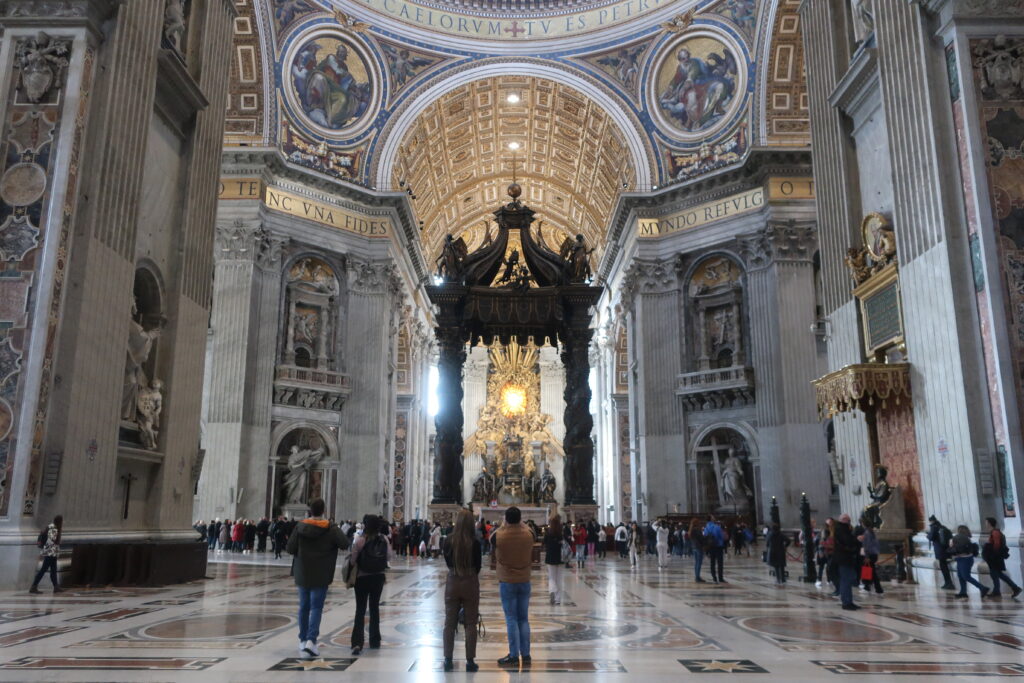
It is a royal road that no longer needs to be told.
You cannot come to Rome and leave without seeing this cathedral.
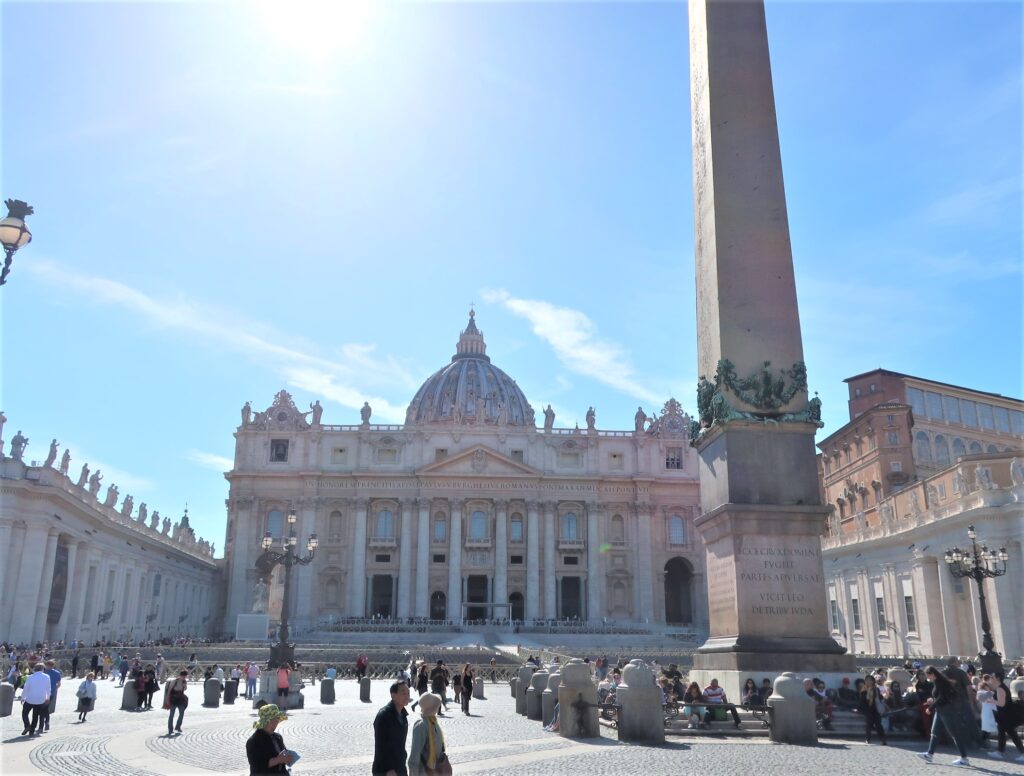
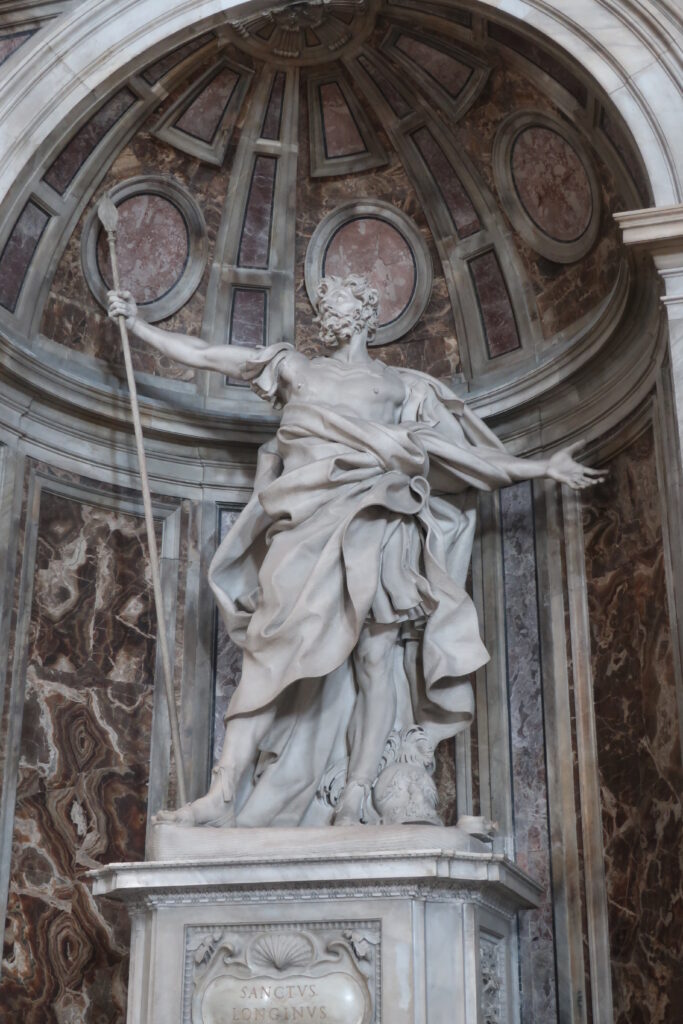
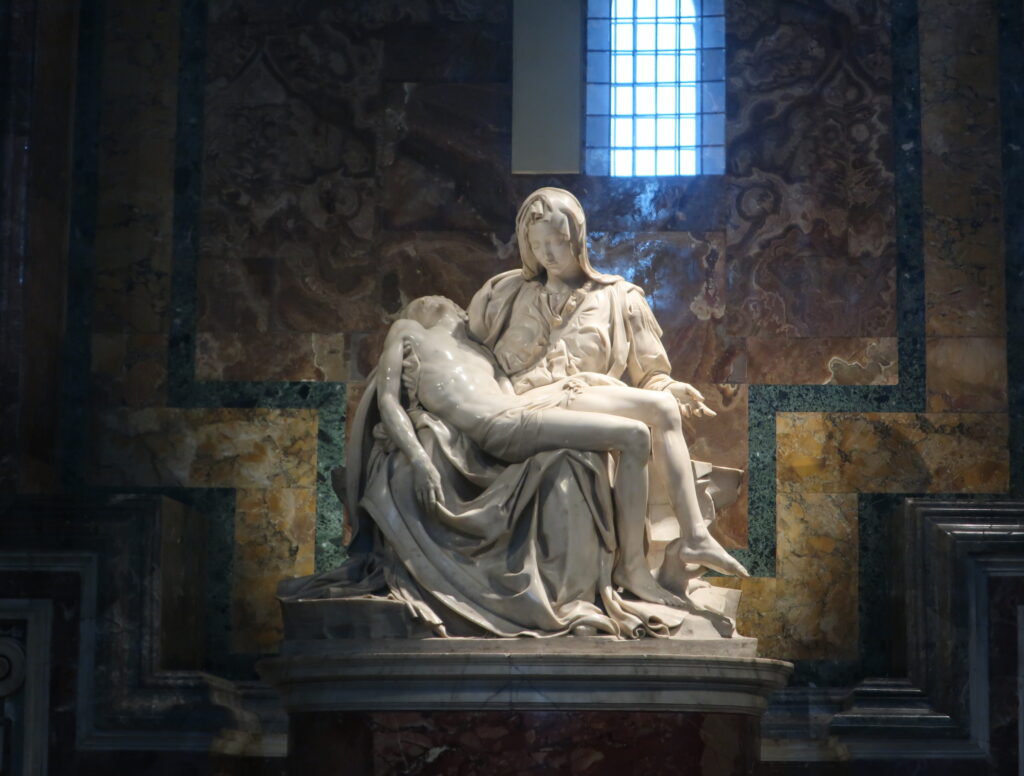

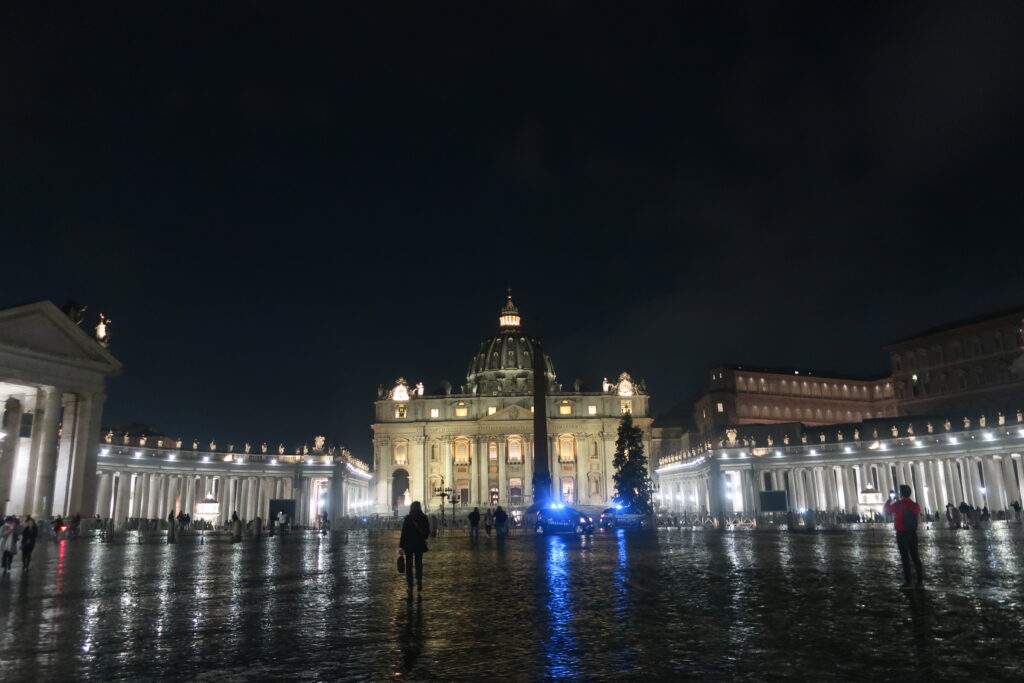
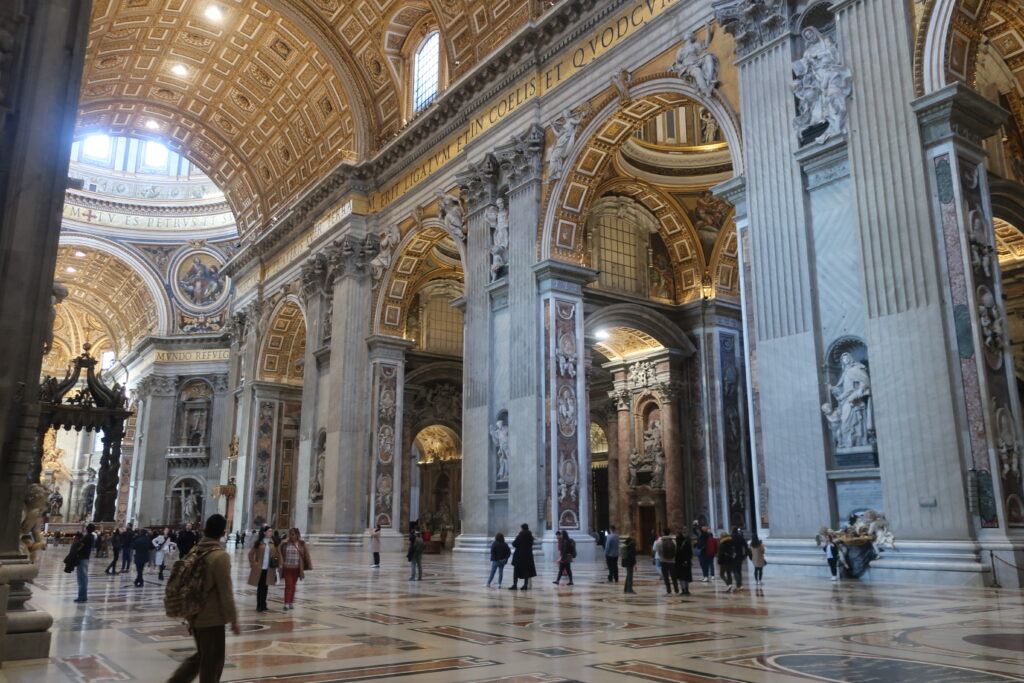
It is the headquarters of Roman Catholicism, and the unimaginable artistic world of Michelangelo and Bernini unfolds here.
Michelangelo's masterpiece "Pietà" and Bernini's "St. Longinus" in the cathedral are must-sees. I love the "Pietà" more than any other sculpture in the world, and I spend dozens of minutes admiring it every time I visit.
The adjacent Vatican Museums are also a must-see, of course, and the Sistine Chapel, which can be seen as a set, depicts Michelangelo's "The Creation" and "The Last Judgment".
To be clear, there is so much to see that you could go every day for a week and still not see enough. I could go back and see these masterpieces over and over again and never get tired of them, and the unbelievably beautiful and overwhelming space...!
Moreover, St. Peter's Basilica changes its appearance depending on the time and day. The Vatican in the early morning and the Vatican at night are both truly wonderful! If possible, I would recommend staying at a hotel in the area and concentrating on just this for a few days.
This is the best spot on the royal road, but it is the best recommendation that you should never miss.
We hope you will find the following information helpful for your sightseeing.
Roman Forum and Colosseum
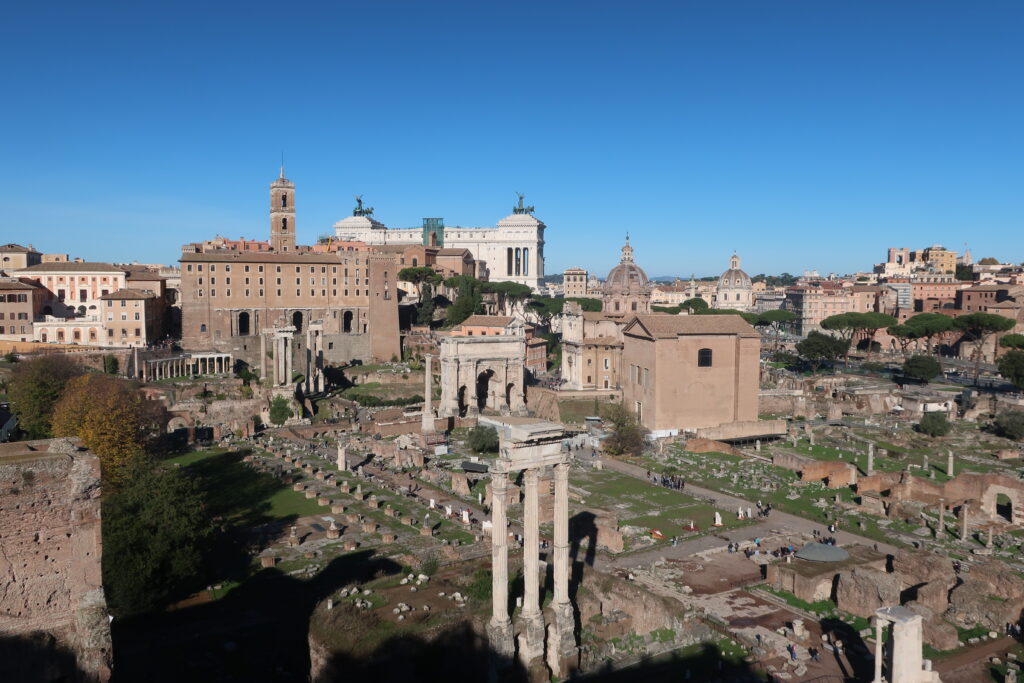
This is another of Rome's royal roads.
It is a magnificent site where you can feel the rise and fall of ancient Rome.
Prior to my trip, I was immersed in the story of the rise and fall of ancient Rome, which led me to read a variety of books.
Caesar, Cicero, Brutus, Augustus, Antonius, Cleopatra, Seneca, Caligula, Nero, Trajan, Hadrian, Marcus Aurelius, and many others who have left their mark on history lived here. How romantic!
After all, if you come to Rome, you must visit the Roman Forum. If you come to Rome, you must come here.
Even non-history buffs will be overwhelmed by the sheer scale of the amazing prosperity and collapse of 2000 years ago.
And while the photo above was taken from Palatine Hill overlooking the Foro Romano, there is another recommended photo spot.
That will be the building in front of Foro Romano called Campidoglio.
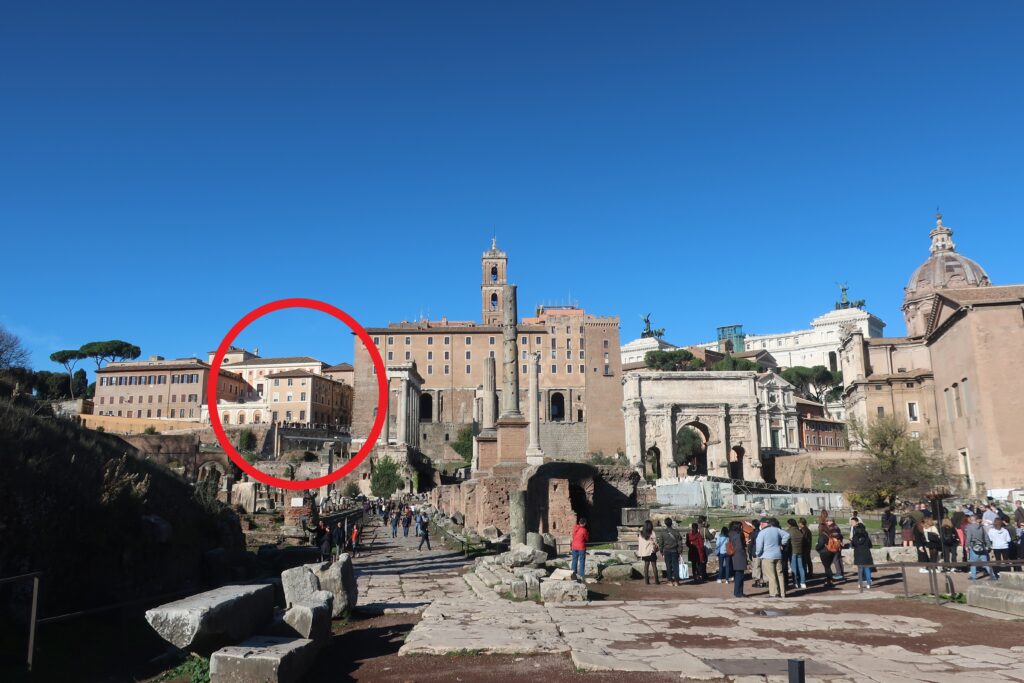
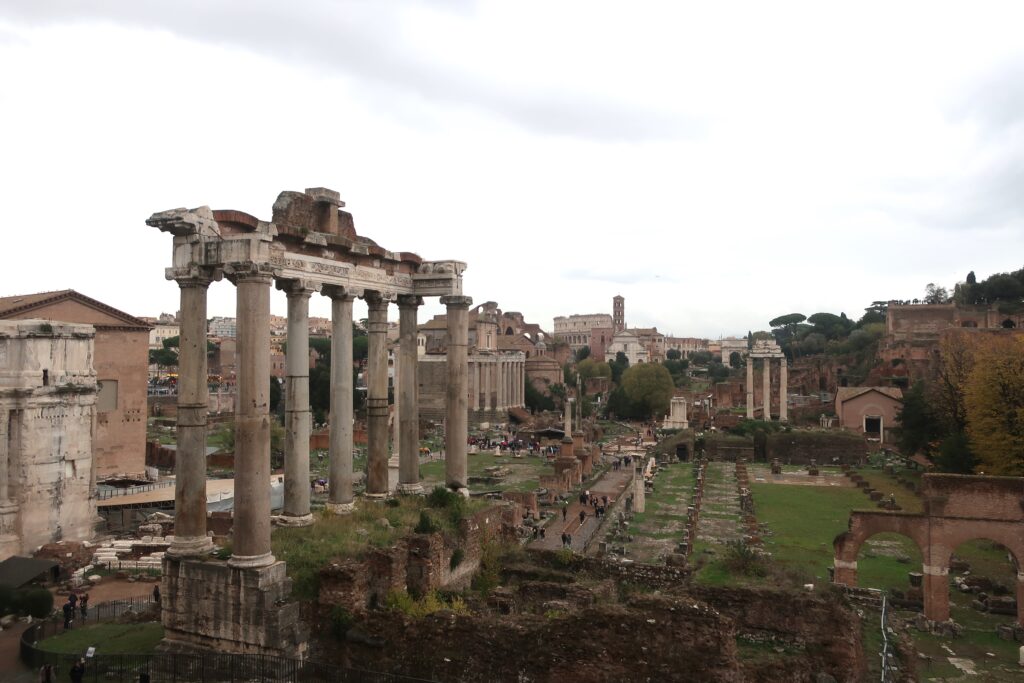
If you take a picture from the area just circled in red, it will look like the one on the right.
The Campidoglio offers a panoramic view of the Foro Romano. It is a wonderful spot to take the time to experience the Foro Romano from above. Mr. Masumi Ishinabe, a researcher on Rome.A visit to the ruins of ancient Rome should begin with a stand on this hill of the Campidoglio.I can understand why you state, "I am very happy to be here. Standing here, I felt a sense of anticipation. I had already made a reservation to visit the Roman Forum a few days later, and I was filled with excitement that I was about to enter the world of ancient Rome.
The Colosseum is the most famous of the Roman Forum's buildings, and is also accessible as part of the Foro Romano.
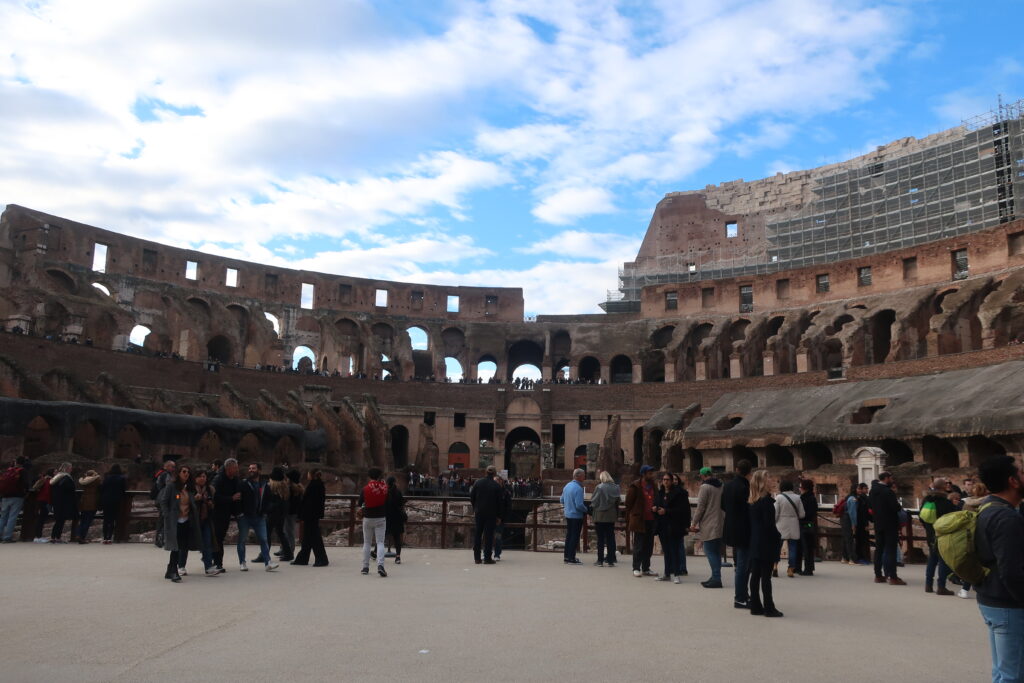
The spectator seating was built at a frighteningly steep slope and could accommodate about 50,000 people. 50,000 people.......almost the same as the Tokyo Dome! Almost the same as the Tokyo Dome! That's how big the crowd was. That was 2000 years ago. It is unimaginable.
We hope you will also refer to the interesting episode about the Colosseum in the following article.
pantheon
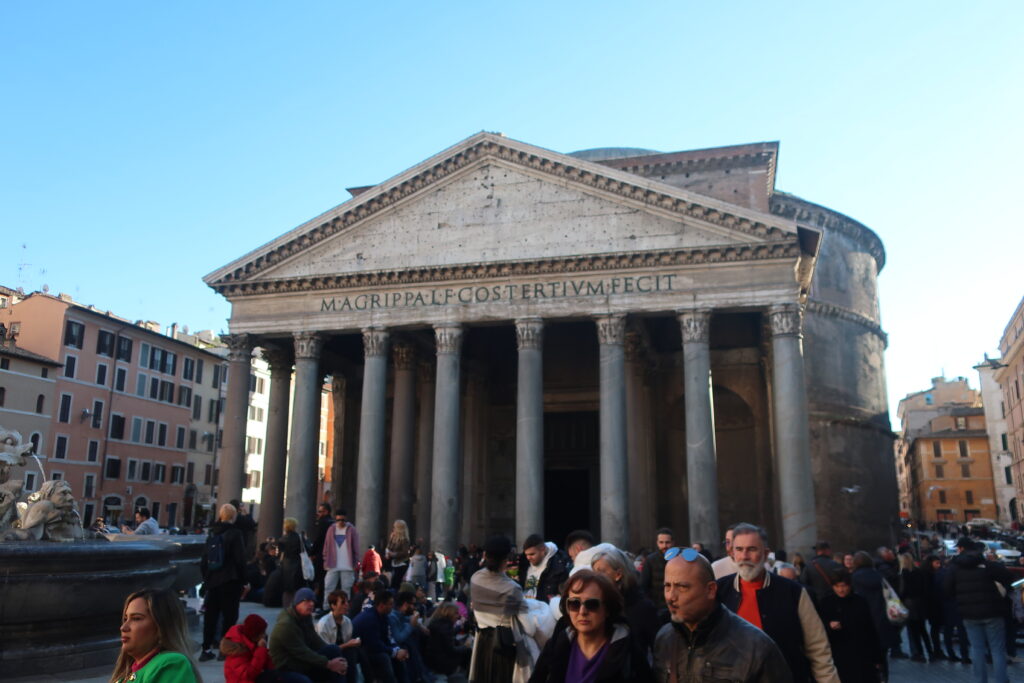
The Pantheon is considered the pinnacle of ancient Roman architecture. The temple is believed to have been built by Emperor Hadrian around 120-124 AD.
The Pantheon is within walking distance from the center of sightseeing such as Piazza Navona and Piazza di Spagna. You could say that it is in the middle of sightseeing in Rome.
The Pantheon appears suddenly as you walk from the plaza through narrow alleys and between buildings. When I saw it for the first time, I was surprised at its sudden appearance.
Masumi Ishinabe describes this pantheon as follows.
If you had asked Michelangelo or Bernini what is the most important thing in architecture, they would have immediately answered, "Proportion. Proportion is what makes Italian architecture what it is, in other words, the key to its appeal. There is no better place to understand what proportion is than in this Pantheon. (see alsoMasumi Ishinabe, Yoshikawa KobunkanAs Long as St. Peter's Stands: My Guide to Rome.(from)"
The Pantheon was praised by that Michelangelo and Bernini. Michelangelo designed the dome of St. Peter's Basilica, and Bernini created the masterpiece Basilica San Tandrea al Quirinale, which can be considered a small pantheon.
The Pantheon, the pinnacle of Roman architecture, had a tremendous influence on the Renaissance and Baroque.
It is also home to the tomb of Raphael, the genius painter, making it a must-see for Raphael fans.
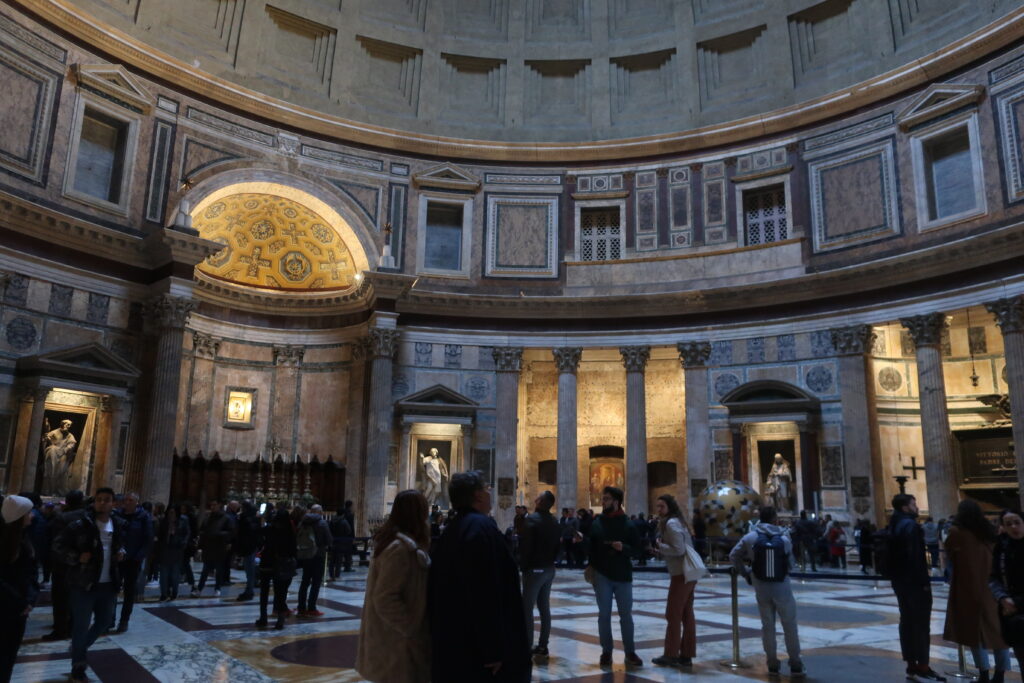
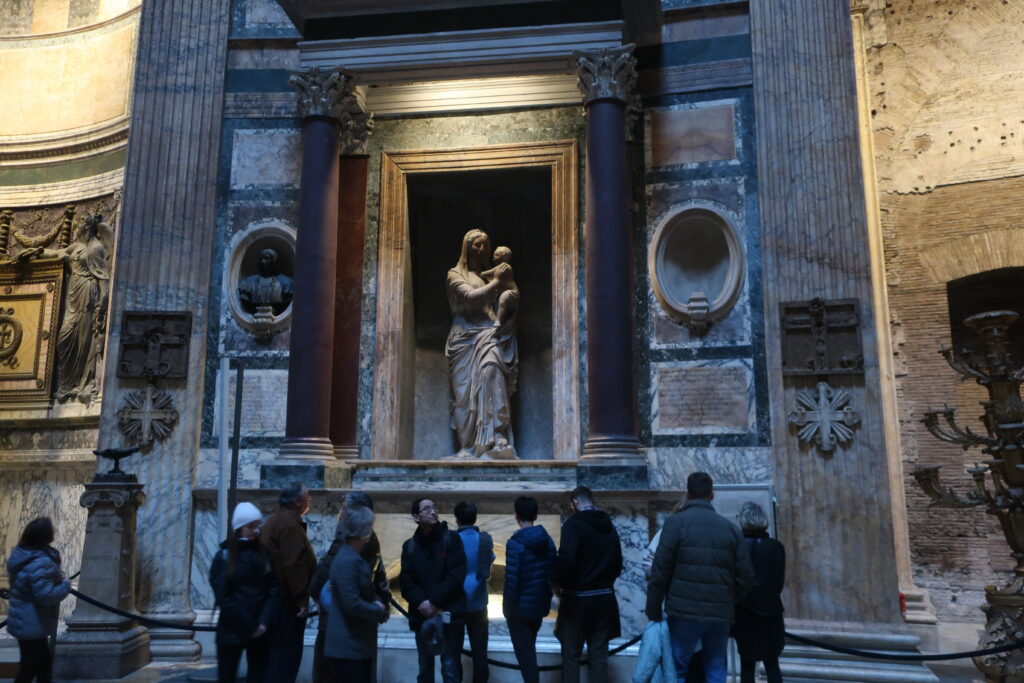
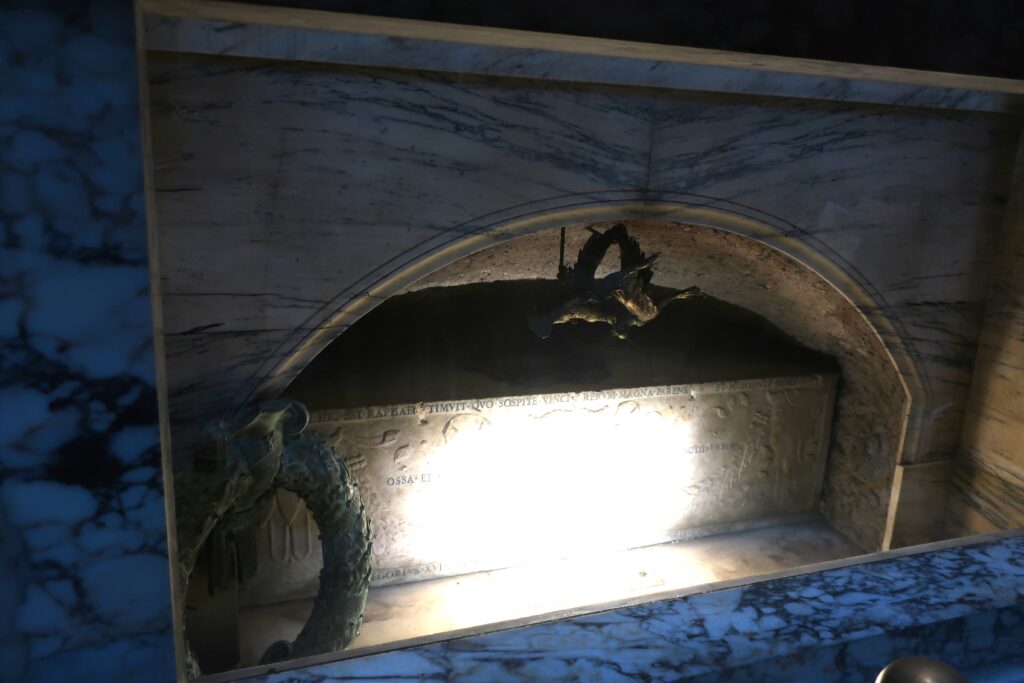
Plaza España and Barcaccia Fountain
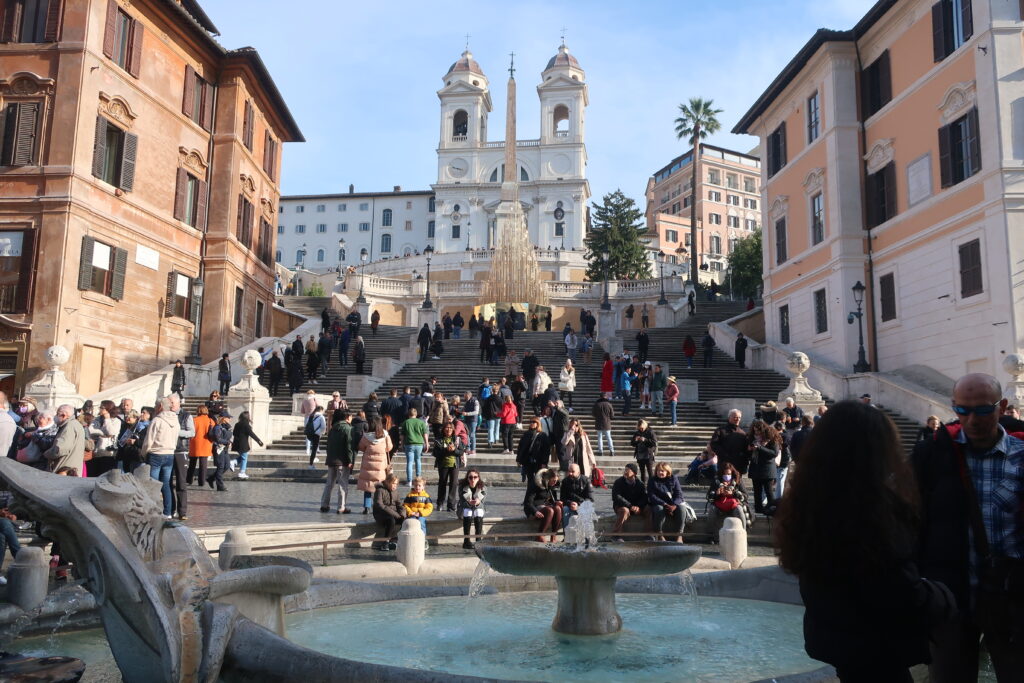
Piazza di Spagna, familiar from "Roman Holiday". This is another great space that I would highly recommend, even though it is the most royal of all.
The "Barcaccia Fountain" is particularly recommended in this plaza.
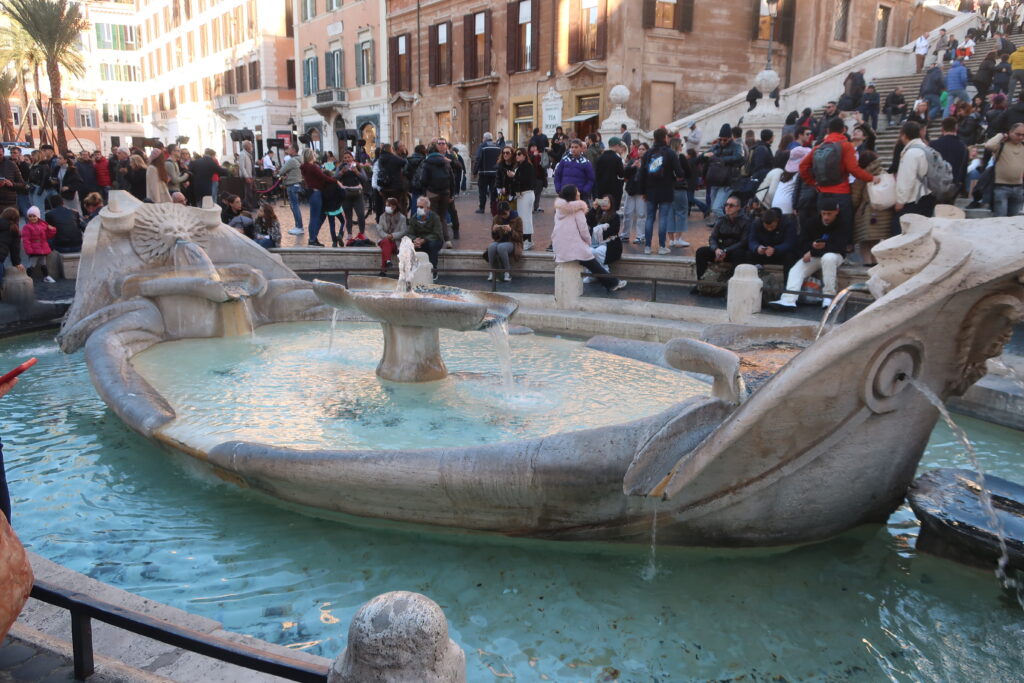
This fountain was built in 1629 by the Roman Baroque king Bernini. I will talk more about Bernini later, but I love this fountain. There are many fountains in Rome, but I think this "Barcaccia Fountain" is the best among them.
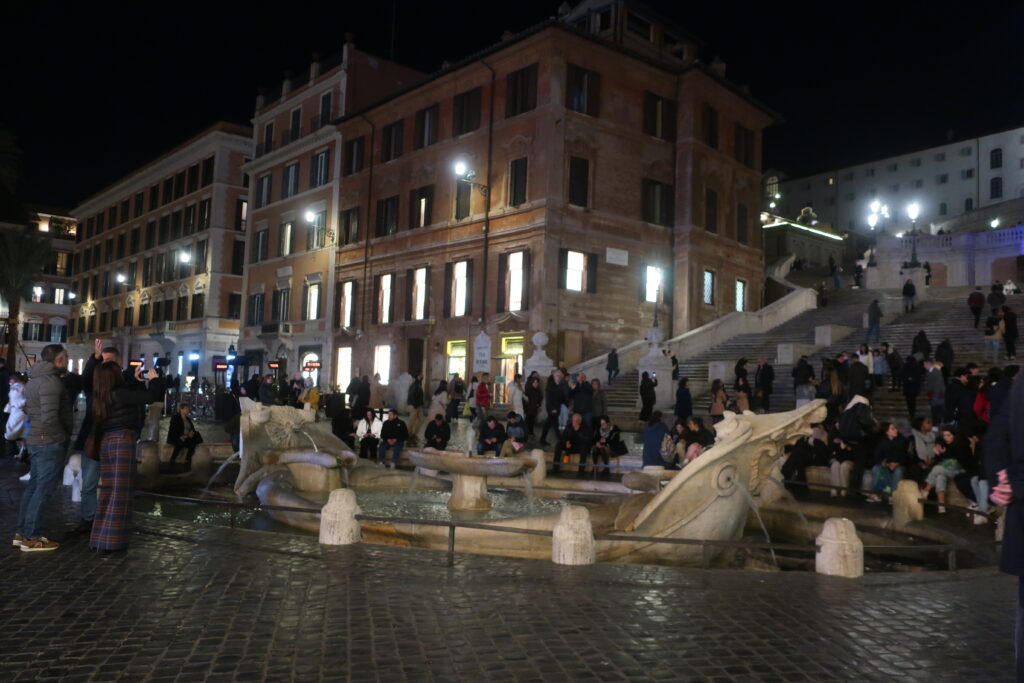
Barcaccia at night is also a great experience. The sound and movement of the water flowing in a trickle is truly pleasant. Even in the bustling Plaza de España, the fountain is a source of peace and tranquility.
I love this fountain and visited it many times during my stay in Rome. At first glance, the "Barcaccia" may not appear to be very fancy or showy, but it is the quintessential example of Bernini's art. Luxury and splendor are not the only aspects of Roman art.
This square is the best place to experience the beauty and openness of Rome. I especially recommend this "Barcaccia Fountain". If you know that this fountain is the best example of turning a geographical disadvantage into art, you will probably see this fountain in a different light. Please refer to the following article for more details.
Borghese Museum
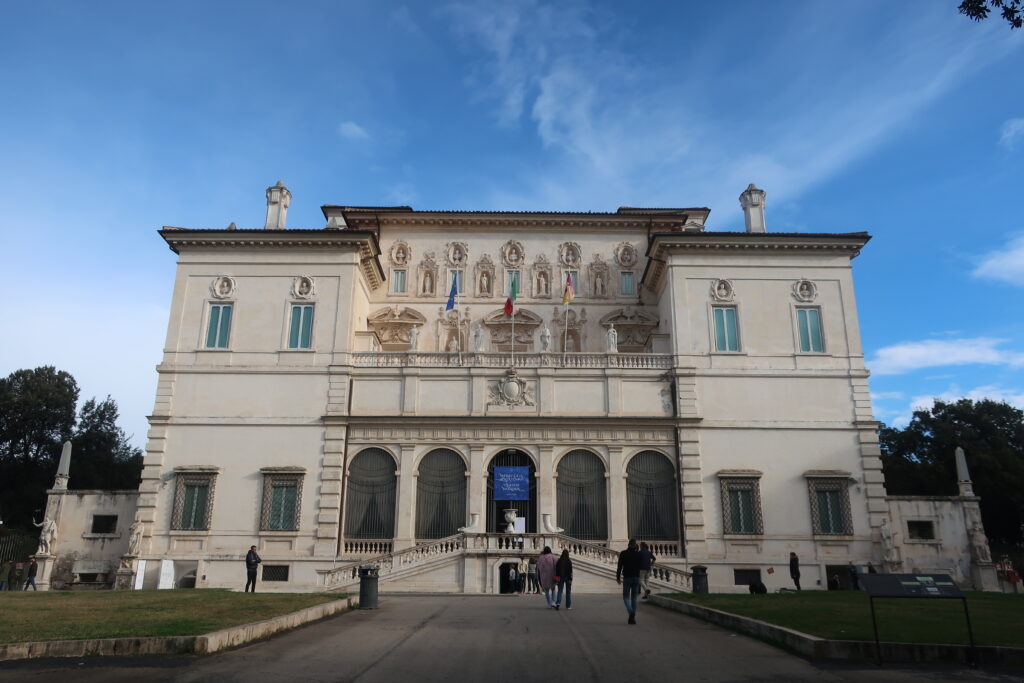
This is one of Rome's leading museums, displaying the collection of Sipione Borchese, who became the patron of Bernini, the king of Roman Baroque art.
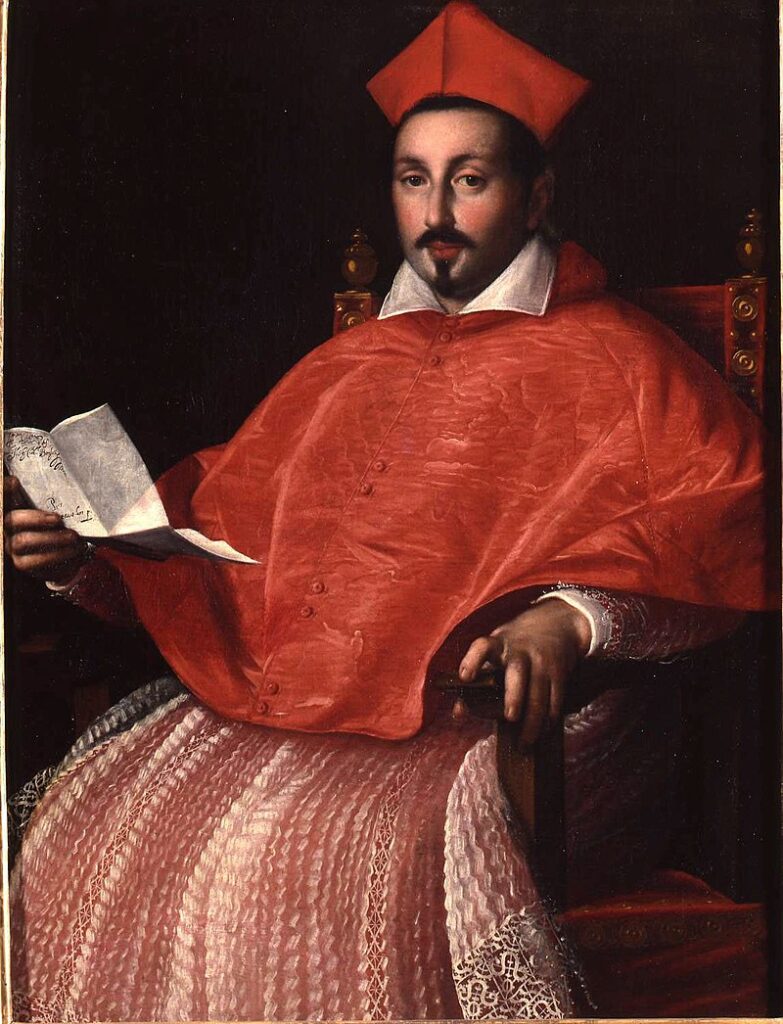
It houses Bernini's early works as well as numerous works by Caravaggio. It is a popular museum, so be sure to make reservations early or you will not even be able to enter.
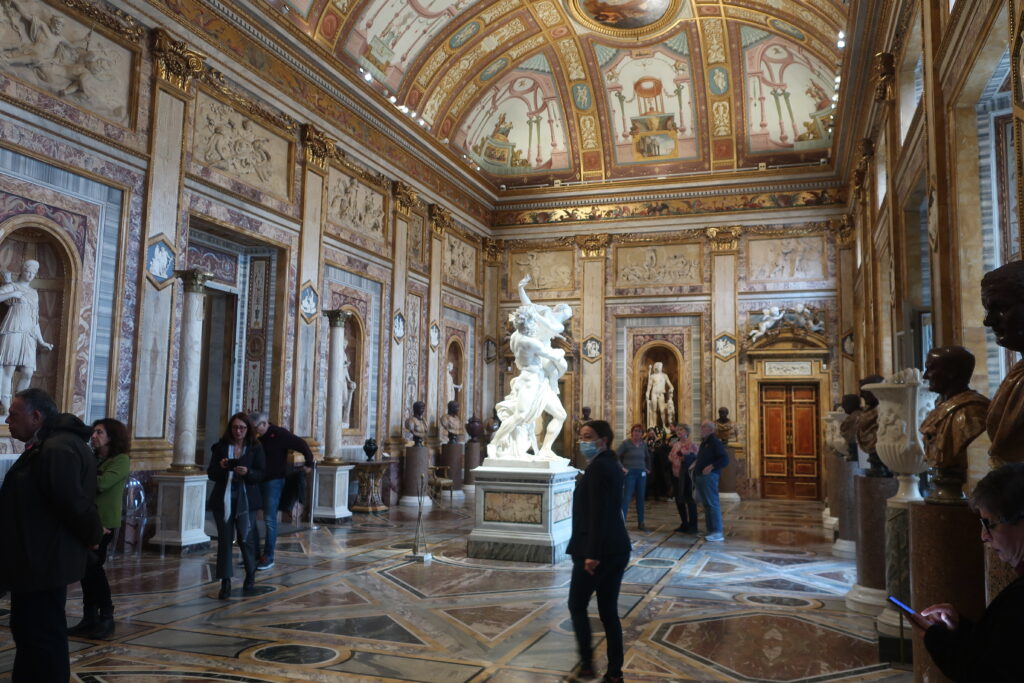
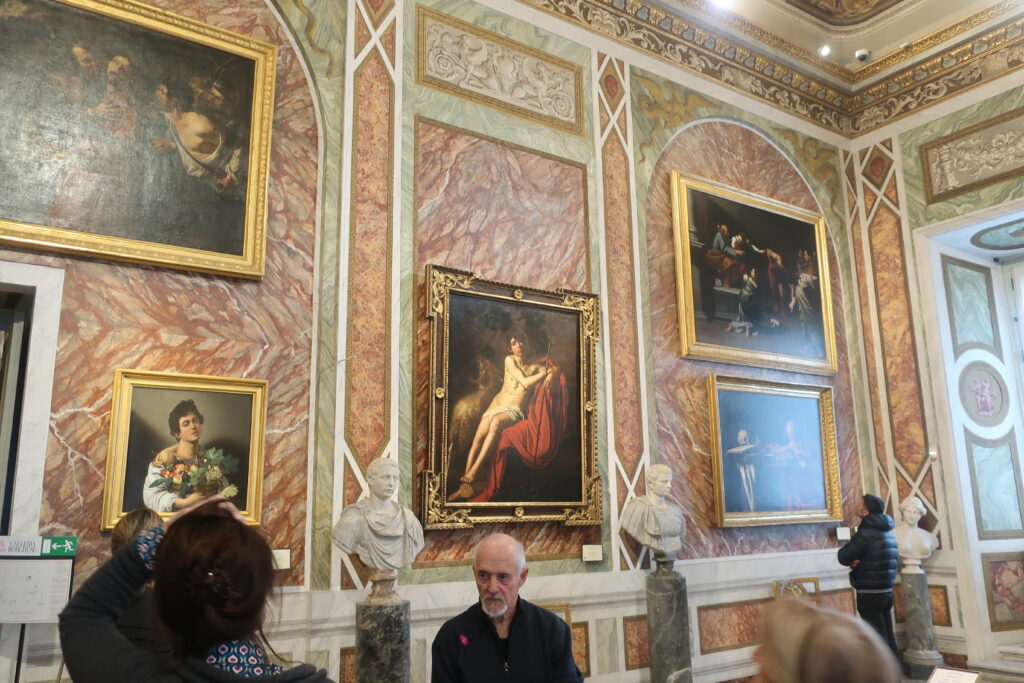
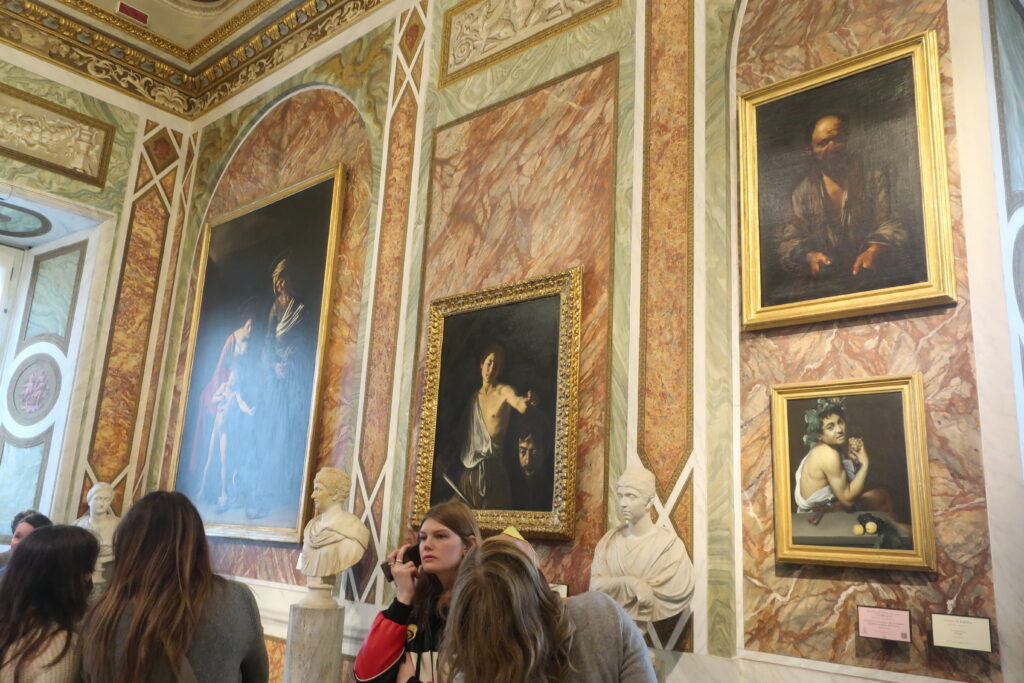

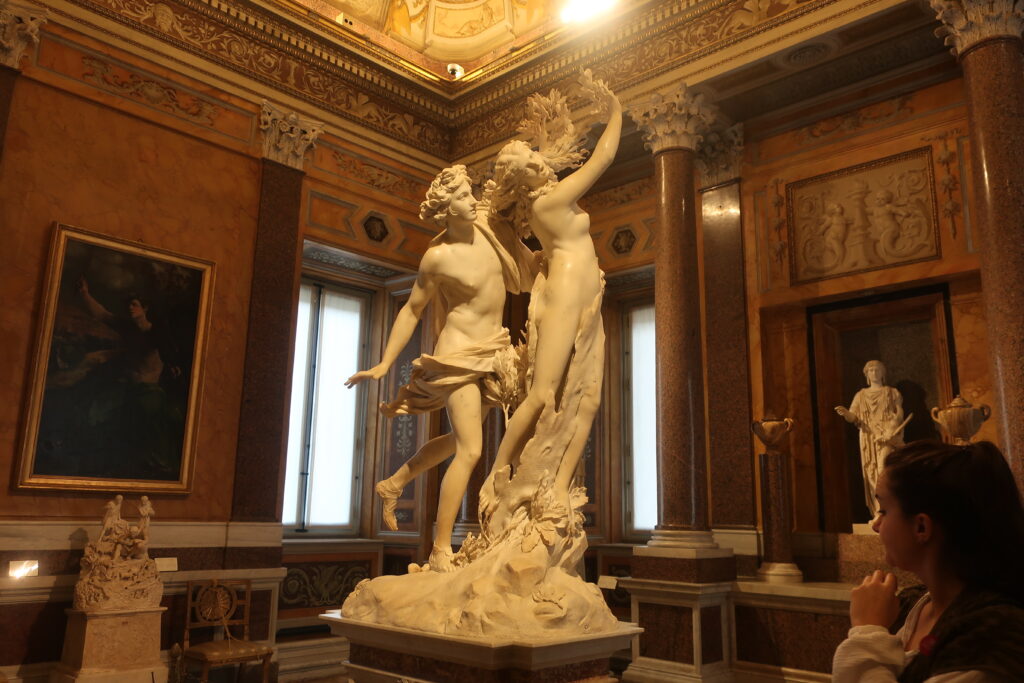
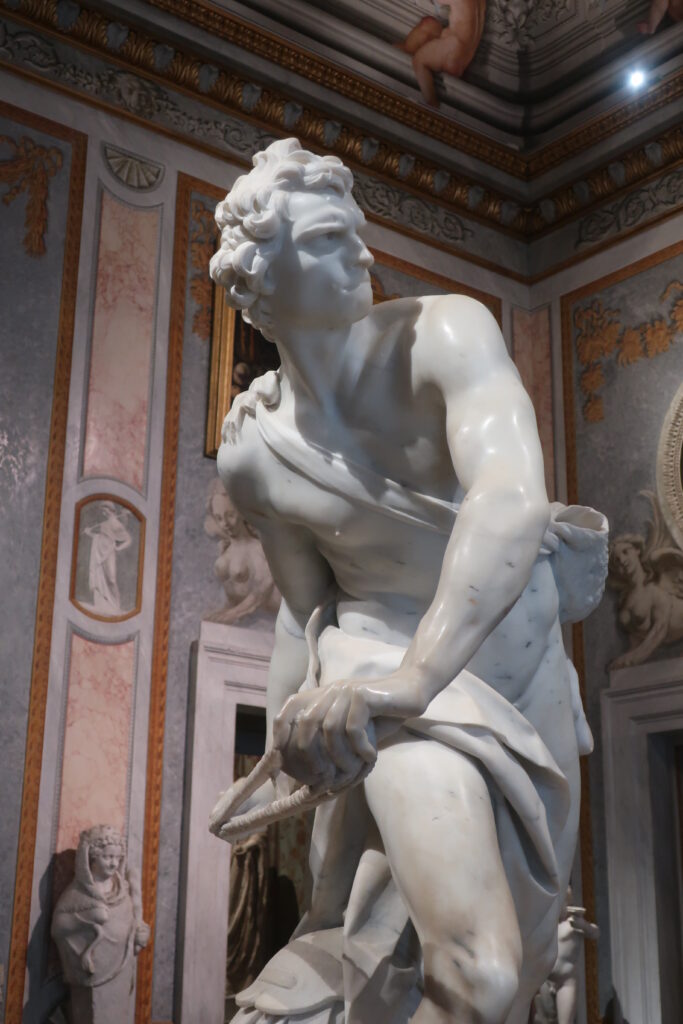
One of the best things about this museum is the Bernini in the photo above.The Plunder of Proserpina."andApollo and Daphne.It is a It is a work of genius, bursting with the superb virtuosity of the young Bernini. You will be surprised when you see it. I was also astonished.
Of course, it is also a very important museum that is an essential part of the Caravaggio pilgrimage. It is definitely worth including this museum in your itinerary. It is a bit far from the center of the city, but a leisurely stroll through the park is a very luxurious way to spend some time. I highly recommend this museum.
Statue of St. Cecilia in the Basilica of Santa Cecilia in Trastevere
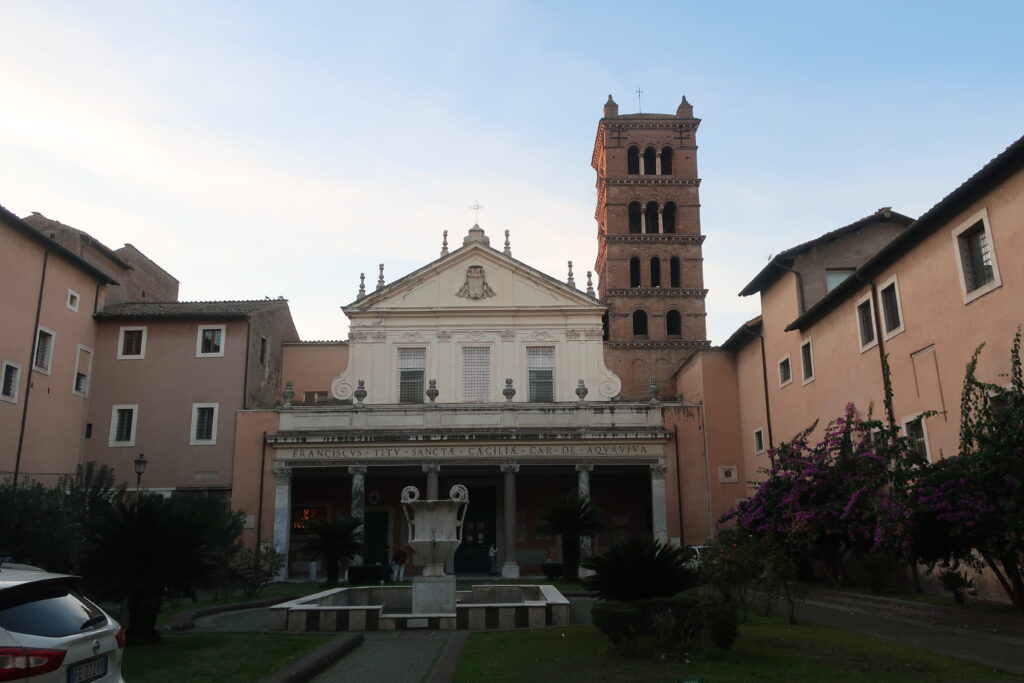
I have introduced some of the most popular sightseeing spots in Rome, but from here, I would like to introduce some wonderful churches that are not often introduced in package tours but that I highly recommend.
First up is the historic church of Santa Cecilia in Trastevere, located in the Trastevere district.
The church here is recommended because a wonderful sculpture of "St. Cecilia" is enshrined here.
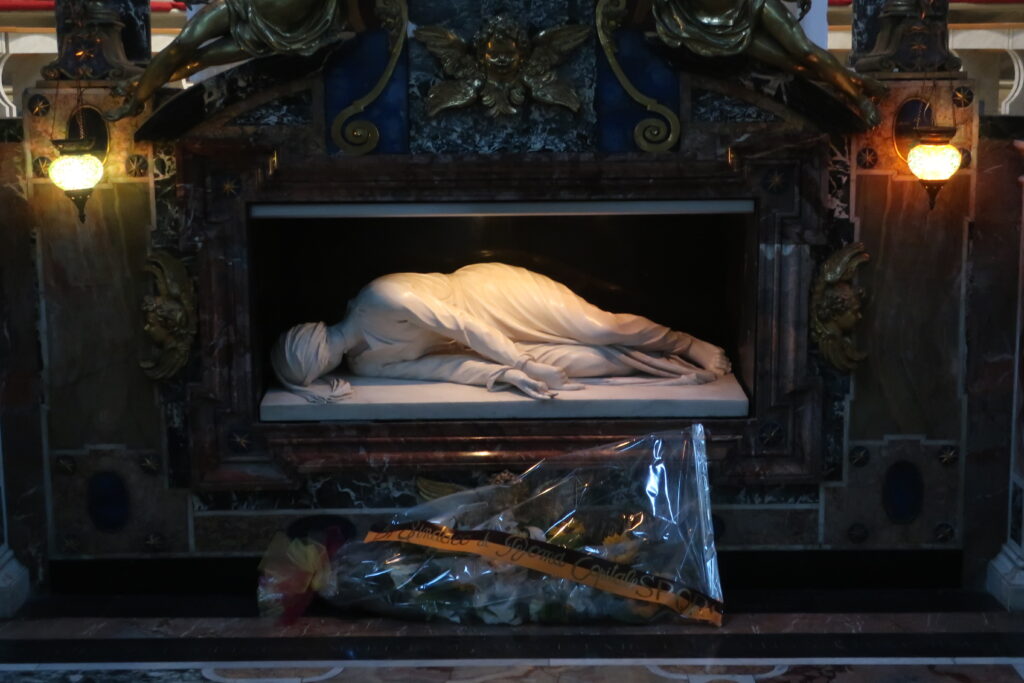
St. Cecilia (Santa Cecilia) was a martyr of the Roman Empire around the second century, famous as the patron saint of musicians and the blind. The wounds on her neck received during her execution are still visible on this statue.
The statue itself was created by Stefano Maderno in 1600, and when her tomb was opened in 1599, the whole of Rome was awed by the "miracle" of finding her body in its original state. Maderno said, "I made a sculpture of St. Cecilia exactly as I saw her there.
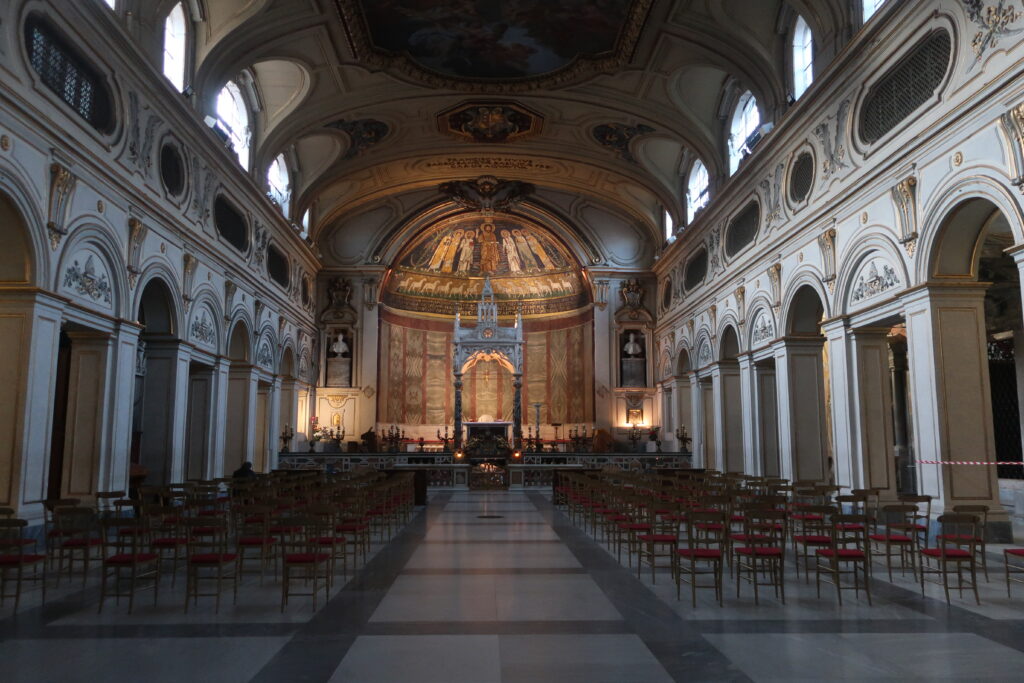
It was dusk when I visited, so hardly anyone was in the cathedral. What luck!
The dimly lit cathedral is solemn and majestic. The quiet and still interior of the church. How beautiful!
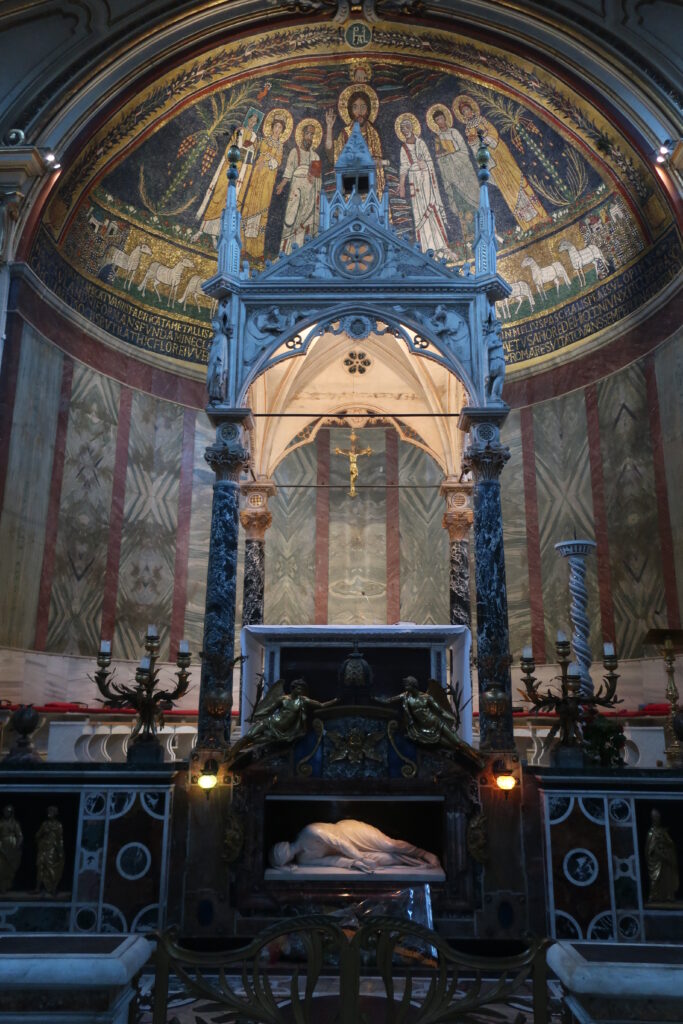
And at the bottom of that central altar was enshrined the "Martyrdom of St. Cecilia" that I had requested. I have rarely seen a church with this kind of structure.
Looking back at this photo now, I feel something extraordinary about this sculpture.
Rome is home to many excellent sculptures left by Bernini, Michelangelo, and others. However, the one that struck me the most during my stay in Rome last year was undoubtedly "The Martyrdom of St. Cecilia". I regret that I was only able to visit this cathedral once due to time constraints. Even now, as I write this article, my heart is aching to see the statue just one more time.
I can't really explain why I became so obsessed with this statue. But the overwhelming power of the statue literally knocked me over. It was that overwhelming.
I would highly recommend this statue to everyone.
Church of Santa Maria de la Vittoria with Bernini's masterpiece "The Laws of Saint Teresa".
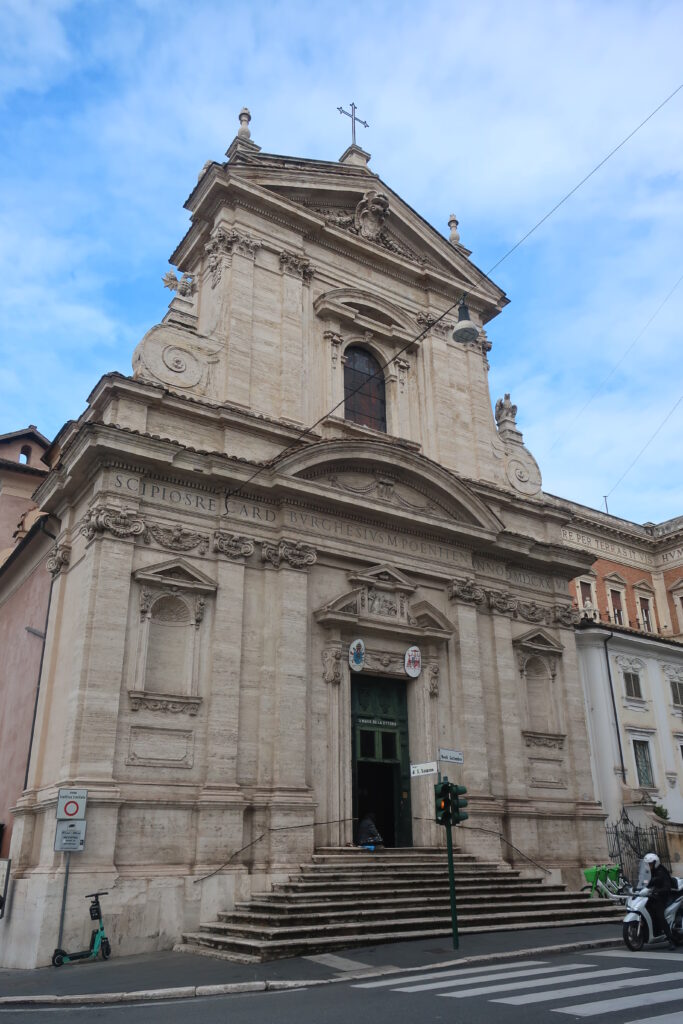
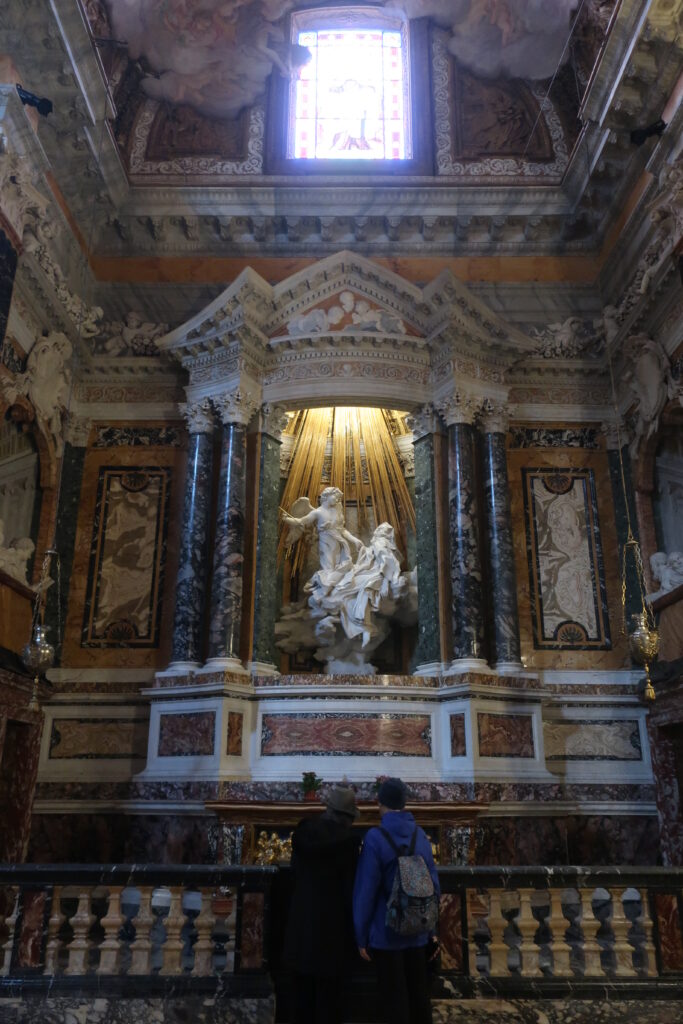
The Church of Santa Maria degli Vittoria, where "The Eucharist of St. Teresa" is located, is in an area close to Termini station. I stayed near the Termini station, so I walked there, but the Repubblica metro station is conveniently close.
From here, I will introduce churches related to my favorite Bernini, but unfortunately, Bernini is not that well known in Japan.
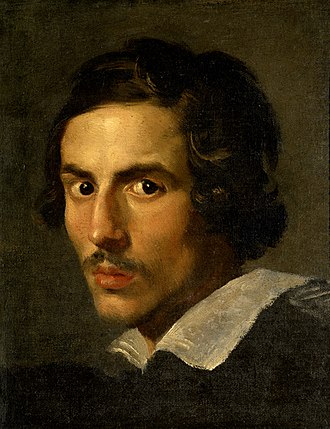
Bernini is best known for this work in St. Peter's Basilica.
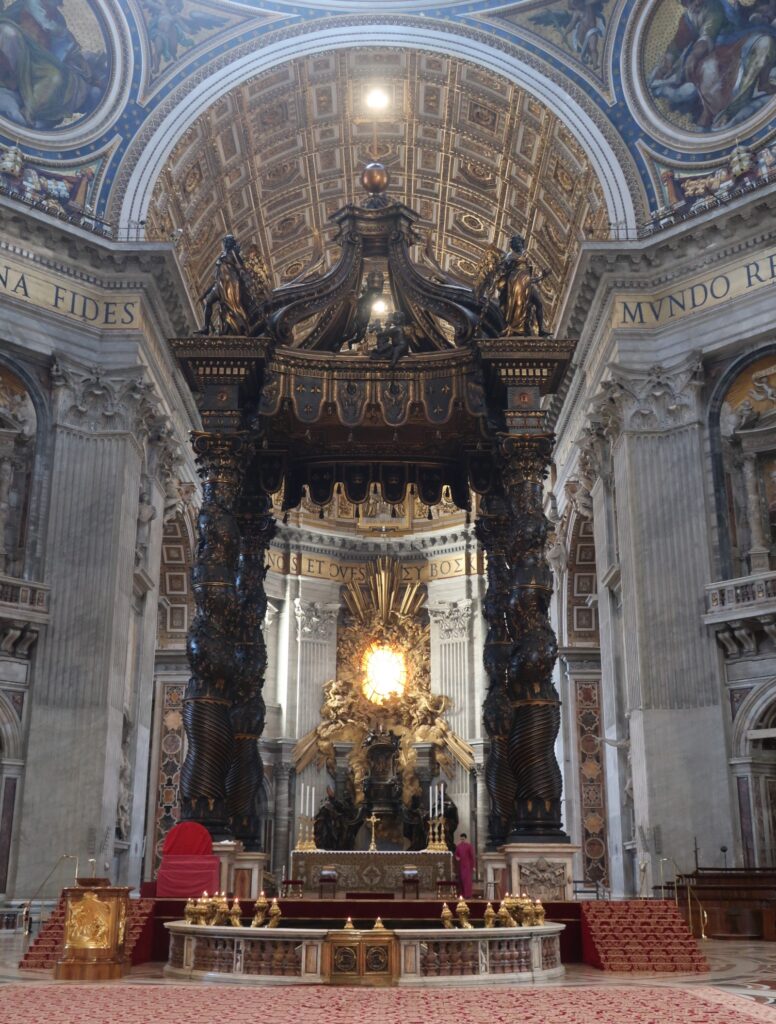
When I first saw Baldacchino, I was struck speechless by its unique appearance.
And beyond the baldacchino is placed Cathedra Petri, another Bernini masterpiece.
andThe beauty of St. Peter's Basilica, designed by Michelangelo and Bernini, is explained in the Vatican, Italy (Part 6).As I mentioned in the article "The Cathedral of the Vatican", Bernini also designed the decorations inside this cathedral and the Vatican Square.
Why the Vatican and Rome were so beautiful was because of the great genius of Bernini.
But that is not well known...
by Masumi Ishinabe.How unfortunate it is that so many people visit Rome and find it so fascinating, yet are unaware of the main body of its charms and its creator."It is true to say that "Bernini is a great man". But on the other hand, if you know more about Bernini, you will definitely enjoy Rome more and more. In fact, I enjoyed Rome so much last year that I couldn't help but marvel at how profound the city was. I couldn't help but marvel at how deep Rome was.
Bernini's masterpiece sculpture is "The Ecstasy of Saint Theresa".
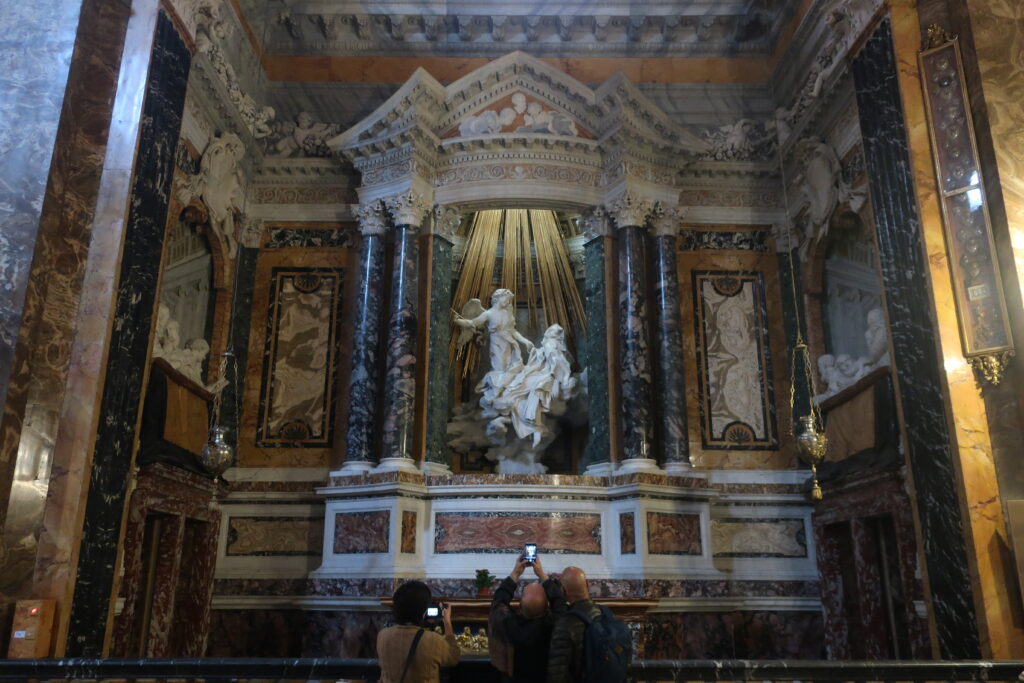
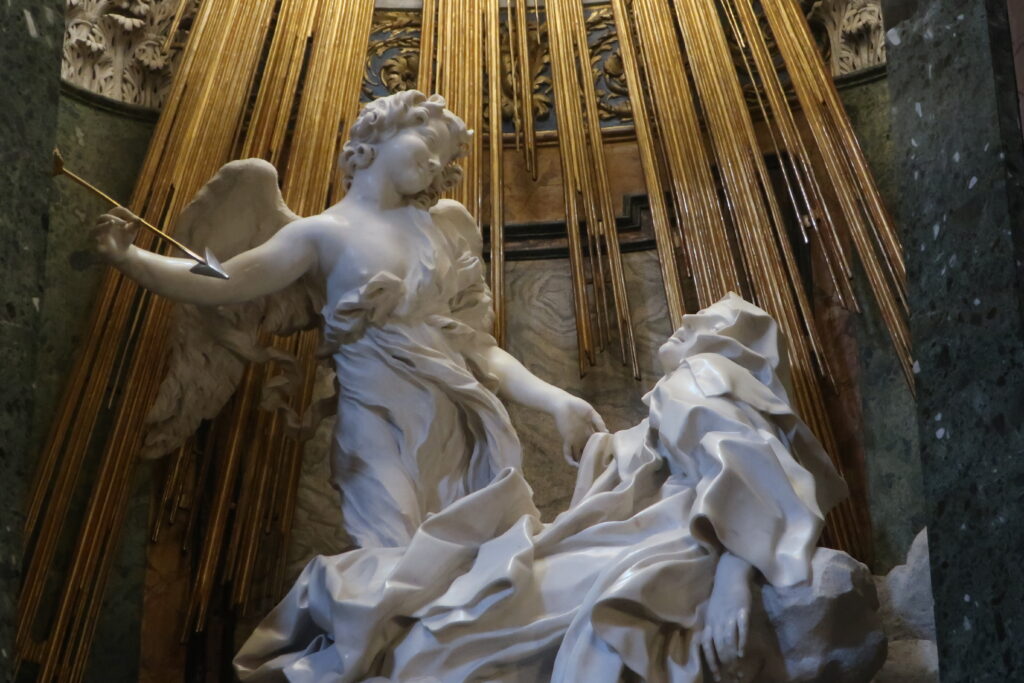
The expression of the angel and St. Theresa...! And Bernini's signature expression of the folds of the robe. The rippling of the robe, which is impossible in nature, truly embodies the mystery of God.
The light shining from above illuminates the face of St. Theresa, who is joyfully celebrating. The face of the angel looking down is slightly darkened, but this is also a wonderful effect. Bernini calculated the effects of light and shadow in every detail. This is comparable to the lighting techniques used in modern theater.
Still, it's wonderful..! I can see why this sculpture is considered a baroque masterpiece.
I visited this church many times during my stay in Rome. No matter how many times I see it, I am always amazed. It is just shocking to see such a perfect manipulation of light at a time when there was no electricity and no lights. Bernini must have been a great artist.
Sant'Andrea al Quirinale Cathedral
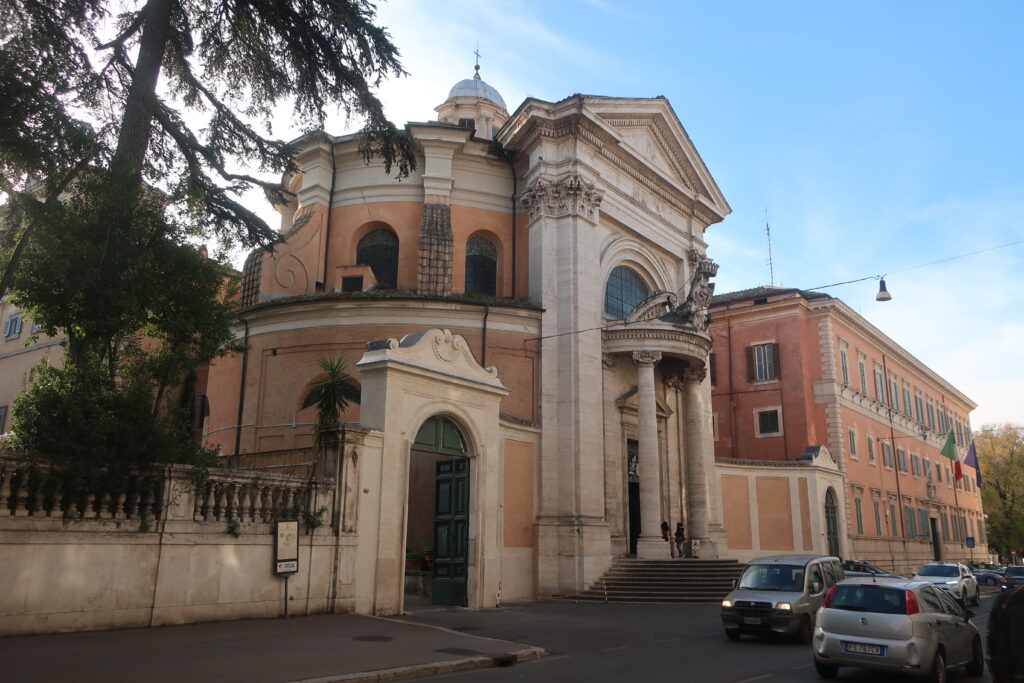
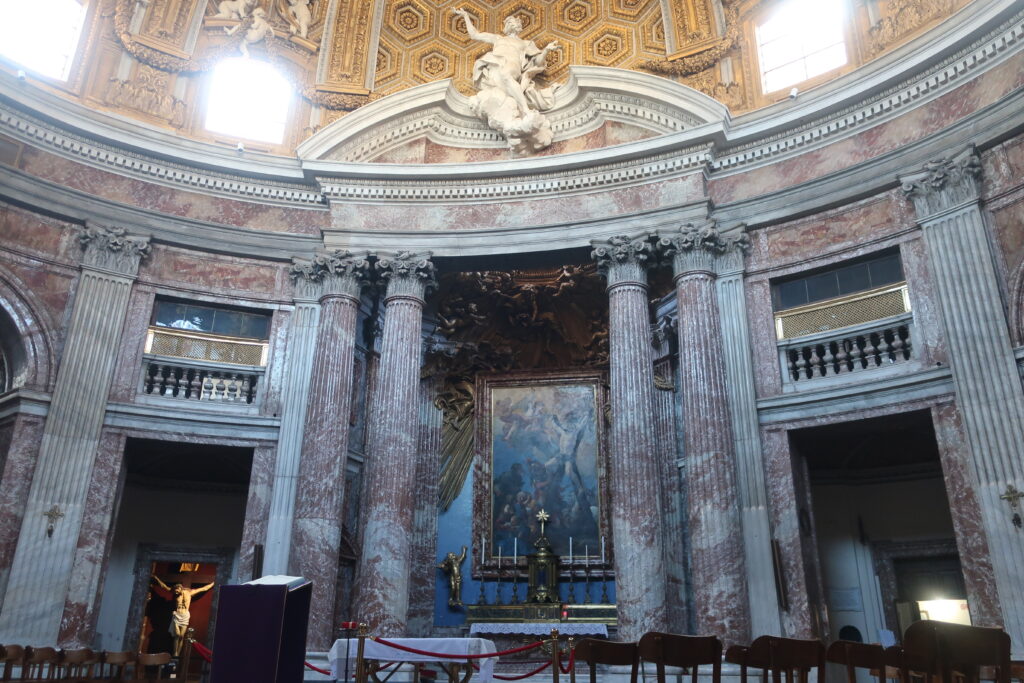
The Basilica of San Tandrea al Quirinale is within walking distance from Termini station. I was also walking to this cathedral because I was staying near Termini station.
Bernini designed this cathedral in the unfavorable conditions of a horizontal lot. It would be easier to design a vertical or square lot. In a normal situation, the design would have been stuck in this unfavorable situation, but Bernini was different. He was a man who was more energized by adversity.
The result is the imposing Pantheon by Bernini! It is said that this work was the architecture that he himself loved the most.
It is amazing how popular this place is nowadays for weddings. I am too envious to have my wedding in such a wonderful cathedral...!
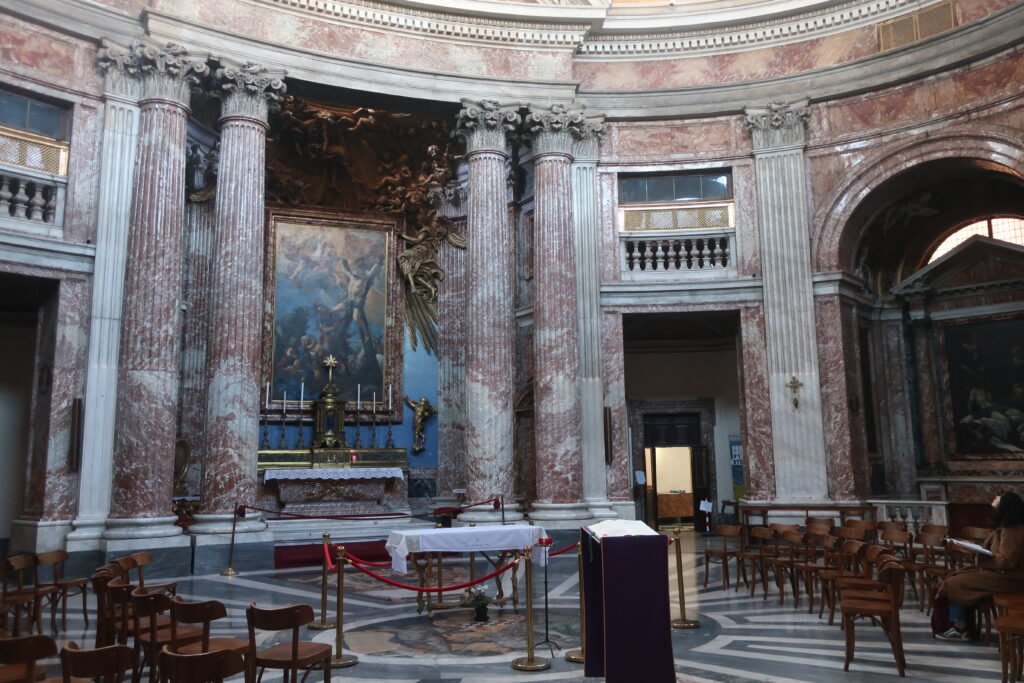
I too gasped the moment I entered this cathedral. What is this place? I was astonished. And I couldn't help but say, "It's the Pantheon....
From its color to its shape, it looks just like the Pantheon. However, upon closer examination, I was astonished. The Pantheon is a perfect circle, but this cathedral is an oval. But despite the fact that the Pantheon is an oval, there is a perfect harmony here that makes you forget that it is even an oval.
I visited at the end of November or early December, when the sun was setting very early. I also visited this cathedral at sunset.

For some reason, the church is almost empty at dusk. You have this wonderful space almost to yourself. In the silence, you can enjoy this church, which Bernini himself loved, to your heart's content.
Bernini also stood in this empty church and consoled himself. I spend time slowly, imagining such a scene.
Bernini designed this cathedral overcoming the unfavorable conditions of having only a horizontal lot. I am moved by Bernini's spirit.
I was instantly captivated by this cathedral and visited it four times during my stay in Rome. Each time, I marveled at the beauty and perfect balance of this Bernini pantheon of cathedrals.
The Basilica Sant'Andrea al Quirinale is my favorite church in Rome along with St. Peter's Basilica. It is not well known in Japan, but I highly recommend it as an architectural masterpiece.
It is easily accessible from Termini station and Barberini subway station, so why not visit?
Basilica of San Carlo alle Quattro Fontane
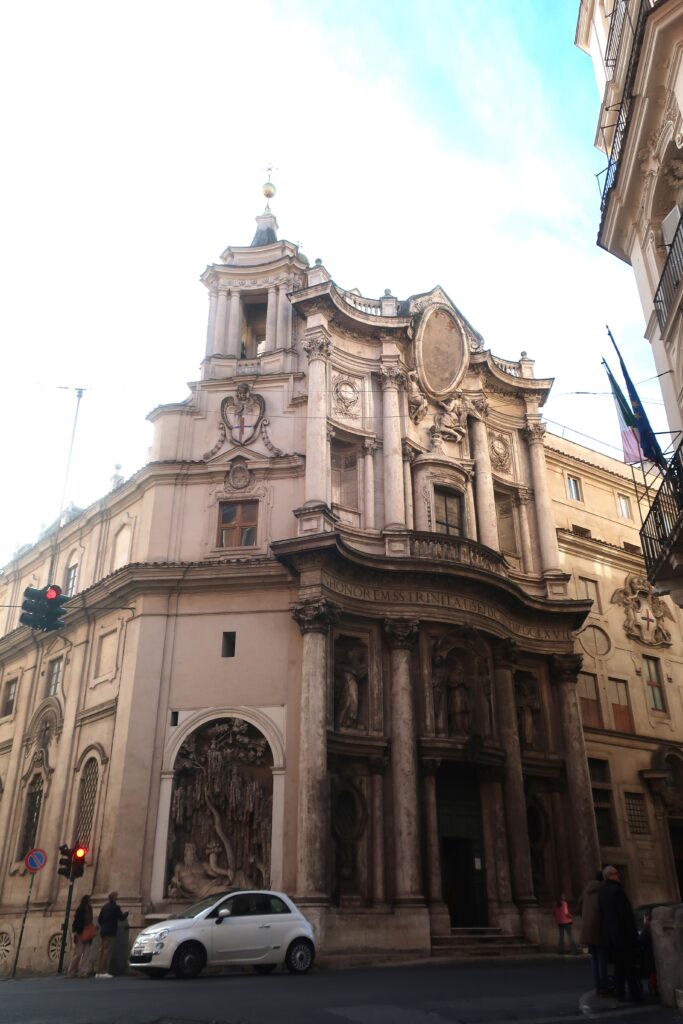
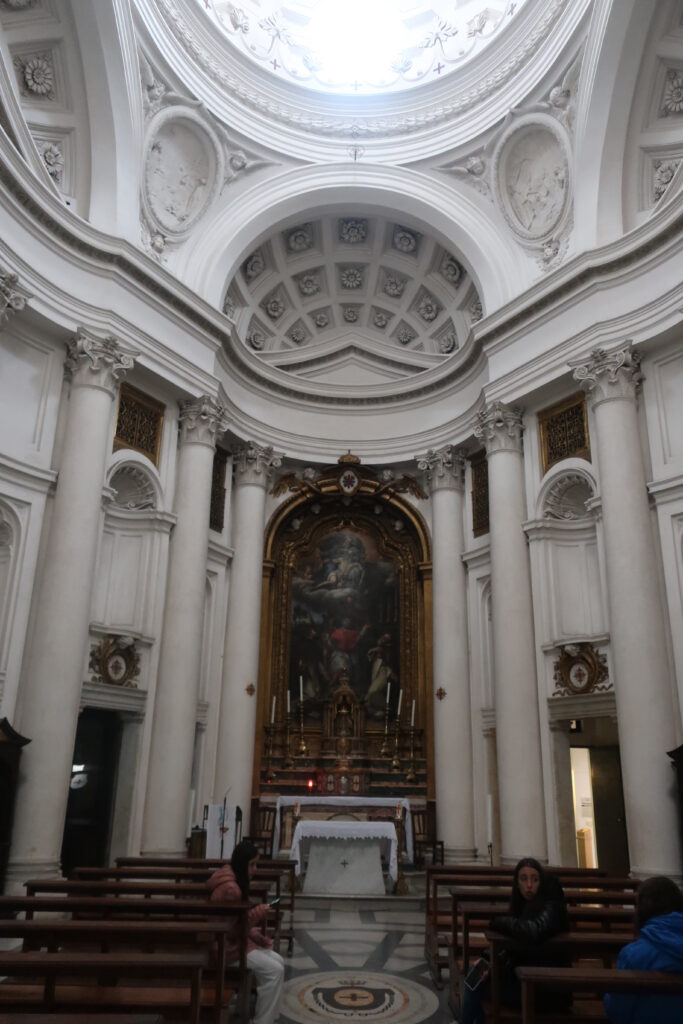
One of the previous pages introduced Bernini's architectural masterpiece, the Basilica Sant'Andrea al Quirinale, and in fact, 150 meters away from the Basilica is the architectural masterpiece of Bernini's rival, Borromini.
I also viewed this cathedral as a set with Bernini's Sant'Andrea al Quirinale.
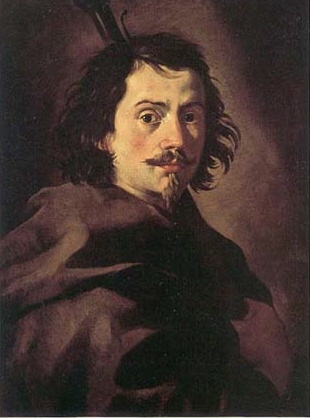
For more information about Borromini(26) Bernini's Failure and Downfall: The Death of Patron Urbanus VIII and the Rise of the Prodigy Borromini."As mentioned in the article "The Great Architect", he had the opposite personality and style of Bernini, and was the subject of a heated battle when Bernini was ousted from office. He was an architect of unmistakable talent and originality, and his work was worthy of the title of "genius. It is nothing short of a miracle that Borromini's masterpiece and Bernini's masterpiece stand almost next to each other.
I was also astonished the moment I entered this cathedral. I was shocked by the splendor of Bernini's Sant'Andrea al Quirinale when I entered it, but this church is no less impressive. It is indeed a wonderful church.
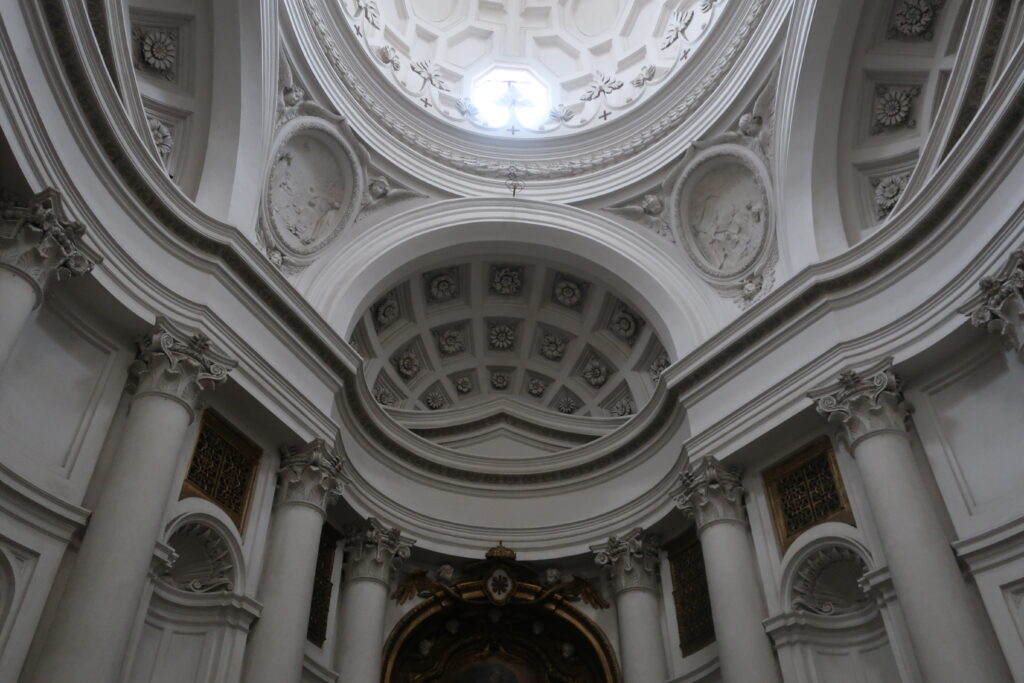
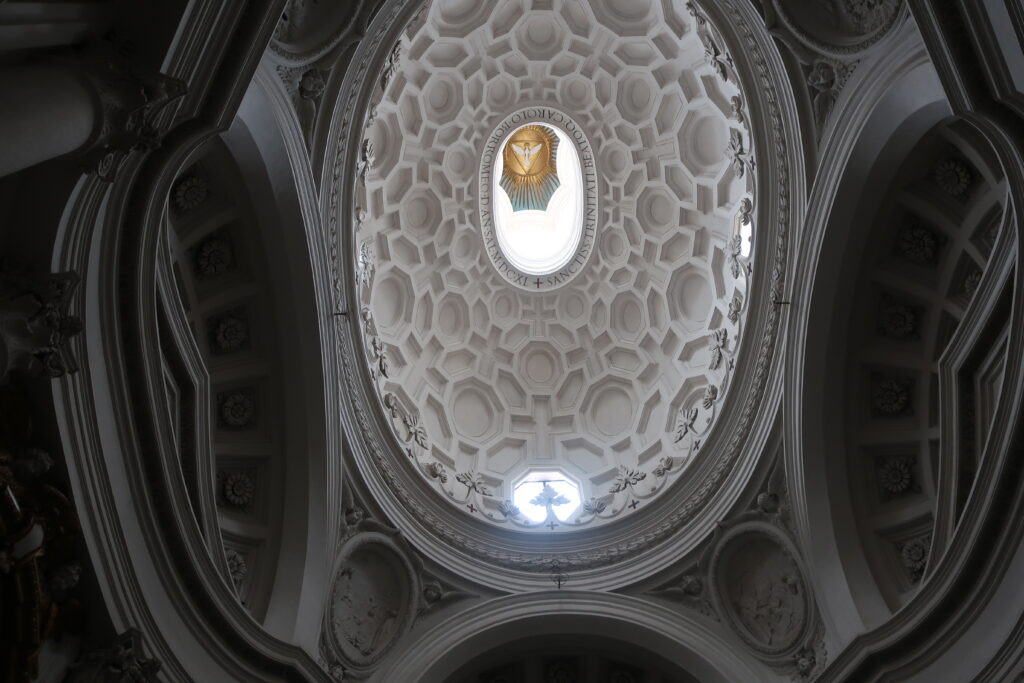
This is the dome ceiling area.
I too was speechless at the decoration of this dome section. This unpredictable curve! The interplay of curves and straight lines expressed in sharp black and white colors overwhelms me.
And the beauty of the decorations scattered throughout it...!
Frankly, in terms of impact, it surpasses Bernini's Sant'Andrea al Quirinale. I don't know what it is, but it feels like being hit with a tremendous punch. That is this cathedral.
If you ask me to choose between Bernini's Sant'Andrea al Quirinale and Borromini's Sant'Andrea alle Quattro Fontane, I honestly cannot. Both are too overwhelming.
As they are said to be opposites to begin with, these two architectural genres are too different to be compared. In this case, it is a matter of "taste. But even so, I cannot say which one I like better. I can't choose. I like them both too much. Both cathedrals are highlights of Rome. I suggest you to experience the competition of the great geniuses of Rome. Both are easily accessible from Termini station. You can also take the metro to the nearby station. I highly recommend a visit.
Church of San Francesco a Ripa "Blessed Ludovica Antoni
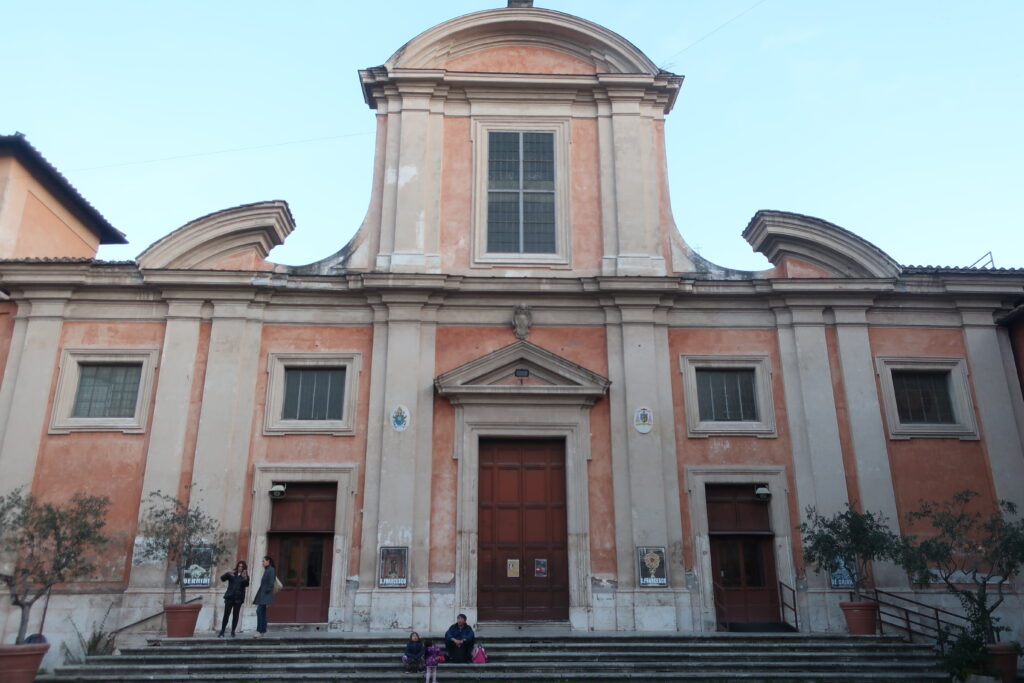
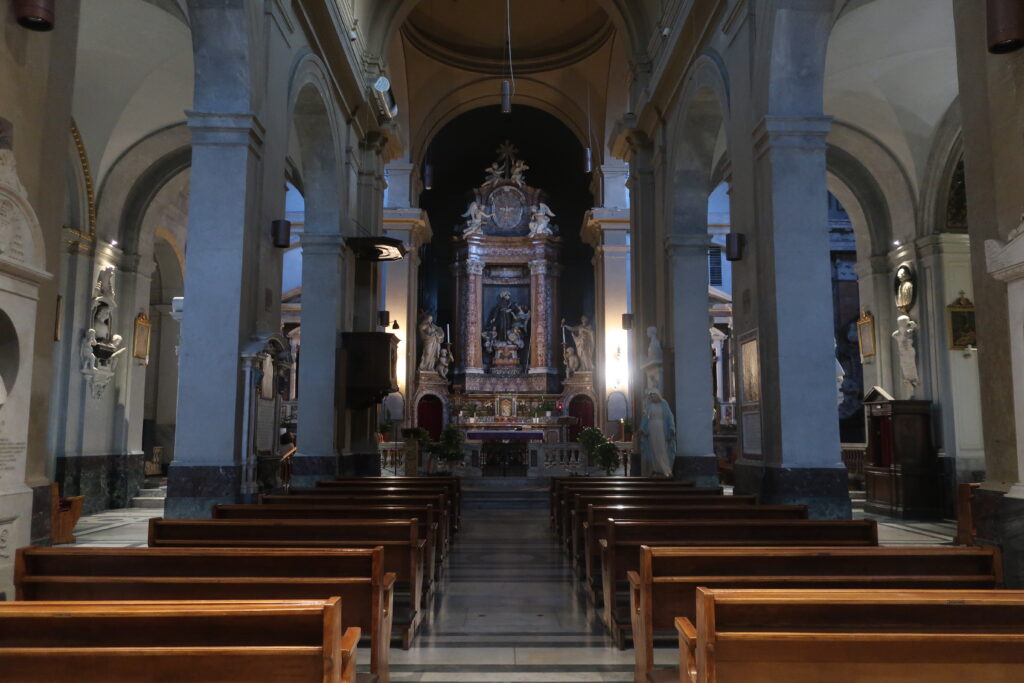
This church is located in the Trastevere district, a short distance from the area where the Colosseum and Piazza di Spagna are located. Therefore, it is a little difficult to access.
But in this neighborhood is the famous "Martyrdom of St. Cecilia," which I mentioned earlier.Basilica of Santa Cecilia in Trastevereand later in this article.Raimondi ChapelIt is recommended to visit all of them at once.
The highlight of the church is "Blessed Ludovica Antoni," a masterpiece from Bernini's later years.
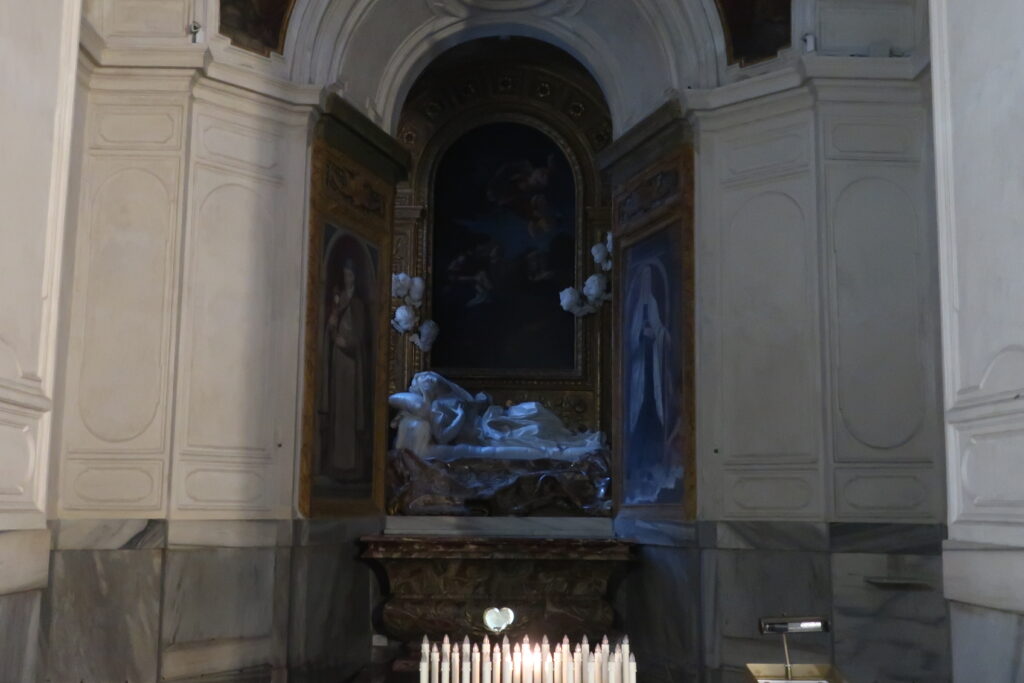
This is "Blessed Ludovica Albertoni". The interior of the hall is dimly lit at dusk. The sculpture is illuminated by light through Bernini's signature light window. It seems as if it is illuminated by moonlight, which is probably unique to this time of day. The beauty and fantastic atmosphere took my breath away.
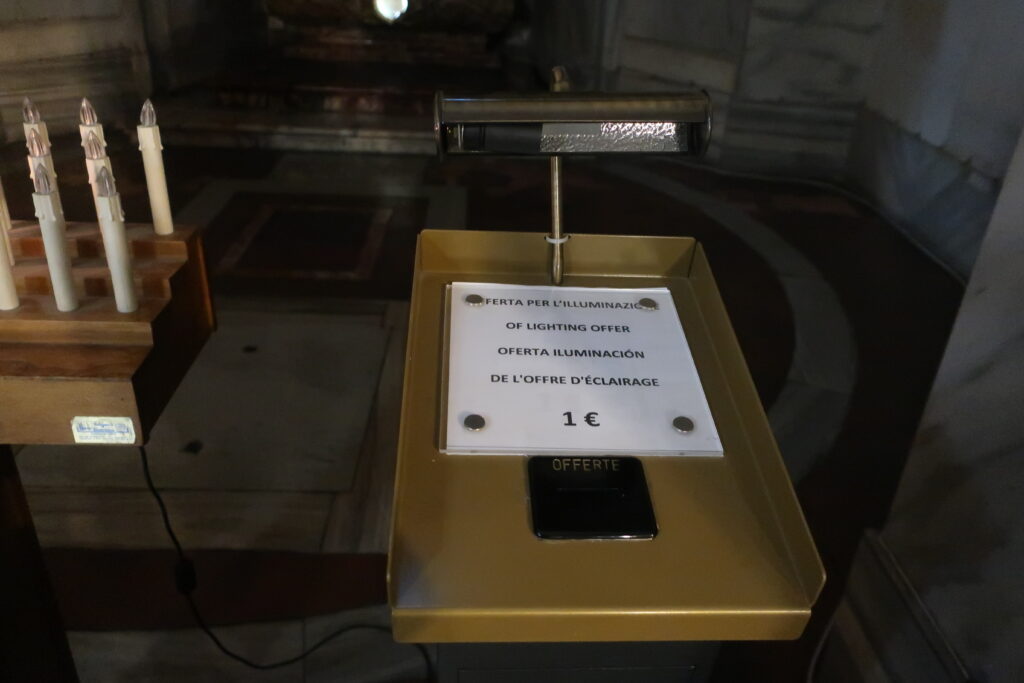
The church is also equipped with a light fixture. One euro is all it takes to turn on the light. Mr. Masumi IshinabeThere is no better example of church lighting detracting from the effect of a work than in this chapel. If there are lights on, they should be turned off.I was warned against it, but since I'm here, let's turn it on. I dare you to feel the difference.
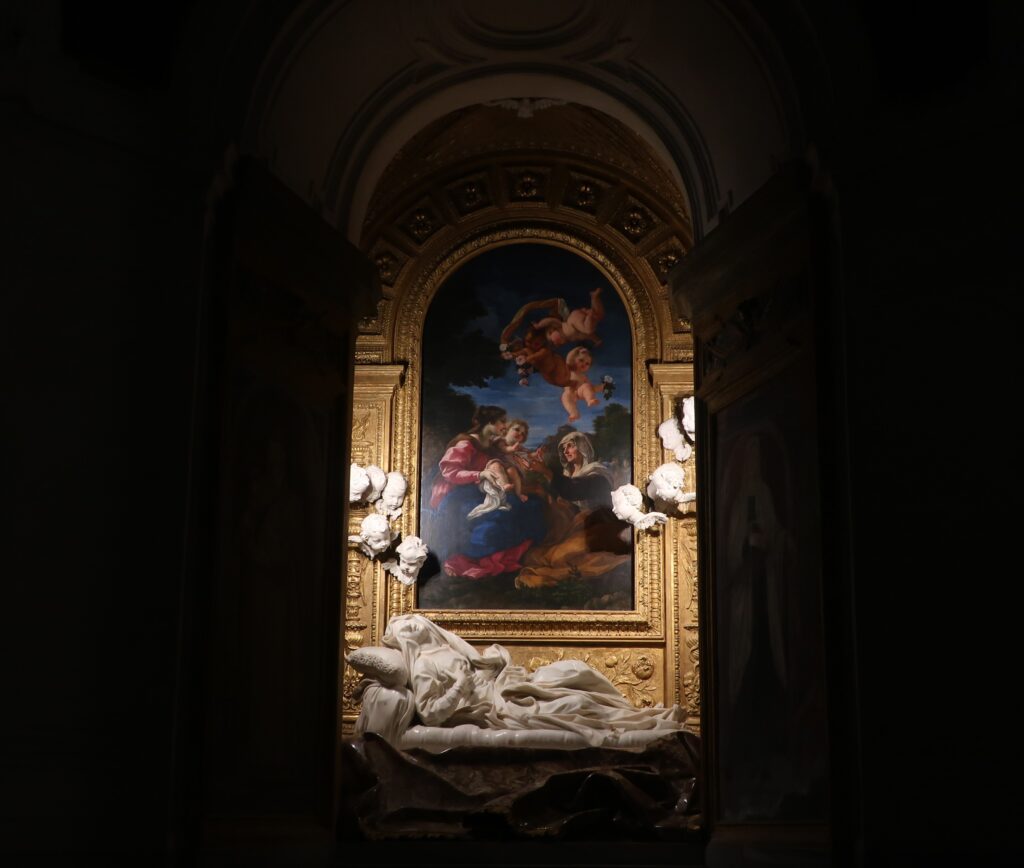
Yes, it was easier to see with the lights on, but the magical and mystical atmosphere I felt earlier was gone! However, the fantastic and mysterious atmosphere I felt earlier has gone away! The light must have been created by Bernini's intention. The light coming through the window is what makes the statue what it is!
Therefore, we recommend that you view the exhibition without turning on the lights.
Church of Santa Maria del Popolo and San Luigi dei Francesi
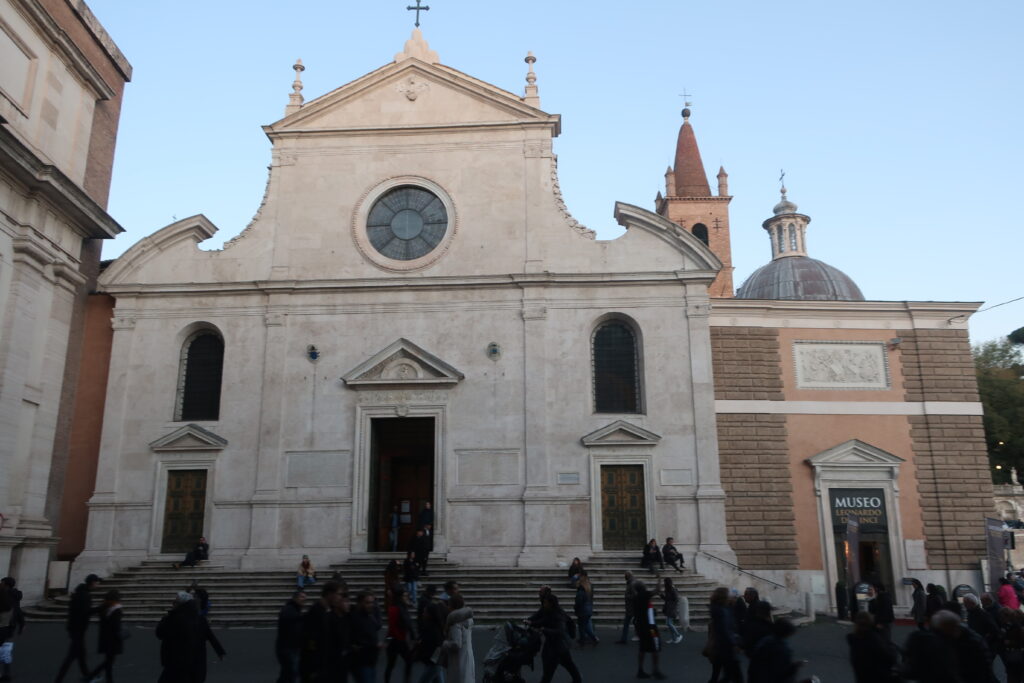
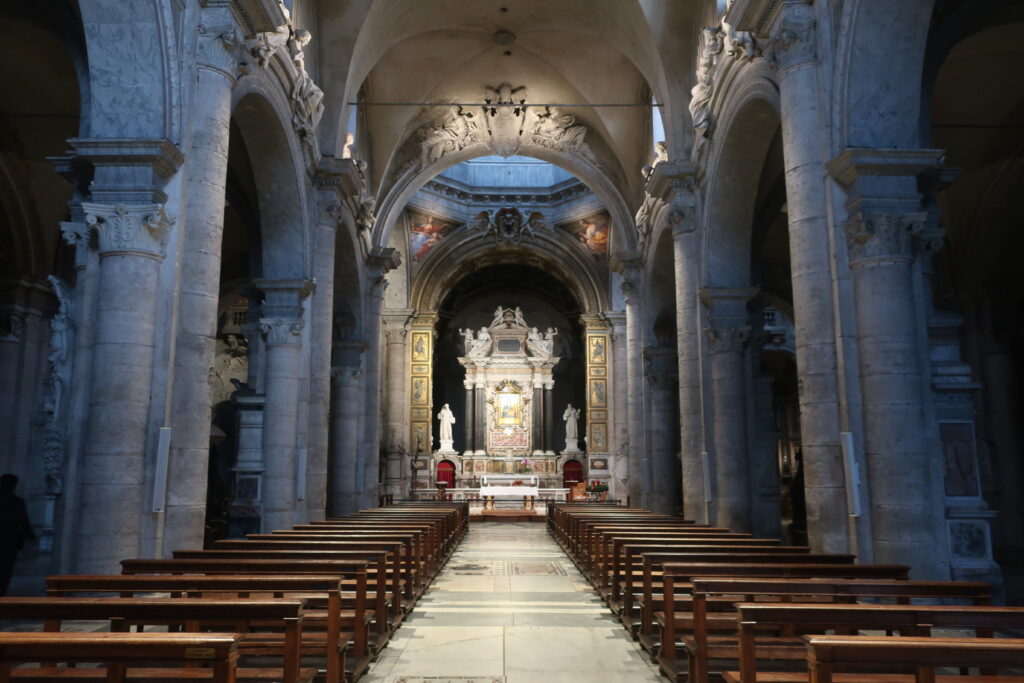
As its name suggests, this church is located facing Piazza del Popolo. (For more information about Piazza del Popolo, please refer to the previous article.(1) Gateway to Rome: Porta del Popolo and Piazza del Popolo - A stroke of the eye that instantly draws the traveler in! The quintessence of Rome as a theater city!"(See the article on)
The hall has a simpler structure than I had imagined. The reason there are no people in the hall in this photo is because I entered the hall as soon as it opened.
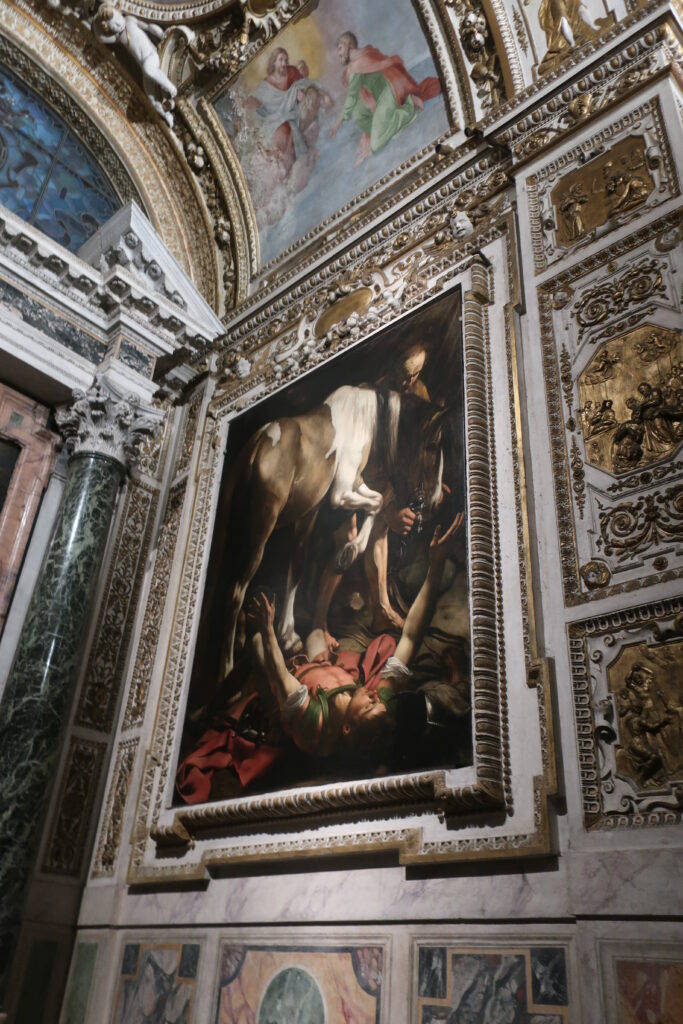
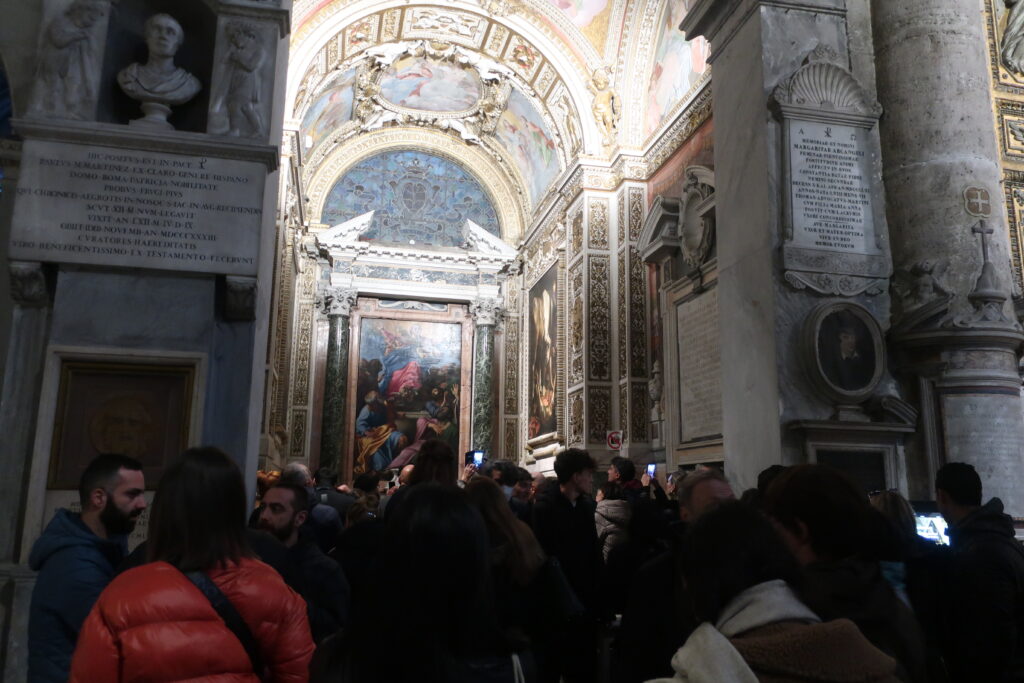
Caravaggio's "The Turning on the Way to Damascus" is housed here, and the crowd in front of the painting can be quite overwhelming. It is not easy to take your time to admire the painting, but it is a sacred place for Caravaggio fans.
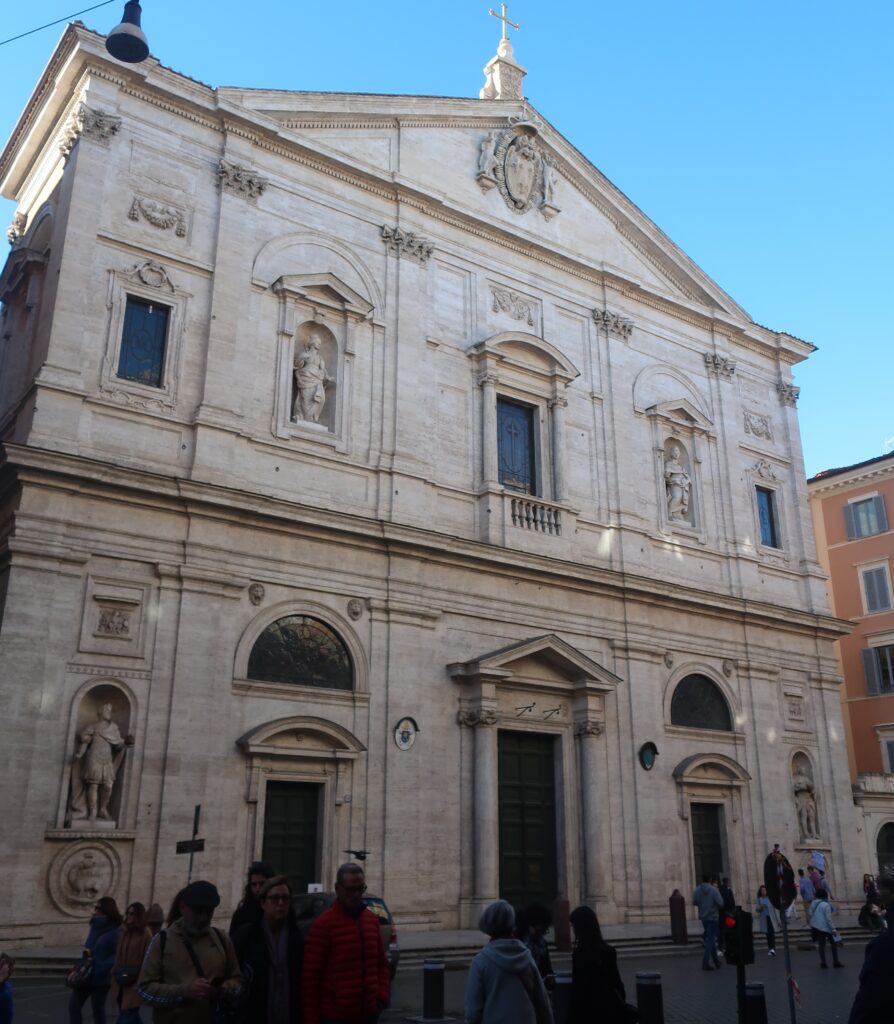
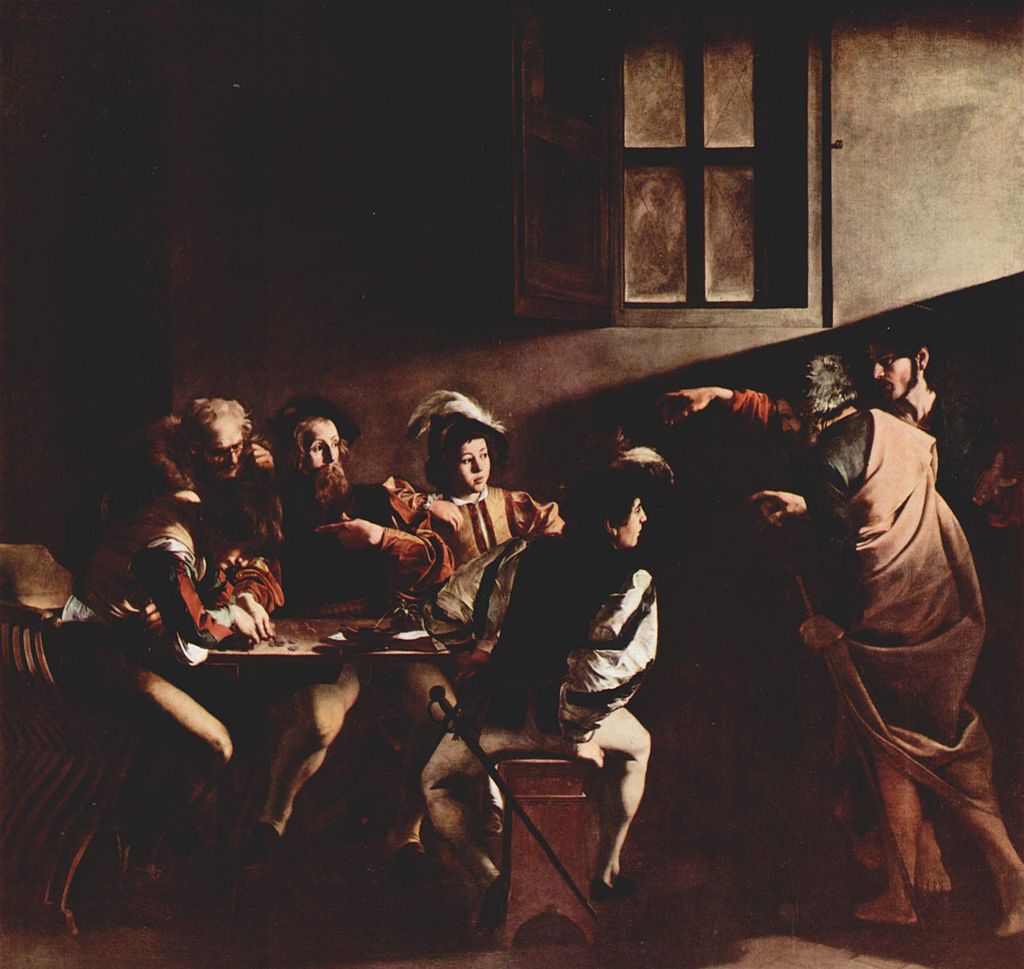
The Church of San Luigi dei Francesi, located close to the Pantheon, also houses Caravaggio's masterpiece, "The Convocation of St. Matthew," and is also an essential site for Caravaggio pilgrims.
However, both are very crowded and it is difficult to view them in a relaxed atmosphere. Unfortunately, I was unable to time my visit due to scheduling conflicts. If you are planning to make a pilgrimage to Caravaggio, I highly recommend that you avoid the crowds.
Jesuit Headquarters Church of Jez
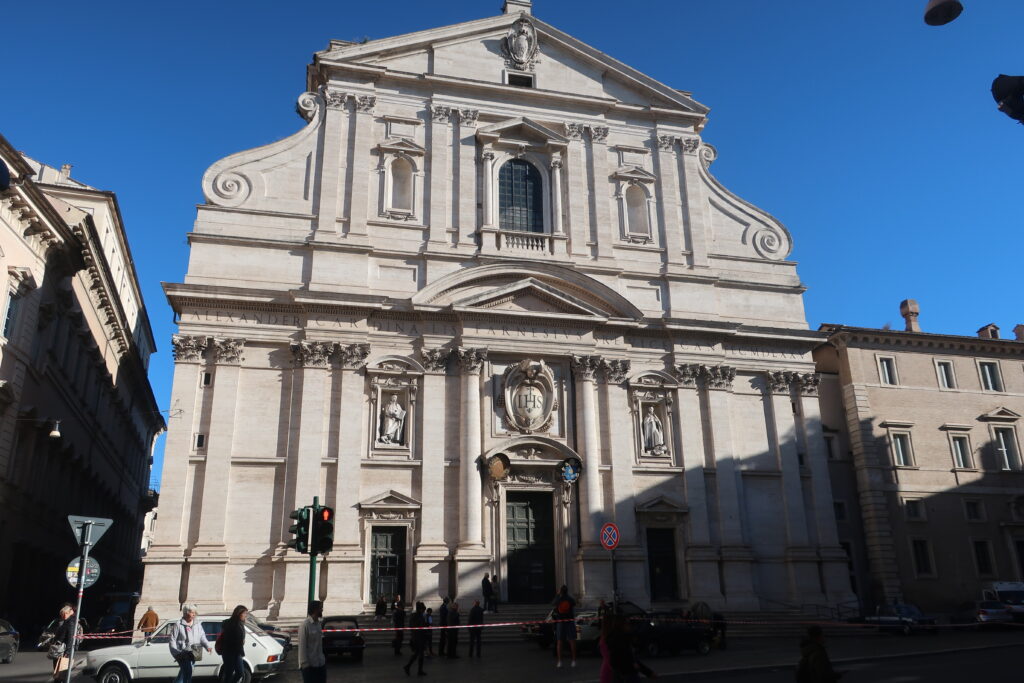
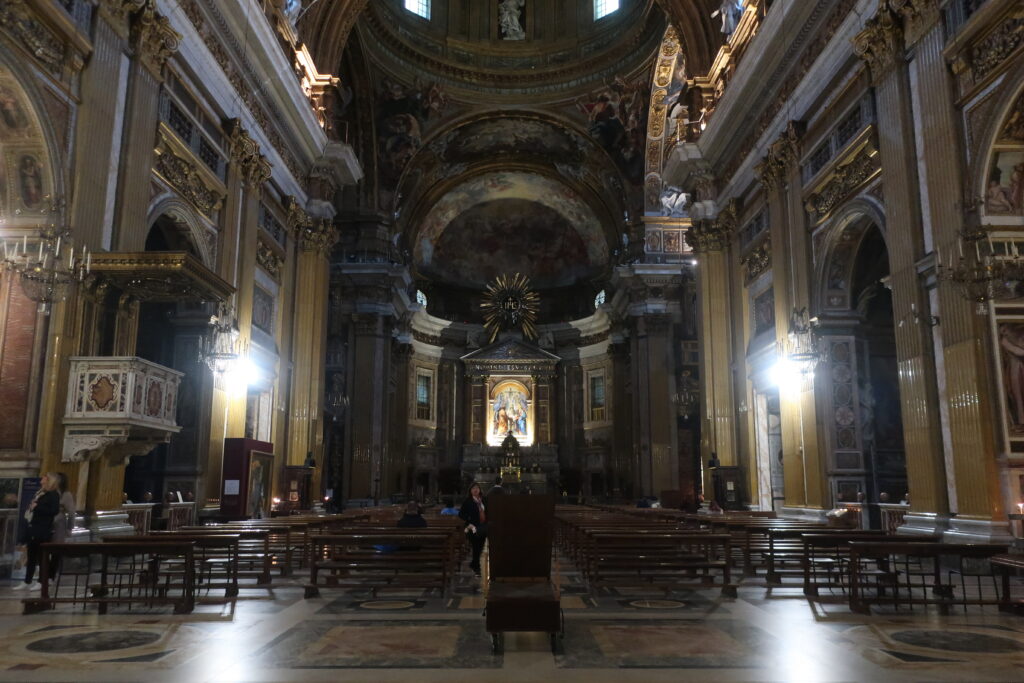
The Church of Jez is only a few minutes walk from the Pantheon.
The exterior photo on the left was taken during the daytime, while the one on the right was taken after dark. At this time of the day, there are fewer tourists and worshippers, and you can take your time to enjoy this cathedral.
I felt as if I had forgotten reality in this space. I will never forget the time I spent here, sitting on the bench and just relaxing.
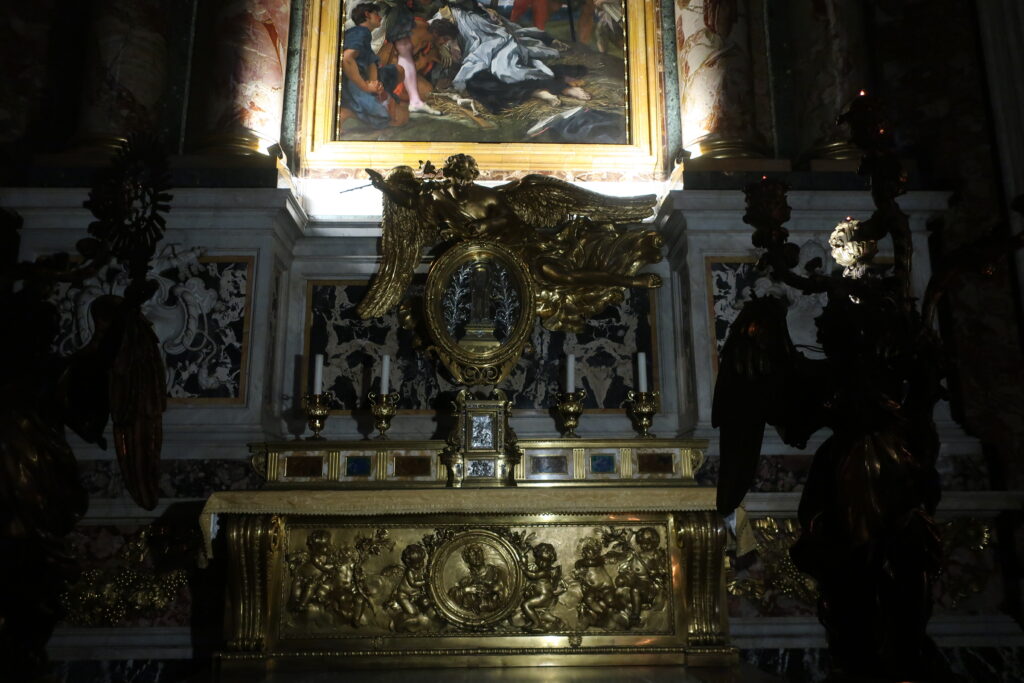
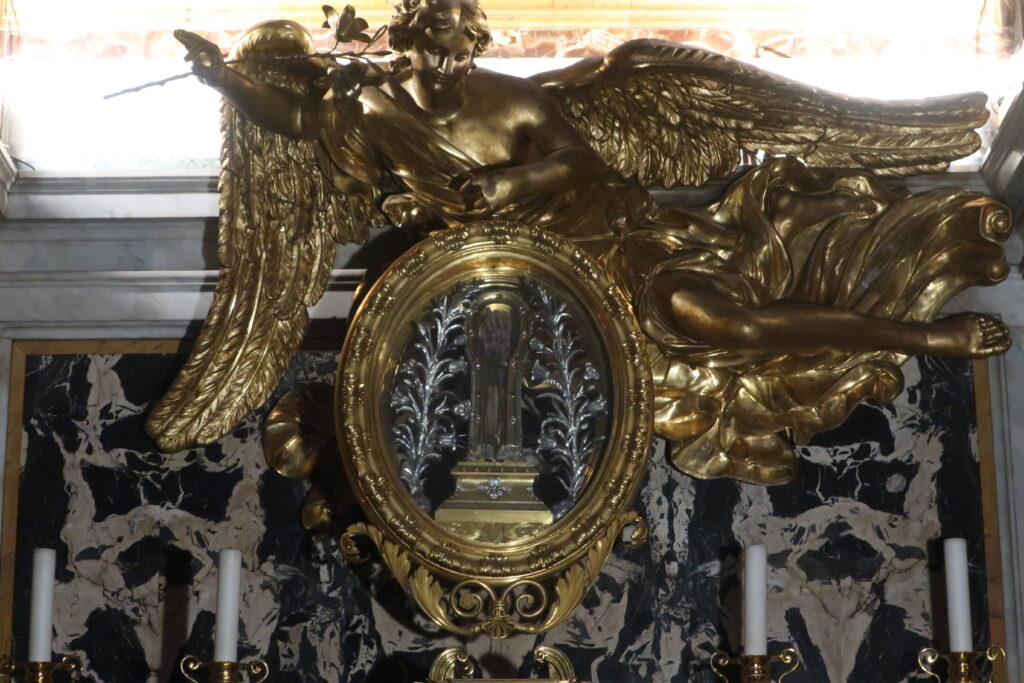
Also, the altar on the right side of this church houses a relic that is said to be the hand of that Xavier.
A small hand kept in a golden vessel. Whether this is the real thing or not is "God only knows," but as a matter of folklore, this relic is carefully kept here. It was a reminder of how much Xavier, who is also associated with Japan, was a figure on a global scale.
The Jez Church is easily accessible from the Pantheon and Piazza Navona, so I would highly recommend it.
church of sant'Andrea delle fratte
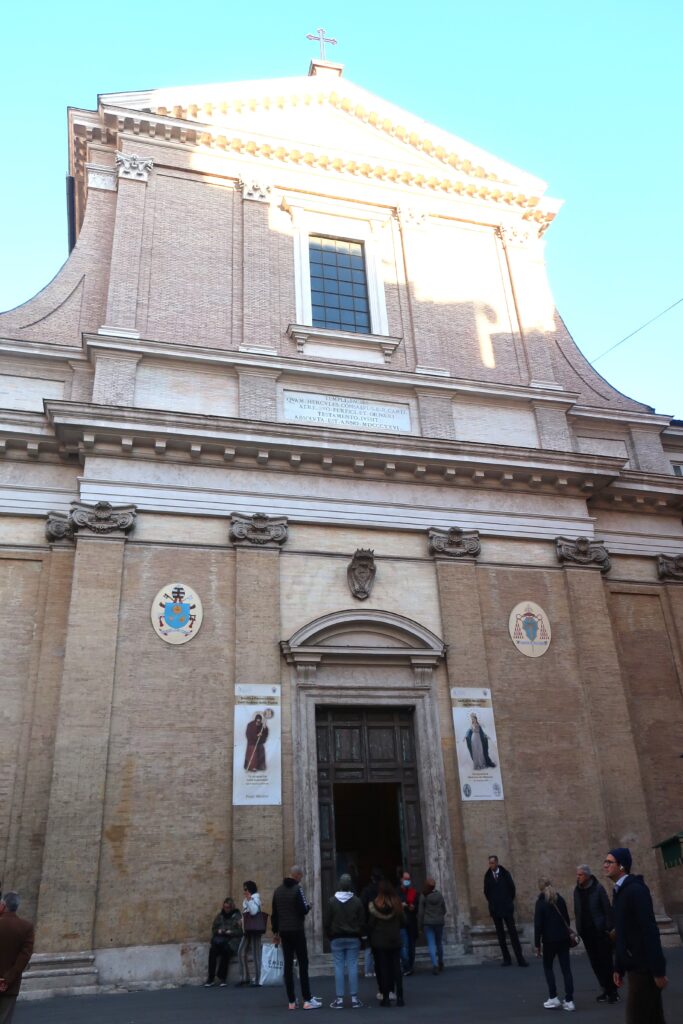
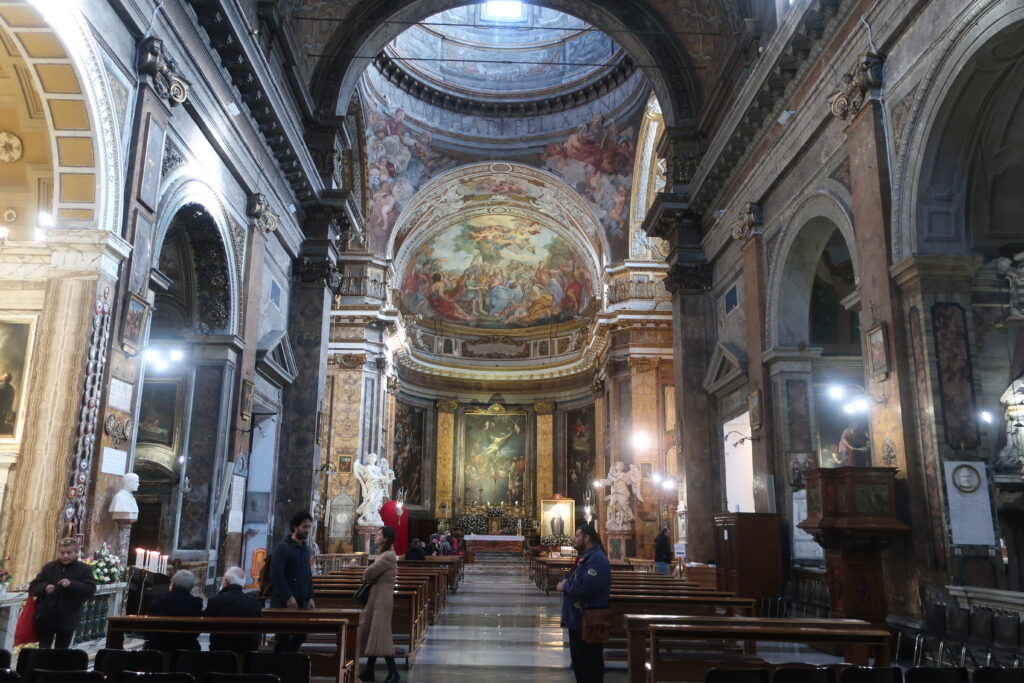
The Church of Sant'Andrea delle Fratte, with two statues of angels by Bernini, is located in an area close to Piazza di Spagna. Above.Sant'Andrea al Quirinaleis also Borromini'sSant'Andrea alle Quattro Fontaneis also very close by.
Right across the street from the church is Bernini's house. I had heard about it, but I was very surprised to see it right in front of me.
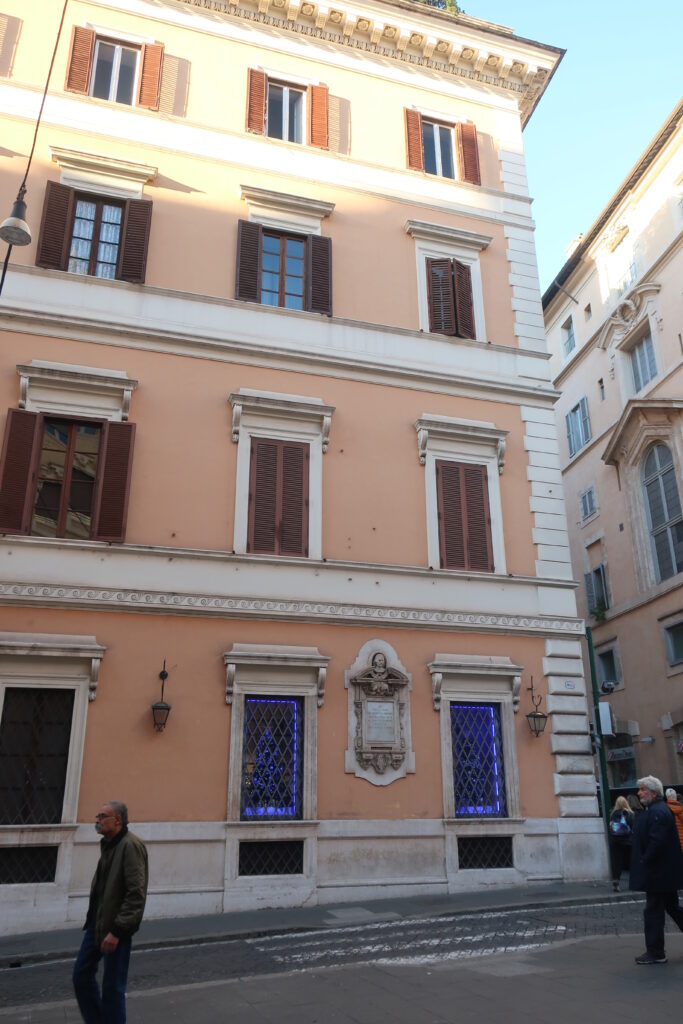
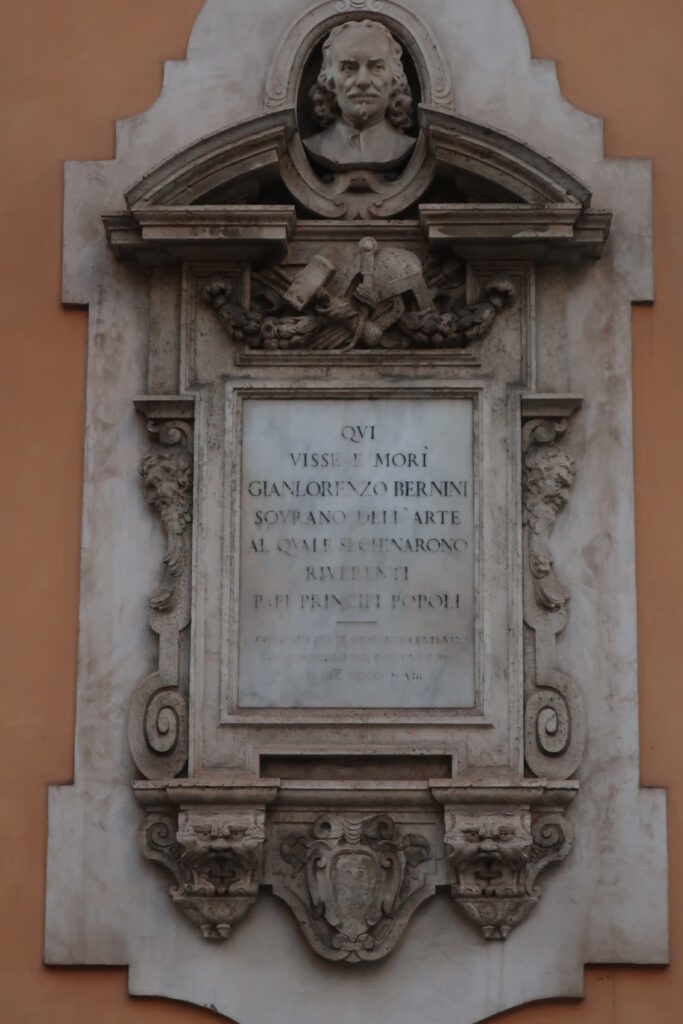
When I first entered this church, it was just time for evening prayer, and this cathedral was full of believers praying. This church is still a place of faith for the citizens of Rome. Therefore, the atmosphere is quite different from other touristy churches. I refrained from taking pictures at that time, so the above is a picture taken when I revisited the church at a later date.
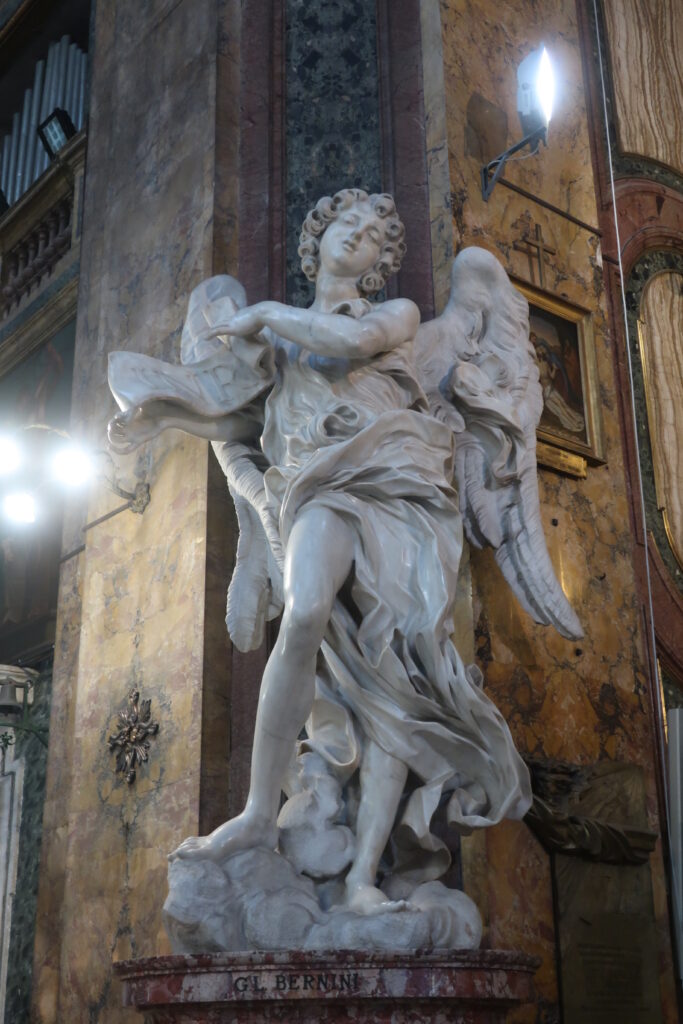
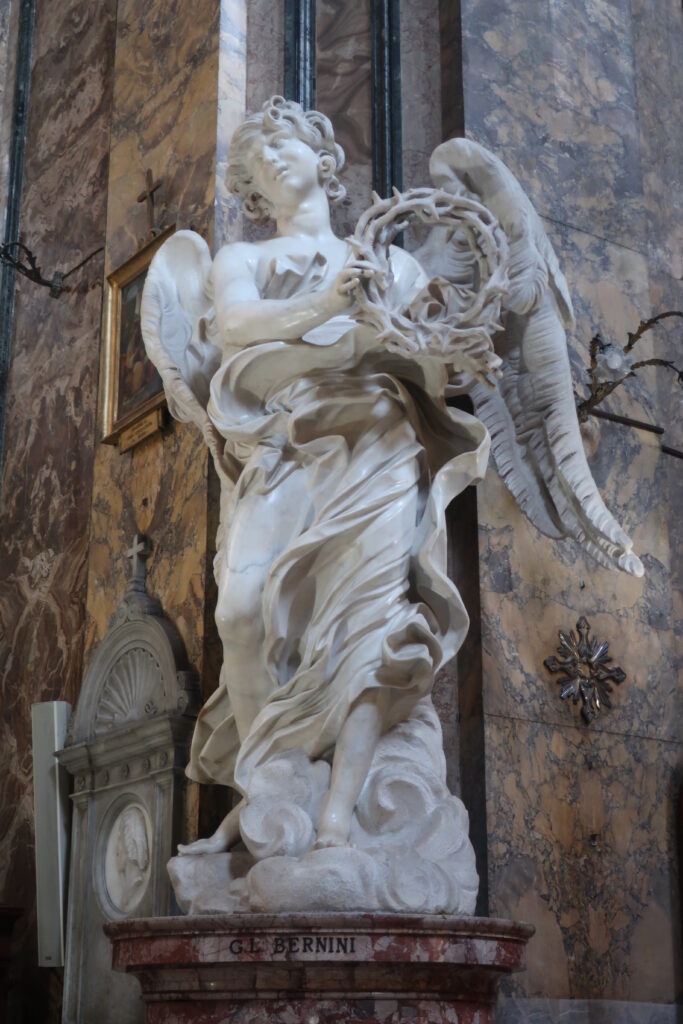
The undulation of the robe and the look of ecstasy are indeed Bernini. In particular, "The Angel with the INRI Inscription" can only be described as a masterpiece. Even in his later years, Bernini's skill has not diminished at all. In fact, I think his sophistication has even increased.
And strangely enough, for some reason, these two angel statues reminded me of the Wind God and Thunder God of Sanjusangendo in Kyoto. Perhaps the miraculous rippling of the angels' robes reminded me of my favorite wind god and thunder god.
And interestingly, the two angel statues were actually displayed on Sant'Angelo Bridge, one of Rome's most famous tourist attractions.
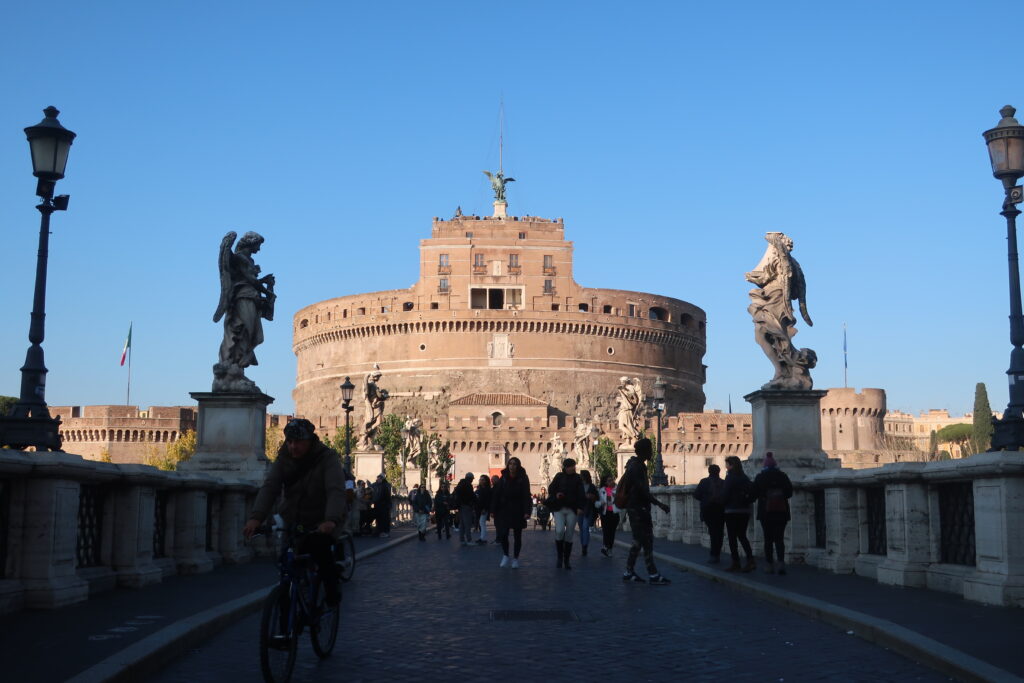
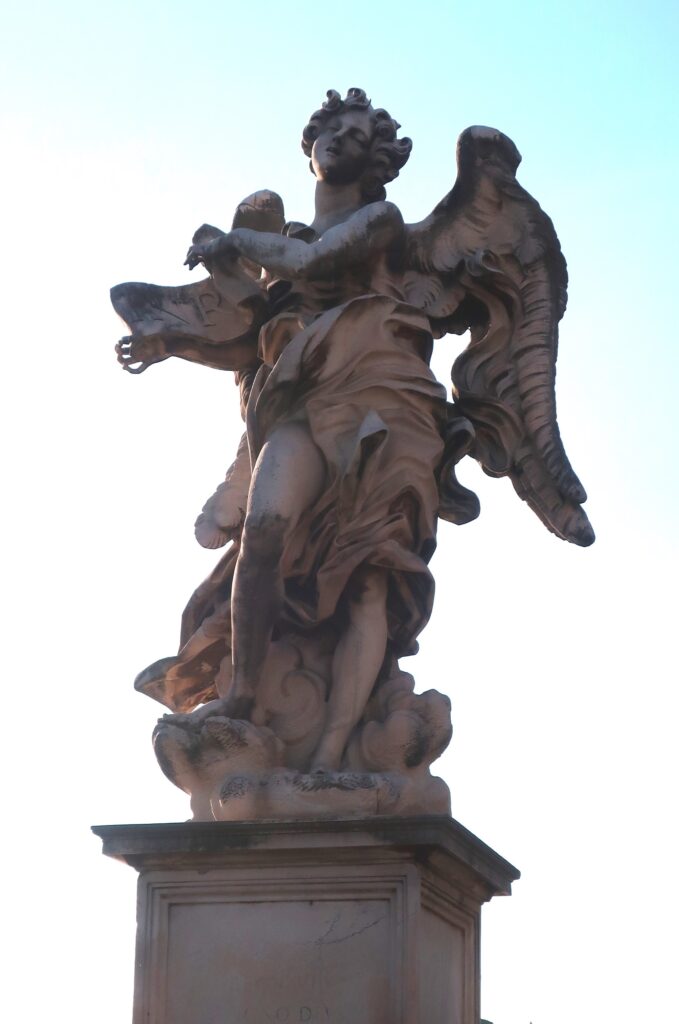
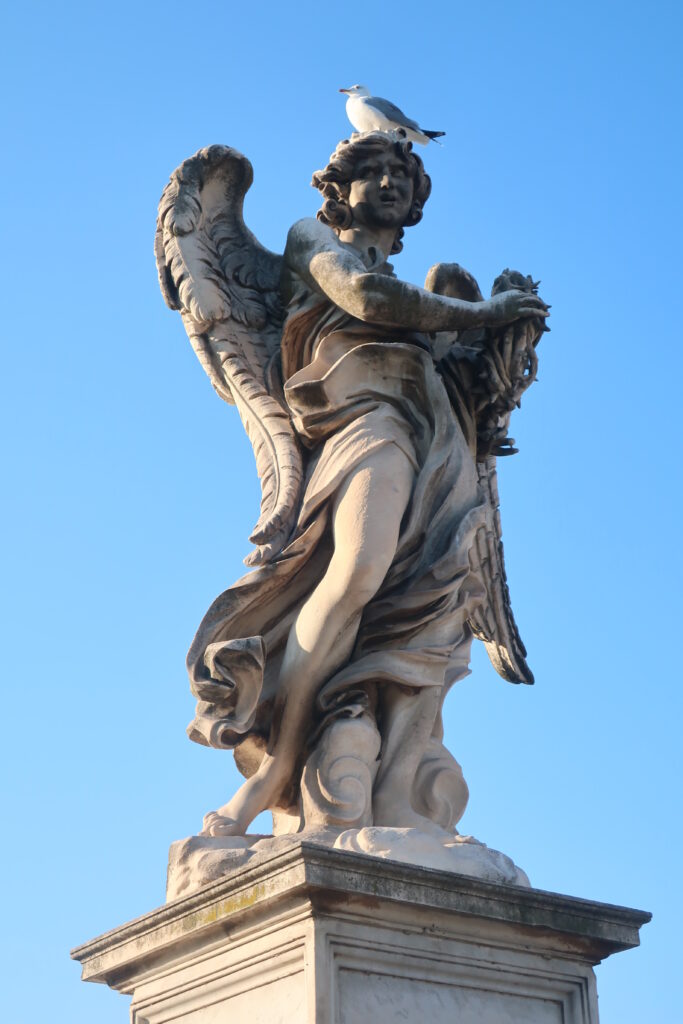
However, the quality of Bernini's angel statue was so good that the Pope at the time deemed it unbearable to leave it unattended, and the original work had to be moved. The original was moved to the Ponte Sant'Angelo, where it is now a replica. The difference in quality between the replica and the original is obvious! Why don't you come and enjoy Bernini's masterpiece that is still cherished in the place of faith?
Rome's long-established Cafe Greco
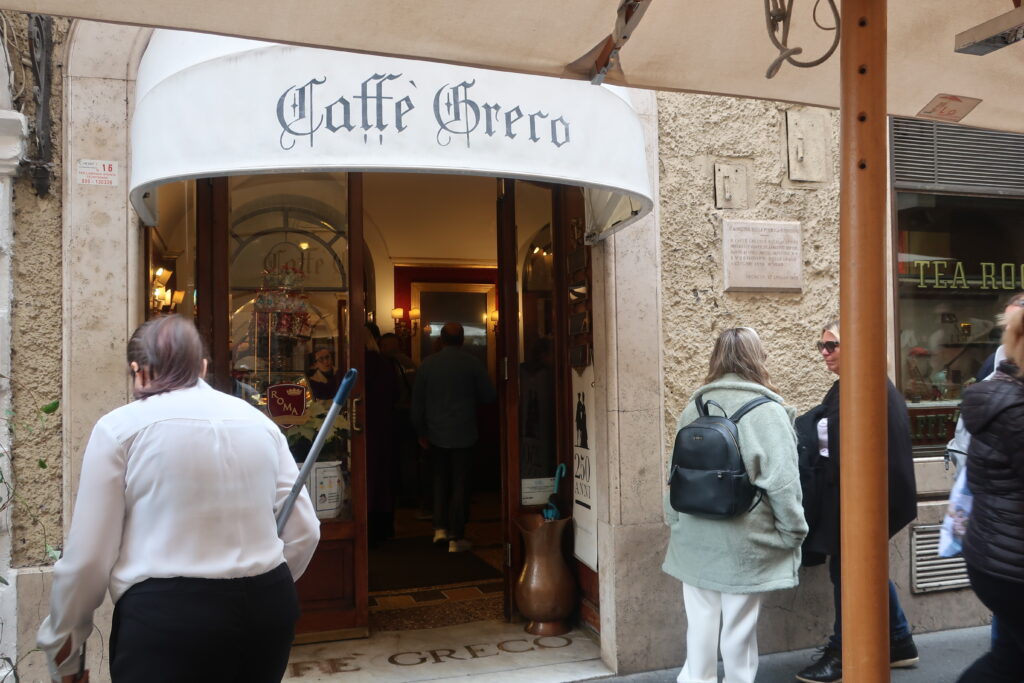
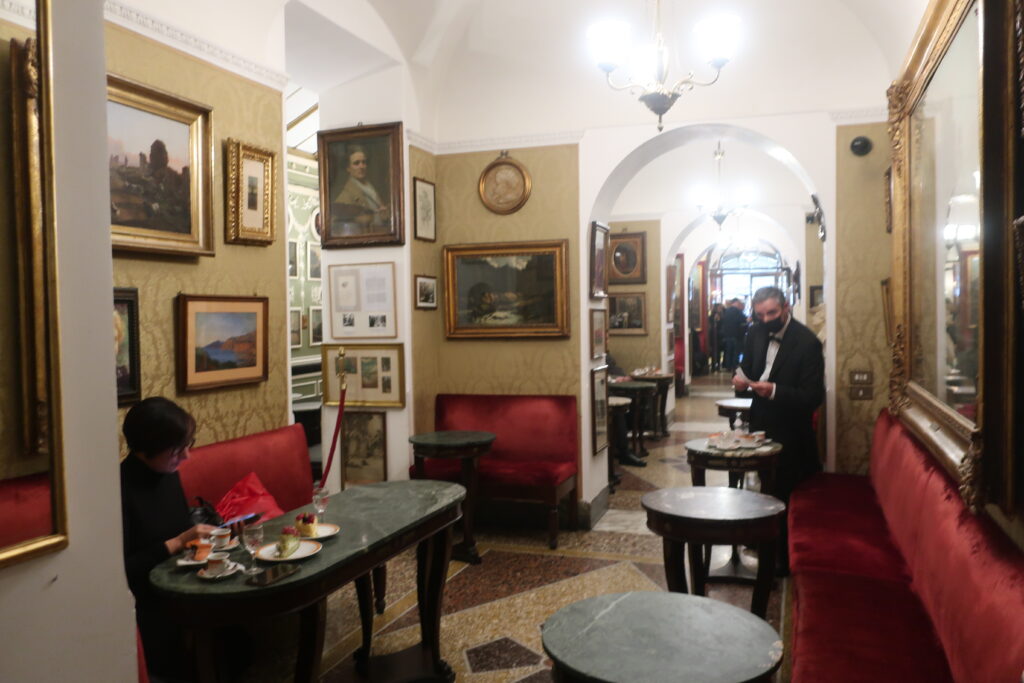
The long-established Café Greco is located near Plaza de España, which I mentioned above. This is a famous restaurant where countless celebrities such as Goethe, Andersen, Mendelssohn, and Berlioz have spent time, making it a sacred place for lovers of literature, painting, and music.
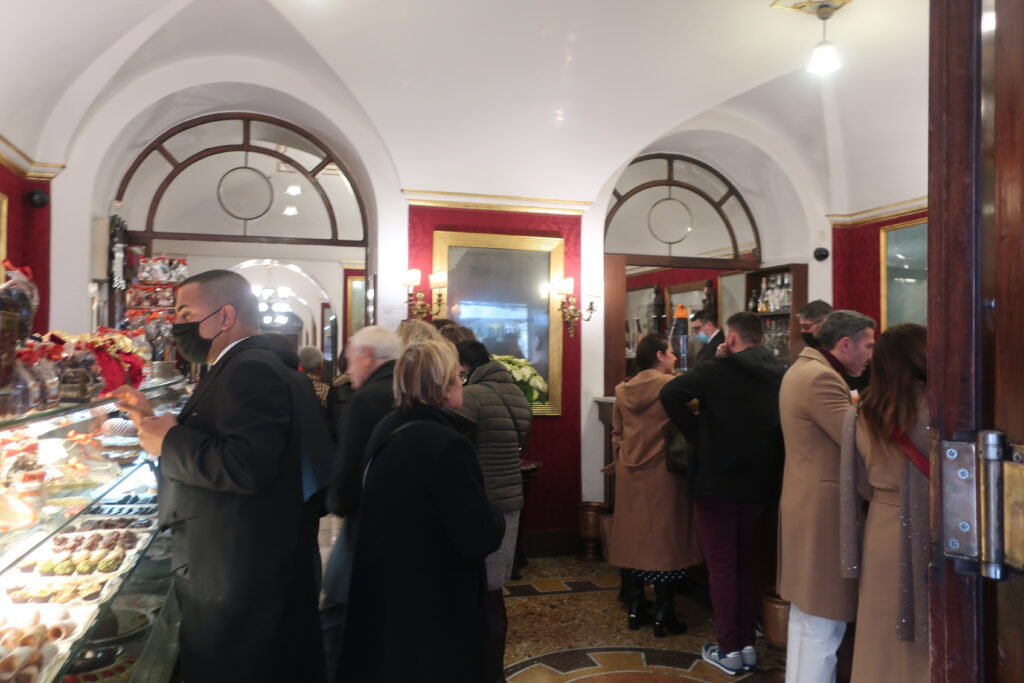
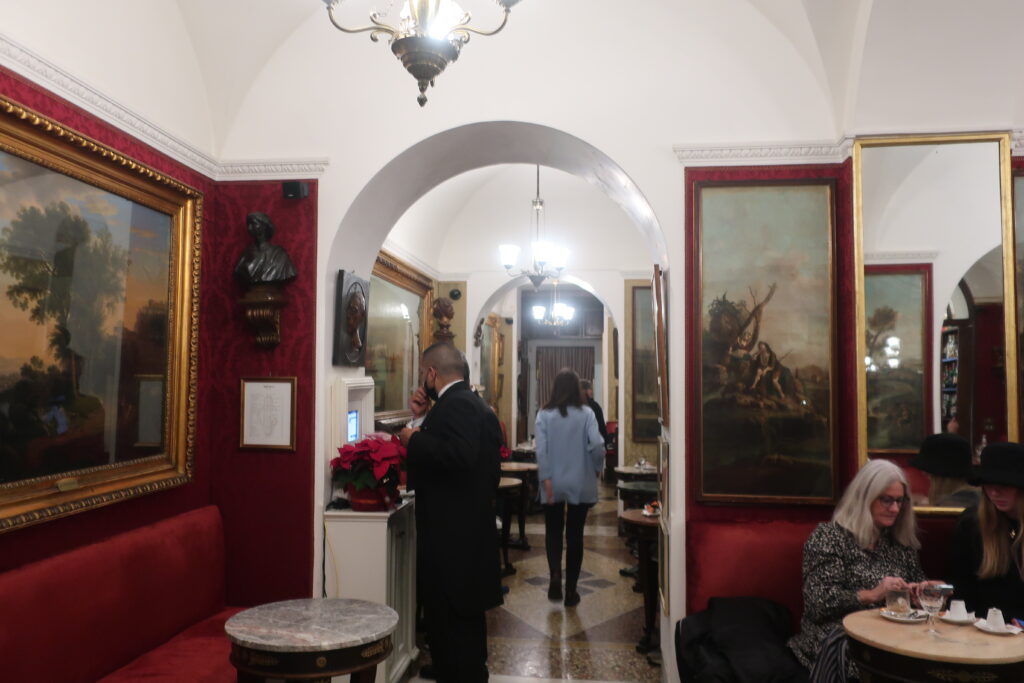

The area immediately after entering is a bar counter and food corner, which is crowded with customers drinking a quick espresso or ordering takeout. This photo shows a fairly empty area. If you want to enjoy yourself in the café area, just let the staff know and they will let you in. The seating area is along a narrow aisle, which is an unusual structure, but the walls are covered with paintings. The walls are covered with paintings.
I took a seat near the entrance and ordered an espresso and a cappuccino all at once. I had come all this way, and I wanted to savor it to my heart's content.
This is where Goethe, Andersen, and Mendelssohn had their coffee.
The coffee was exceptional as I thought about this.
I visited this place many times during my stay in Rome. No matter how many times I come here, it is always an exciting place. I was excited every time by the thought that the great people I admired were here.
This is a must-see spot in Rome for fans of literature, painting, music, and history.
Castroni, a famous restaurant where you can enjoy excellent espresso.
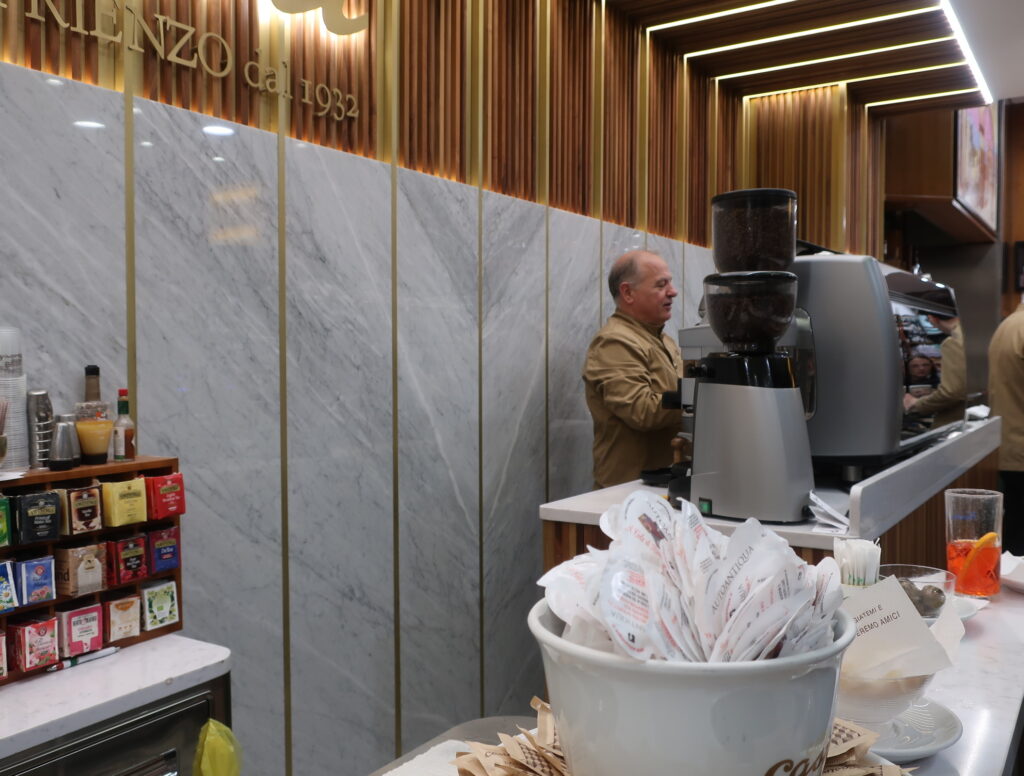
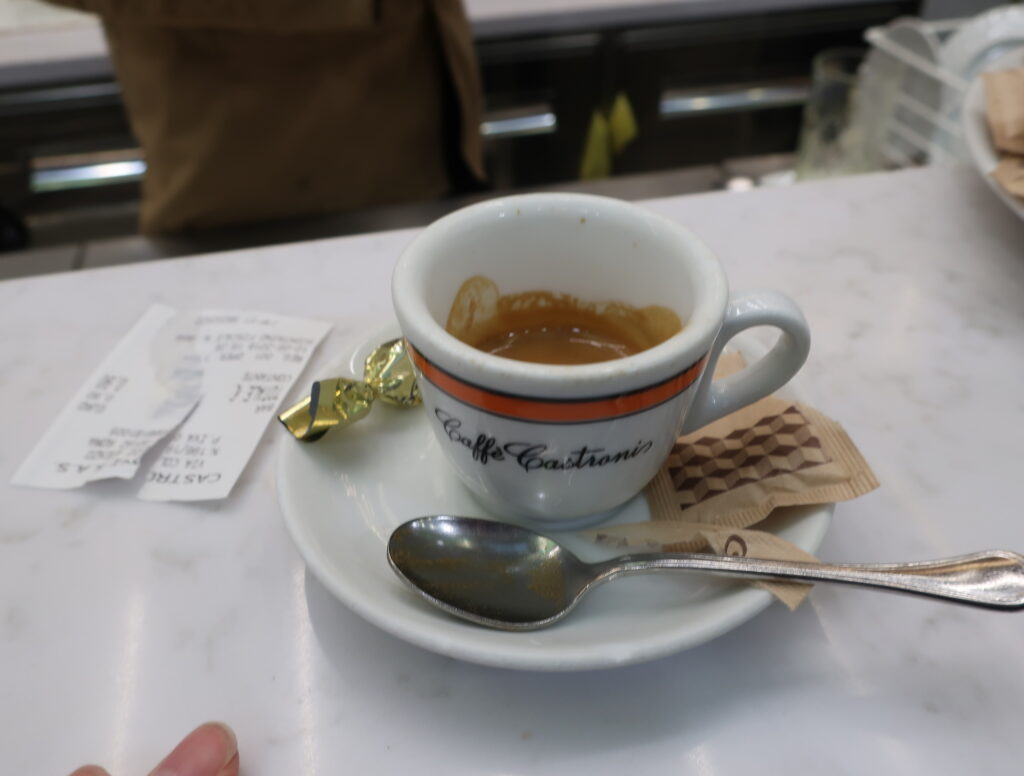
The store Castroni is located near the Vatican. The store itself is a grocery store, which means it has a wide selection of local foods, but go to the back and you will find a coffee counter.
Here, you can enjoy a quick espresso made by the barista while standing at the counter.
This is the Roman coffee style.
It was so good that I immediately ordered a second helping.
I became completely hooked on the taste, and I have been coming here every day since then, doing the strange routine of ordering two cups from the start, downing them all in one go, and then leaving.
This is a restaurant that Mirza, our guide in Bosnia and Herzegovina, told us about.
Mirza is a Rome connoisseur who has lived in Rome for over 10 years.
The person said, "This is the best place to eat. All the locals go here," so there is no doubt about it.
I really recommend this store. It is a great place to buy Italian souvenirs. You can buy local and really high quality food at reasonable prices.
If you are going to the Vatican, why not stop by?
Even more maniacal recommendations to stop by if you have time.
We have introduced 15 of the best places to visit in Rome, but there is much more to see in Rome.
However, the biggest problem in sightseeing in Rome is time. It is impossible to visit all the places of interest in the limited time available. The above 15 are my best choices, but there are still many more places I would like to recommend.
So, here are some recommendations for Rome to visit if you have the time.
Entrance to Rome: Porta del Popolo and Piazza del Popolo

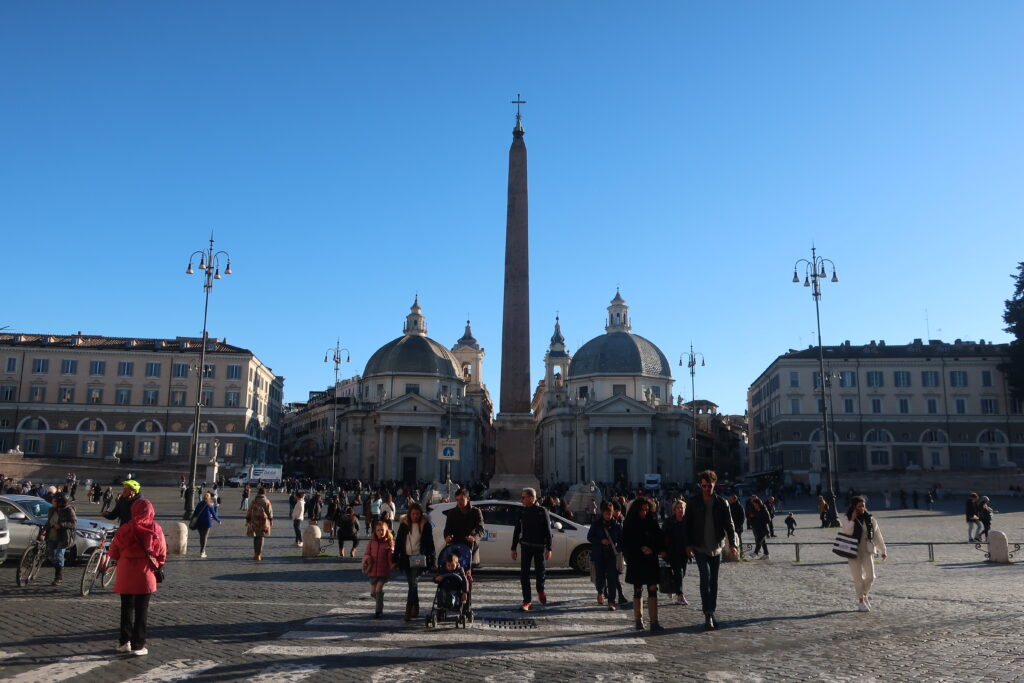
It is most appropriate to listen to Masumi Ishinabe's commentary on the Popolo Gate and the Popolo Square. Mr. Masumi Ishinabe states as follows
In order to understand what Rome was like for travelers in the past, I think it is necessary to first envision the powerful "eye-opening" effect that the Piazza del Popolo had on them. Therefore, it is worth trying this experiment to simulate the entry into Rome in the past, most conveniently by getting off at the Flaminia subway station on the A subway line and entering the city through the Piazza del Popolo.
Yoshikawa Kobunkan, Masumi Ishinabe, "San Pietro ga Tatekiri: My Guide to Rome," p. 1.8
Kuchma, which in ancient times was the "city of emperors" and later the "city of popes," was a city destined to have a fictional and "showy" character. The traveler who finally arrived in Rome after a long journey and stood in Piazza del Popolo was convinced of this as well as of the "grandeur" of Rome. Therefore, if anyone thinks that the view of Piazza del Popolo was deliberate or impersonal, he or she is not in tune with Rome. On the other hand, if someone feels a thrill of excitement at the shenographic view, he or she was born with the "talent" to be fascinated by Rome.
Yoshikawa Kobunkan, Masumi Ishinabe, "San Pietro ga Tatekiri: My Guide to Rome," p. 24.
Now, what will I feel when I see this Gate of Popolo? Do I have the "gift" of being fascinated by Rome? I had to find out! That is why I went to the Porta del Popolo first when I arrived in Rome.
Goethe and Stendhal also passed through here. Dostoevsky and Mendelsohn, both of whom I love, would have passed through here. Through this gate, there is a Roman "eye blow" as Mr. Ishinabe says.
We encourage everyone to experience this "coup de grace".
Baths of Caracalla and Appian Way, Claudia Aqueduct
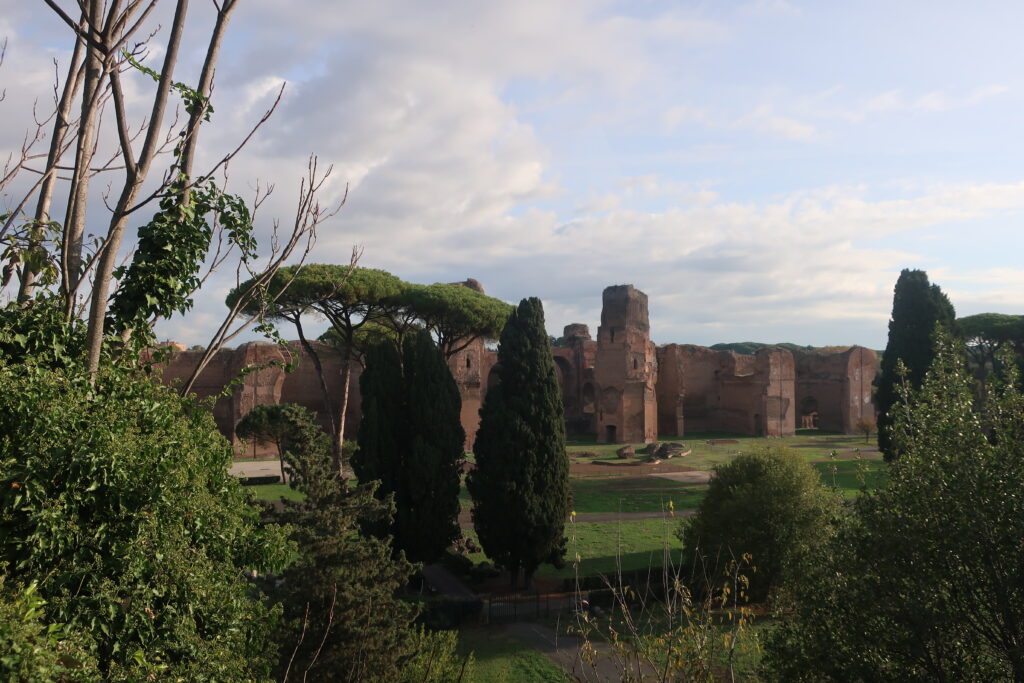
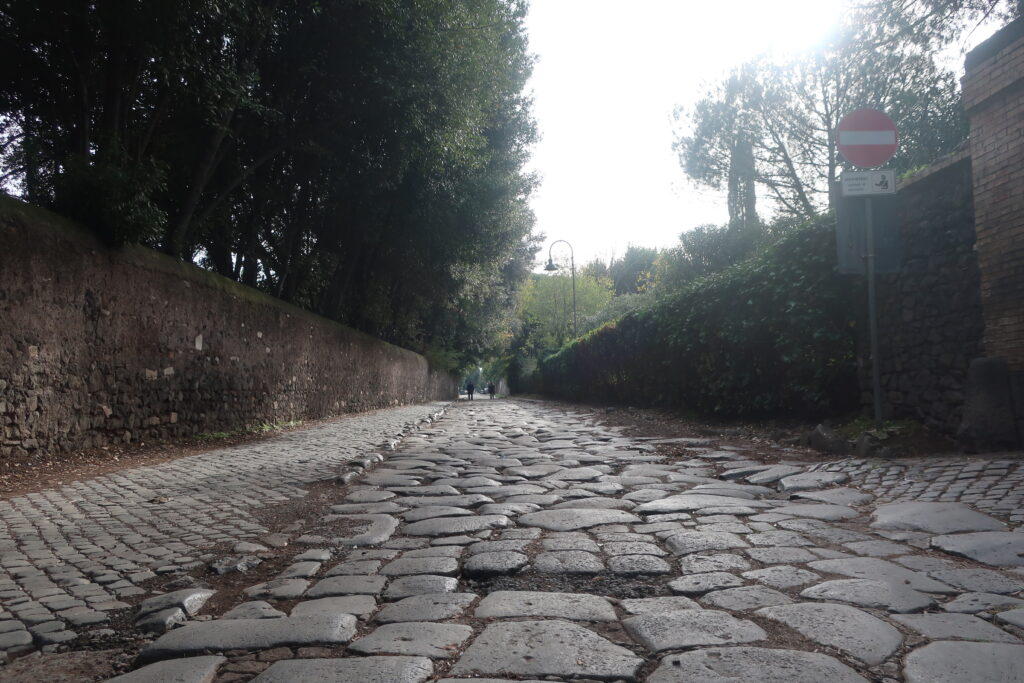
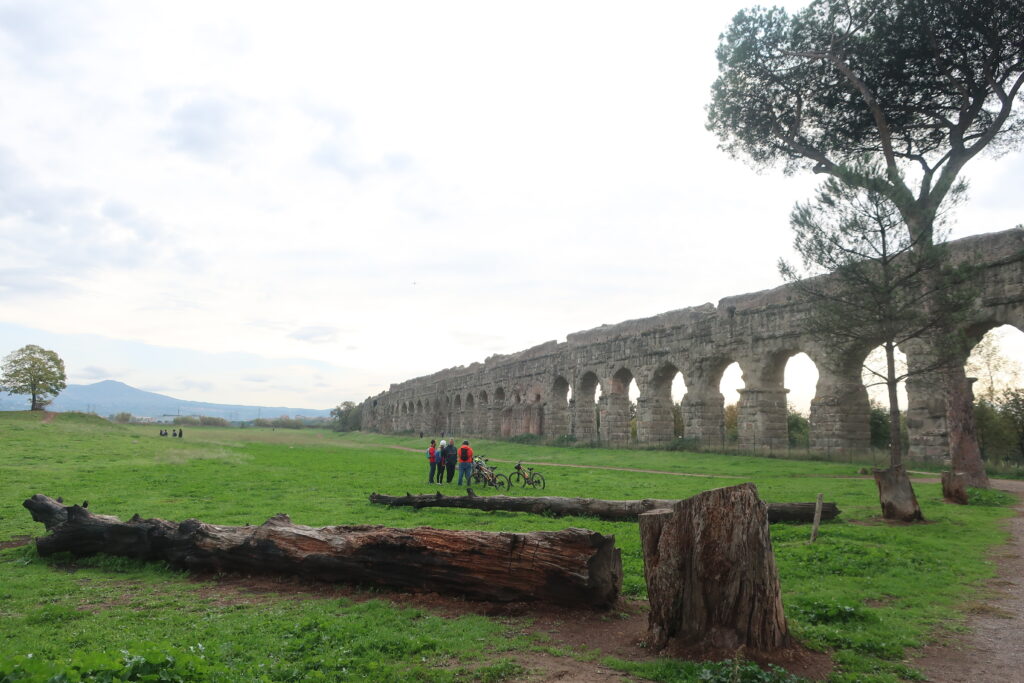
The Roman Empire is famous for its welfare policies, but its passion for public baths (terme) is outstanding. 2000 years ago, they drew water from faraway places and continued to boil and supply large quantities of water, which, when you think about it, is an amazing feat! It is not as if there was a hot spring springing up from underground and they used it as a bathhouse. They drew water from far away and used a large amount of fuel to boil it!
And the ancient Roman road on the Appian Way. Nowadays, there are gaps between stones and the road is a little bumpy, but in those days, the road was perfectly flat.
The Roman Empire was famous for its civil engineering skills, the best known of which was in road construction.
By Pierre GrimalRoman Civilization."The translator's commentary in
The adage "all roads lead to Rome" is so well known that the Romans built a network of roads to maintain their empire, connecting their territory from Rome, the capital, to the frontiers along the Rhine, and to the desert fringes of Arabia and the Sahara. Because they were intended to allow armies to rush through in the event of an emergency, they often ran almost straight through the countryside, just like modern motorways. Moreover, for a road to be truly usable as a road, it must not become muddy when it rains or collapse and become impassable. The road surface was firmly paved with stones and ditches were provided. Unlike farm roads, which are merely paved by the footsteps of people and animals, roads are truly structures.
Ronsosha, Pierre Grimal, translated by Yasutsugu Kirimura, Roman Civilization, p. 449-450
WHEREAS.The road surface was paved with stone and ditches were installed. Unlike farm roads, which are merely paved by the footsteps of men and animals, roads are truly structures.As stated above, it is a surprisingly blind spot to realize that roads are also buildings. When we think of buildings, we tend to think of things that are visible and "standing," such as the imposing Colosseum or houses, but "roads" also contain the technology and spirit of the city.
"All roads lead to Rome."
It was an emotional experience for me to witness and touch the path.
And finally, the Claudia Aqueduct.
The Japanese language has an expression "no water leakage," but if the stones were simply put together in the usual way, water would leak from the joints between them and be lost rapidly. When one imagines how meticulous the work was done to eliminate the gaps between the joints, it is enough to make one sigh (from the same book).
When I first read this commentary, I couldn't help but to be struck in my knees and say, "I see! I couldn't help but to be struck in the knee.
It is not enough to simply combine stones. Water will quickly seep in and leak out. To prevent this, there must be precise calculations and perfect construction techniques. The Roman Empire had achieved this more than 2,000 years ago.
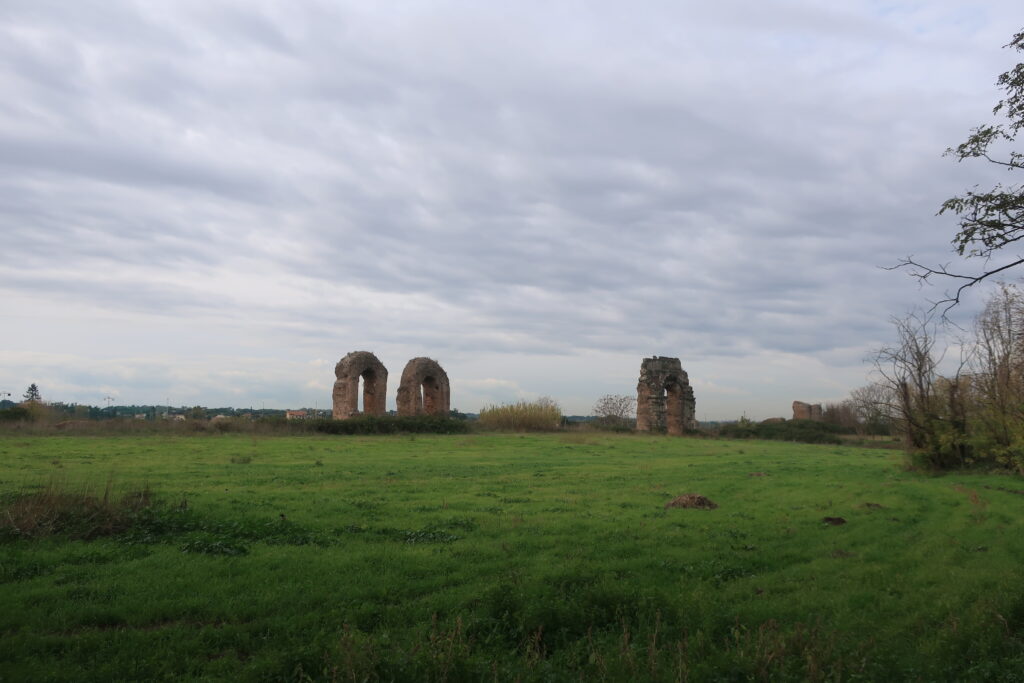
One can only marvel at how sturdy such a huge structure still remains ... how sturdy it was built.
I am still impressed by what our guide told us while looking at these aqueducts.
Both the Greeks and the Egyptians built huge structures. But in the Roman civilization, everything is practical. The Colosseum, roads, aqueducts, all of them are directly related to people's lives. The Greek temples and pyramids are large, but who are they for? But who are they for? What are they good for? Rome is different. The great thing about Rome is that civilization is combined with practicality."
A civilization that has mastered practicality!
I see, this is a very important point to know about the Roman Empire!
I was not sure if I would be able to travel around the suburbs of Rome on my own, so I decided to take a tour with a local travel agency. I requested the following toursJimmy Tour."A travel agency called "Kaiyodo". They are a travel agency that can provide Japanese-language services, and they are very responsive to details that are difficult to arrange for regular group tours.
I joined the tour called "Baths of Caracalla & Appian Way Half Day Tour" and it was perfect for me as I could see the catacombs and various other sights in the time I had. I am very grateful to have had the opportunity to meet Jimmy Tour during my stay in Rome. As I mentioned again in another article, Jimmy Tours provided me with an amazing experience that I had never imagined. I would highly recommend this travel agency to anyone staying in Rome. See the article below for my experience.
Catacombs of San Callisto outside of Rome

I visited these catacombs along with the tour of the Appian Way and the Claudia Aqueduct that I mentioned above.
The catacombs are a significant part of the Christian city of Rome.
St. Peter's Basilica also began as the tomb of St. Peter.
Rome is filled with memories of death."
In fact, Rome is the city of the tomb. And Christianity, too, is a 'religion of death,' a 'religion of triumph over death.'"
When we think of Rome, we tend to focus on the temple of beauty and the romance of ancient Rome. As Mr. Ishinabe says, Rome was also a city of tombs and death.
In many ways, each of these catacombs is worth a visit. At the very least, it is a 'must' for any visitor to Rome to spend half a day enjoying the refreshing atmosphere of the Appian Way and visiting one or two of the catacombs along the way."I decided to visit the catacombs of San Callisto because Mr. Ishinabe had mentioned that they were the most beautiful catacombs in the world.
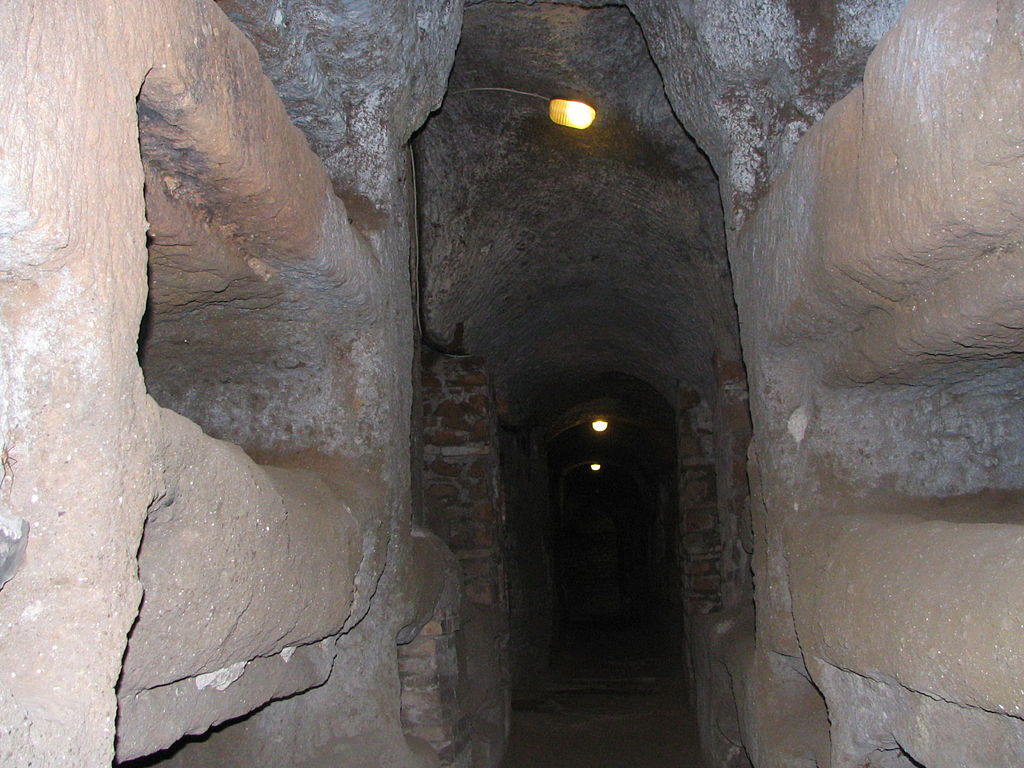
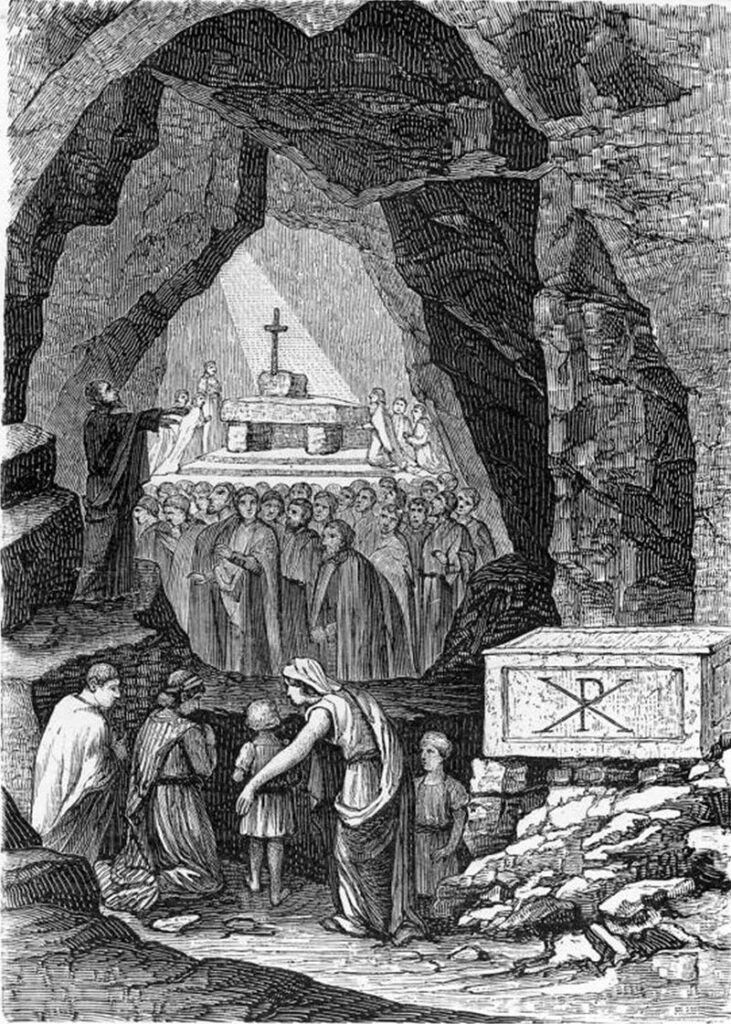
I followed behind my guide as we walked through the catacombs. Even though the soil in this region is soft and easy to dig, I was surprised at the enthusiasm with which they dug so deep. Nowadays, the passageways are lit, but in those days it must have been pitch black. There was a limit to the amount of light that could be provided by fire. The fact that they were able to build such deep and labyrinthine catacombs in such conditions is astonishing.
If I were left alone in a place like this with no light, I would be scared out of my wits.
The tour of the catacombs did not take us as deep underground as I had imagined. However, in some places we could see the darkness on the other side of the passageway, which led us to imagine the abyss beyond. The labyrinthine nature of the catacombs is reminiscent of Andersen'sThe Improvising Poet.But it is interesting because its dark horror is portrayed in a very realistic way. I highly recommend "The Improvised Poet" as well if you come to Rome.
And on the way to these catacombs, we saw one famous tomb.
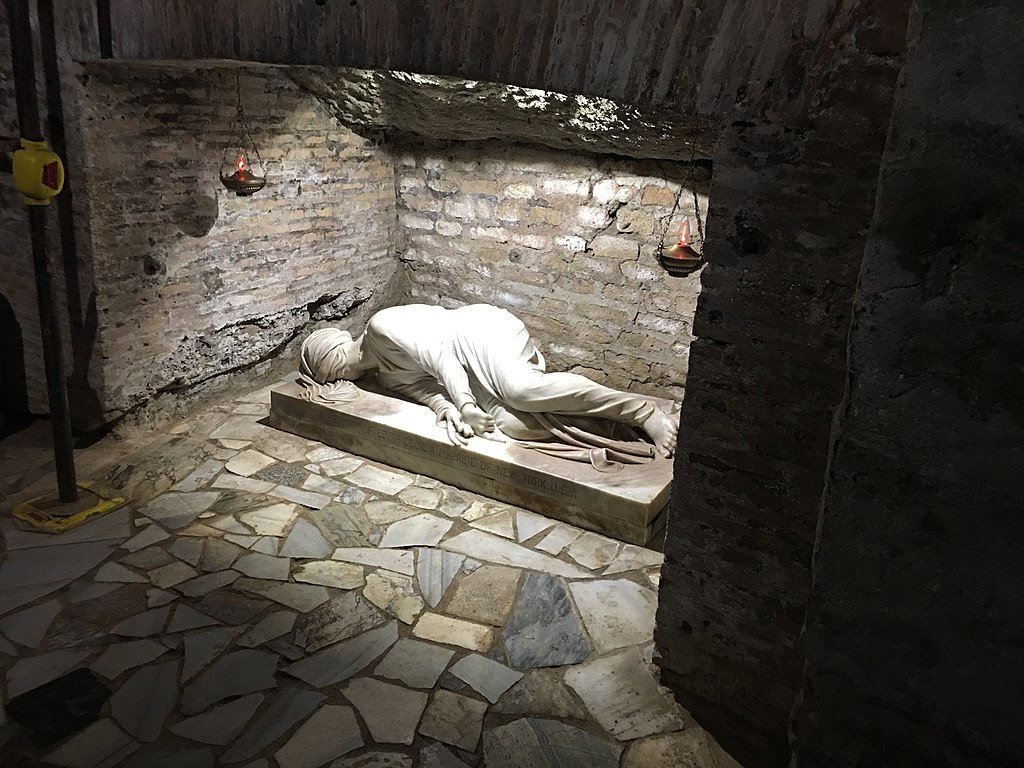
This is the tomb of St. Cecilia. St. Cecilia (Santa Cecilia) was a martyr of the Roman Empire around the second century, famous as the patron saint of musicians and the blind. Her tomb was located in this very catacomb of San Callisto. Incidentally, the sculpture in this photo is a replica of one made by Stefano Maderno in 1600. The original was made in Rome, as mentioned above.church of santa cecilia in trastevereIt is housed in a
Basilica of San Giovanni in Laterano
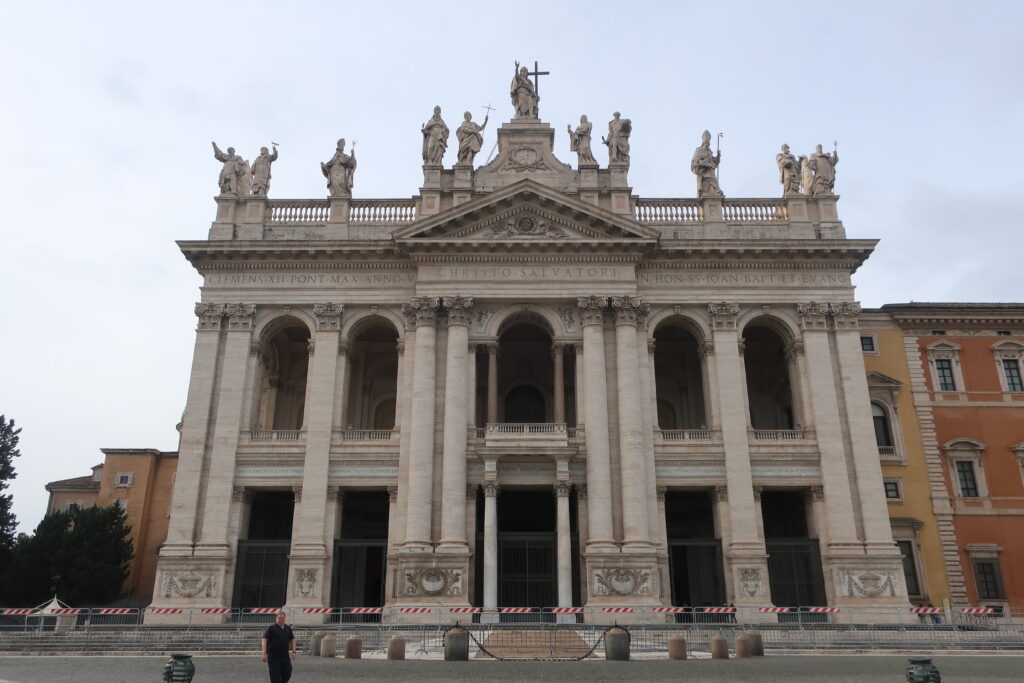
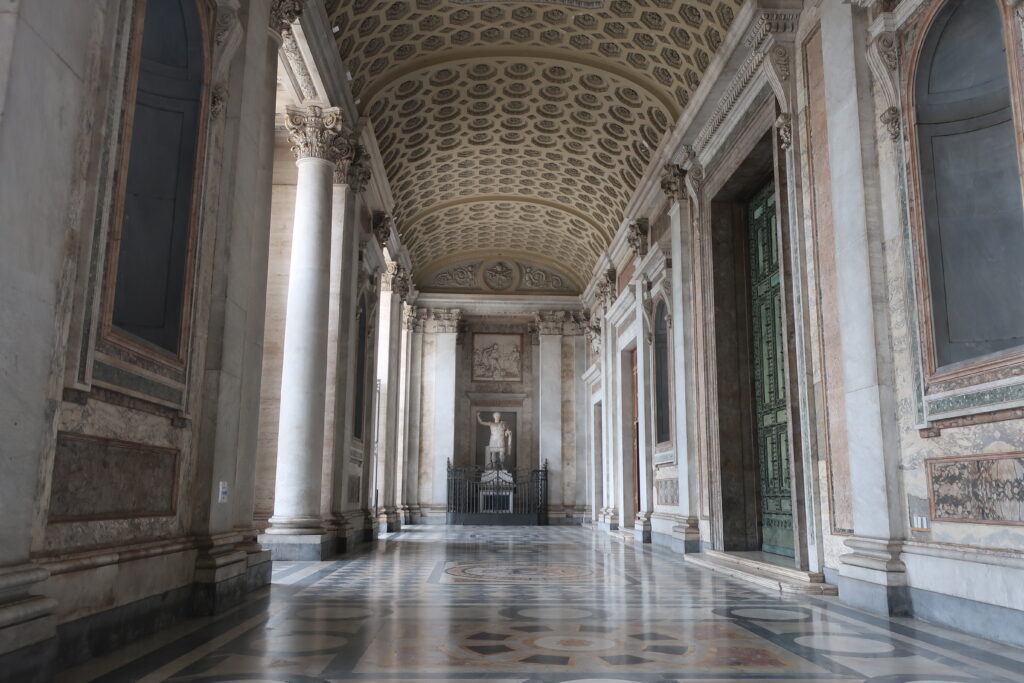
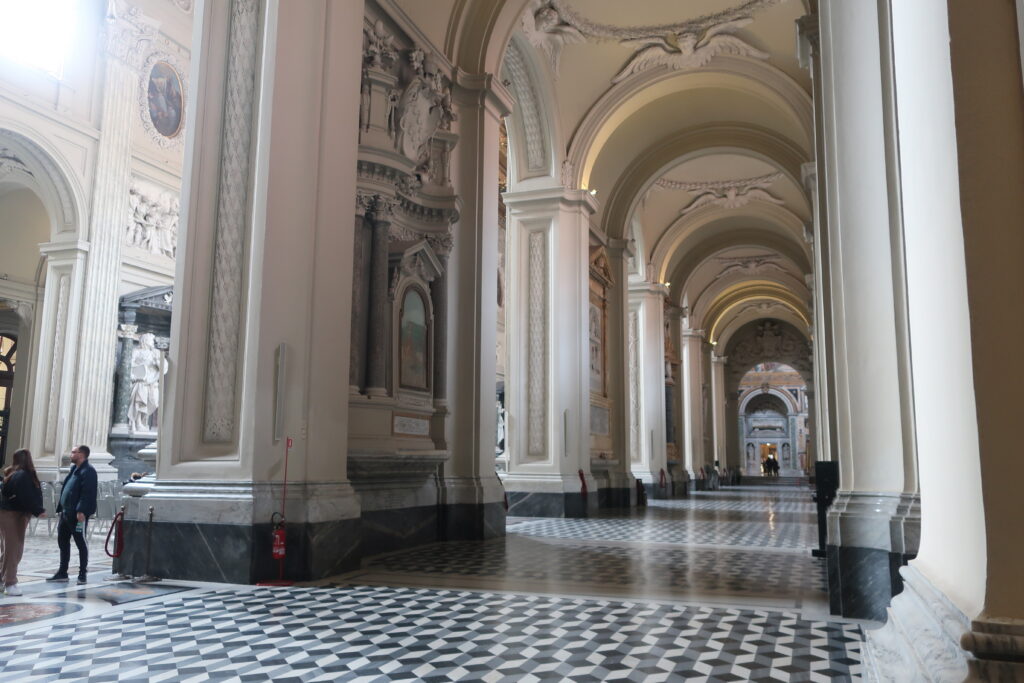
Although the Cathedral of Laterano is a church located a little far from the center of Rome's tourist attractions such as the Colosseum, Roman Forum, and Piazza di Spagna, it is very important in terms of Roman Catholic history.
When we think of Roman Catholicism, we tend to think of St. Peter's Basilica in the Vatican, but in fact, until the Middle Ages, the political center of Roman Catholicism was this Laterano Cathedral. In fact, until the Middle Ages, the political center of Roman Catholicism was the Laterano Cathedral, which was also the first cathedral built in Rome.
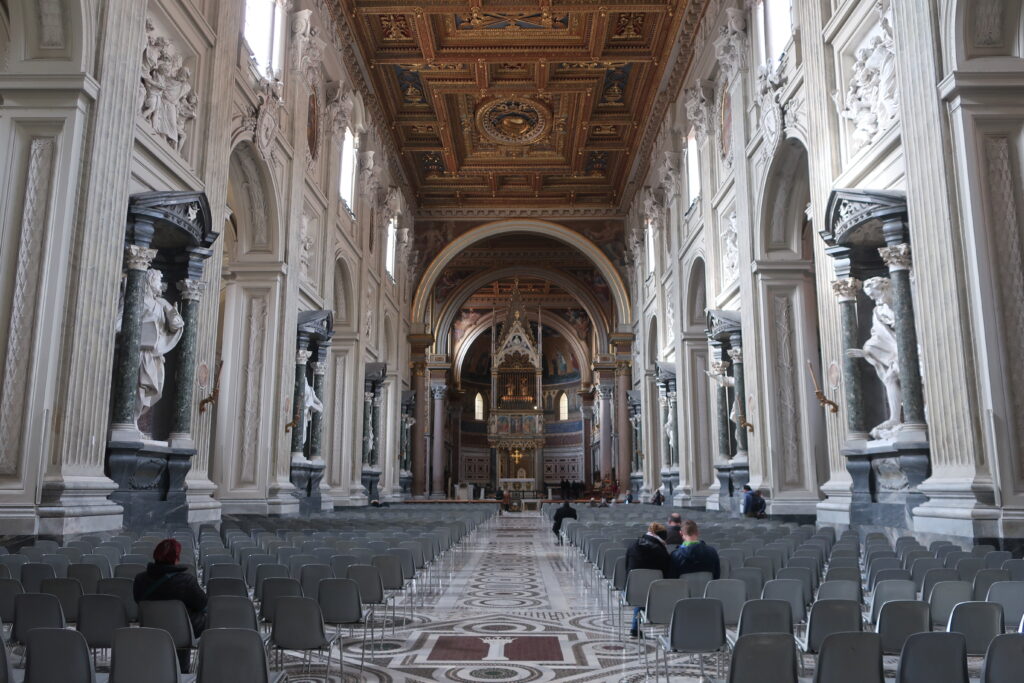
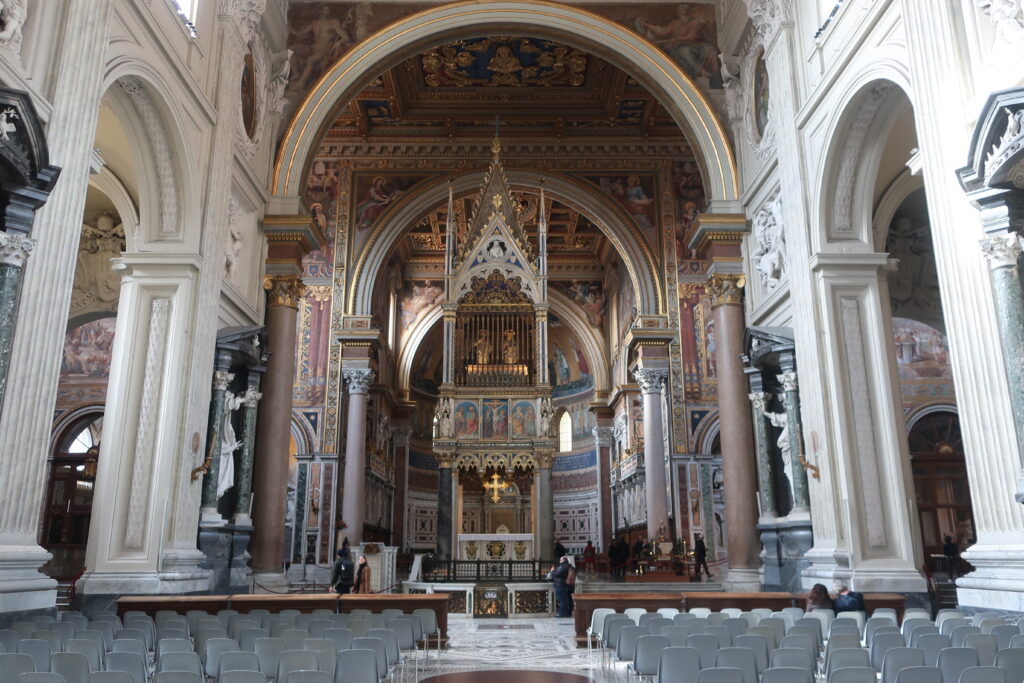
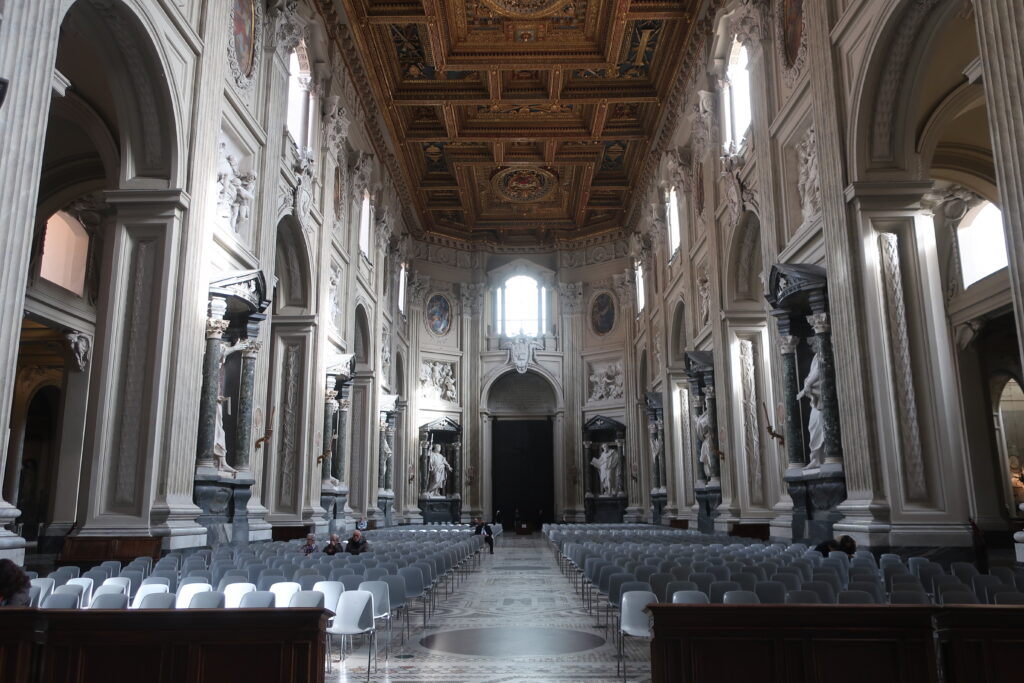
Huge columns came into view as soon as we entered the interior of the cathedral. The white base color gives it a sophisticated atmosphere. The colors are completely different from those of the golden St. Peter's Basilica.
The interior of the cathedral was extensively repaired and reconstructed by Borromini in 1650. Borromini was a genius, a rival of Bernini, the king of the Baroque, and his Basilica of San Carlo alle Quattro Fontane, mentioned above, is known as one of Rome's architectural masterpieces.
Not only the magnificent space, but also the individual sculptures are dynamic and truly wonderful. It is a reminder of the heyday of Baroque art.
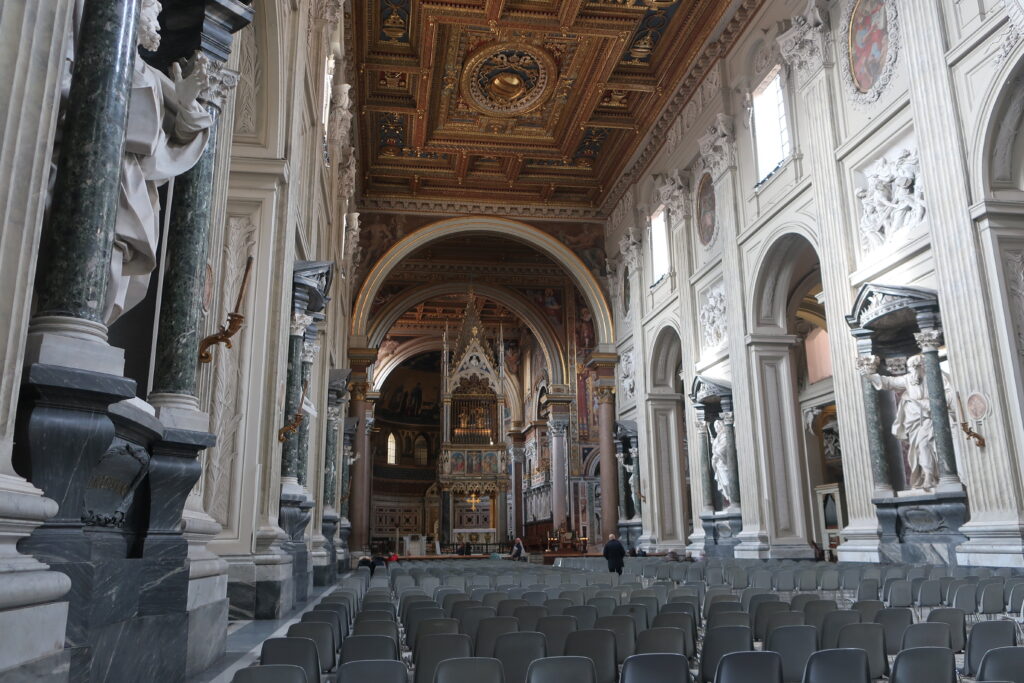
I stood right next to the columns to see how these sculptures jump out. You can see this clearly if you look at the left front of the photo.
There is a dramatic effect here that seems to come close to the hearts of the worshippers. It is difficult to convey this effect from the flat surface of a photograph, but if you experience it on site, you cannot help but be amazed at its power. It is very rare to see a church with this kind of structure.
Personally, I prefer this church. I think this church shows the genius of Borromini. Mr. Ishinabe also praises it highly as well. It is a little far from the tourist center of Rome, but it is a wonderful church worth seeing.
Basilica di Santa Maria Maggiore
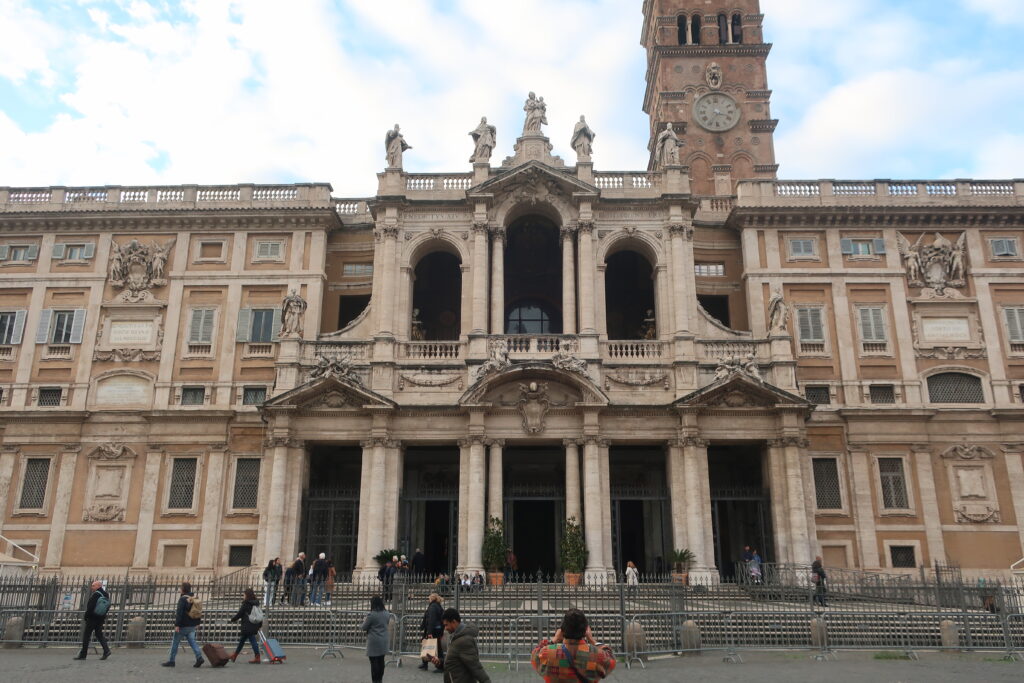
Basilica of Santa Maria Maggiore....
I suspect that there are quite a few Japanese who know about this church. I did not know about this cathedral until I studied Rome before embarking on this trip. There are so many things to see in Rome. It would take an enormous amount of time to cover everything.
Despite its low profile, the Basilica of Santa Maria Maggiore was actually an incredibly important church in the city's history.
Mr. Ishinabe on this church.It was the first basilica to be publicly built by a pope. It is a cathedral of great historical significance in that respect, and a must-visit not only for Catholics, but also for pilgrims to Rome's history and art."It is noteworthy that he stated.
I had no idea that there was such an amazing cathedral near Termini station. I was surprised to see such an amazing cathedral near Termini station.
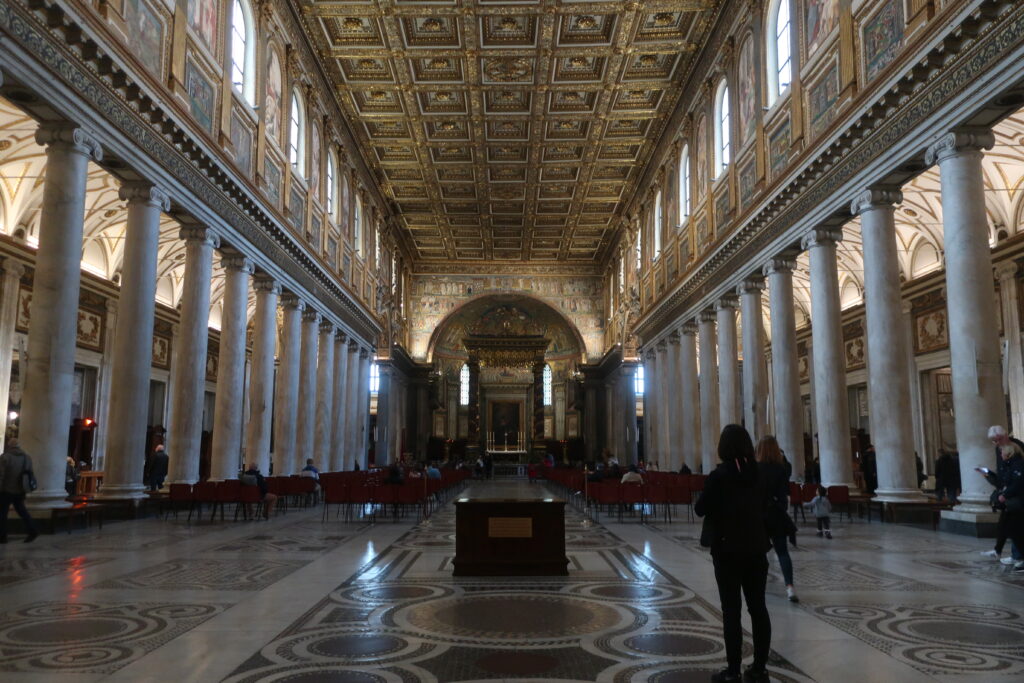
This is the interior of Basilica di Santa Maria Maggiore. When I stepped into this place, I was so surprised that I stopped breathing for a moment. I had never imagined such a beautiful place. The neatness of the colonnades, the simple structure of the cathedral, and even the square decorations on the ceiling and pillars are extremely beautiful.
Entering the nave of the Basilica of Santa Maria Maggiore, the visitor feels transported into an ancient world. Is it a Christian cathedral or an Athenian cloister, where philosophers expounded their wisdom? The beautiful Ionic colonnades that support its architrave, its great horizon, its spaciousness, express purity and peace.The space was the very embodiment of the word
Indeed, it is something different from other cathedrals. How exquisite the expression "Athenian cloister" is. It has a philosophical and orderly atmosphere.
This is wonderful! I would highly recommend this church as it is a short walk from Termini station.
church of santa viviana
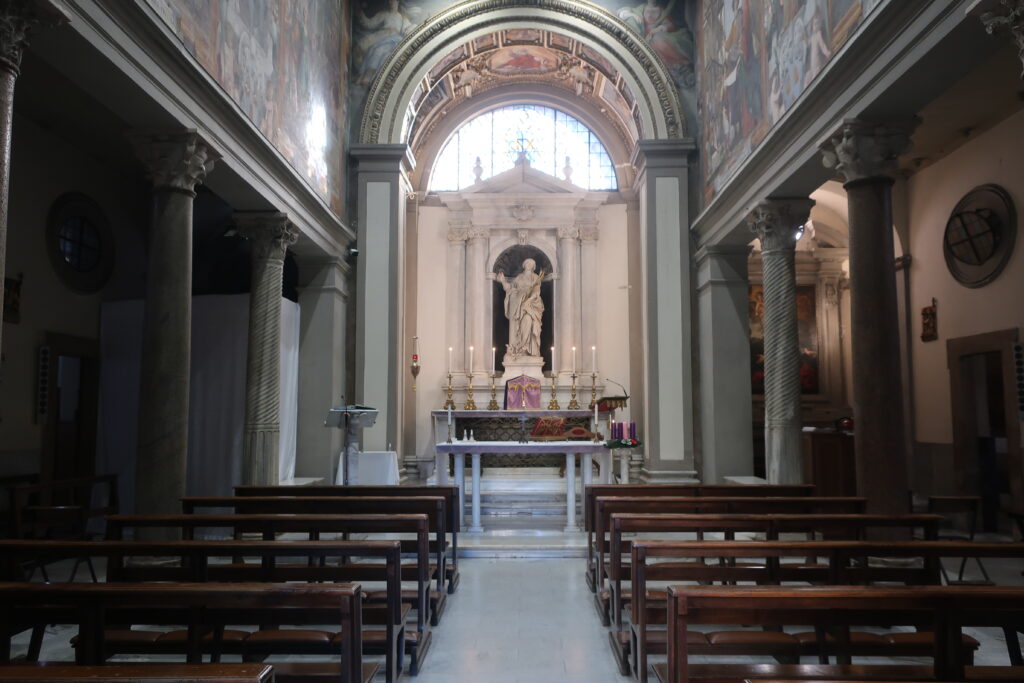
Like the Basilica of Santa Maria Maggiore above, this Church of Santa Bibiana is also located near Roma Termini Station.
Although Bernini was a child prodigy as a sculptor, it was from this church that he began his career as an architect.
But from the very first step, he had accomplished a tremendous feat in this church. For more details, please refer to the following article.
We highly recommend this church where you can enjoy the first church architecture of the genius Bernini. The church is a bit plain and unobtrusive, but that is why it is so tasteful. Since few tourists come here, you can take your time and enjoy the wonderful world of Bernini.
Chapel of Raimondi by Bernini in San Pietro in Montorio Church
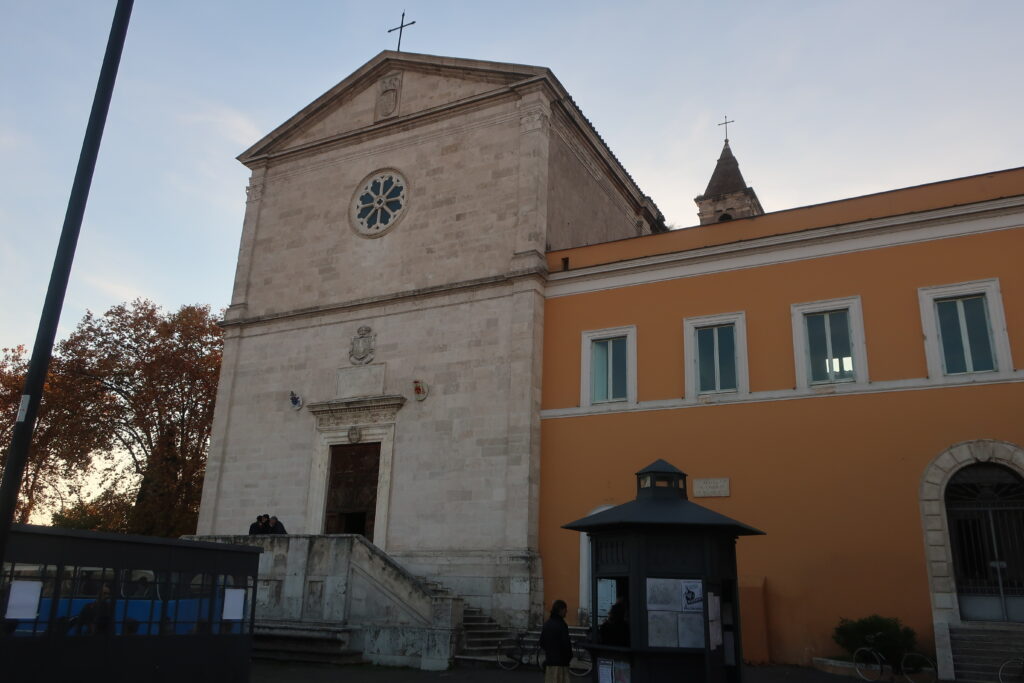
Bernini's Raimondi Chapel is located in the Trastevere district in the church of San Pietro in Montorio.
In the Trastevere district, the statue of St. Cecilia, mentioned above, ischurch of santa cecilia in trastevereand Bernini's Blessed Ludovica Antoni.Church of San Francesco a RipaThere are a few. I went around them as a set.
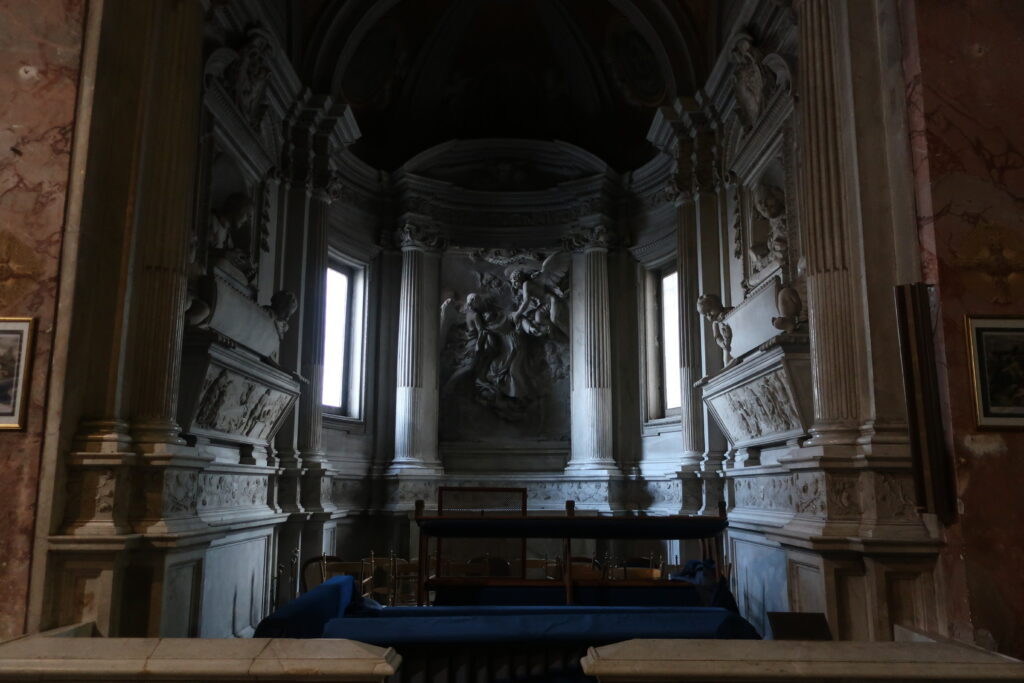
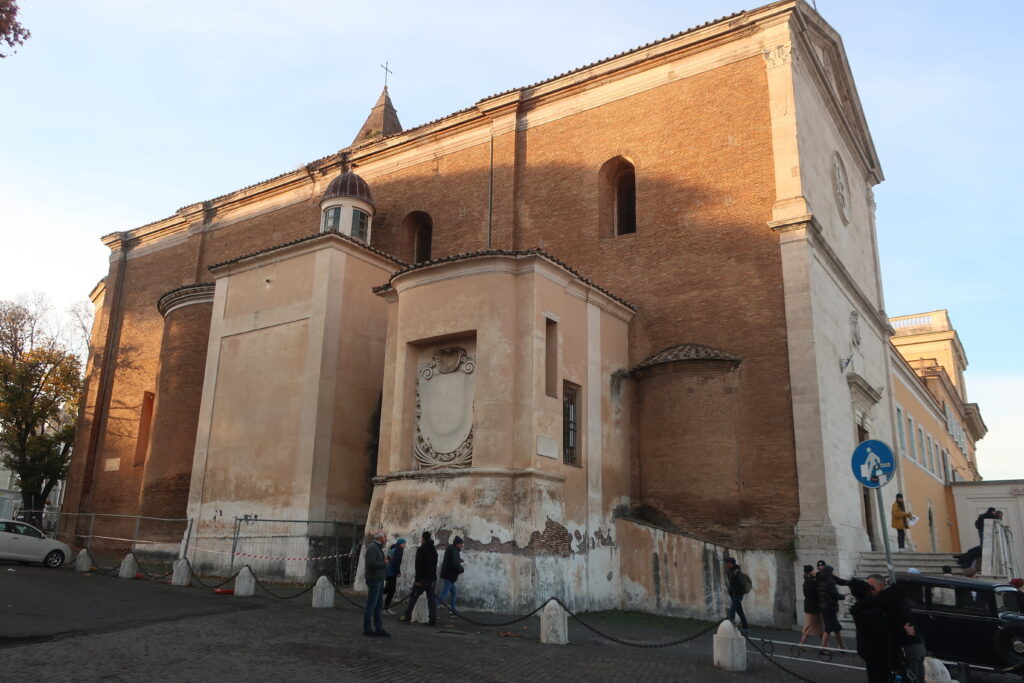
The photo on the left shows the Raimondi Chapel inside the church and the exterior on the right. The protruding section in the foreground is the Raimondi Chapel.
The Raimondi Chapel is the first work in which Bernini achieved complete mastery of light.
In an age without electricity, Bernini created a unique spotlight to illuminate the stage space, so to speak.
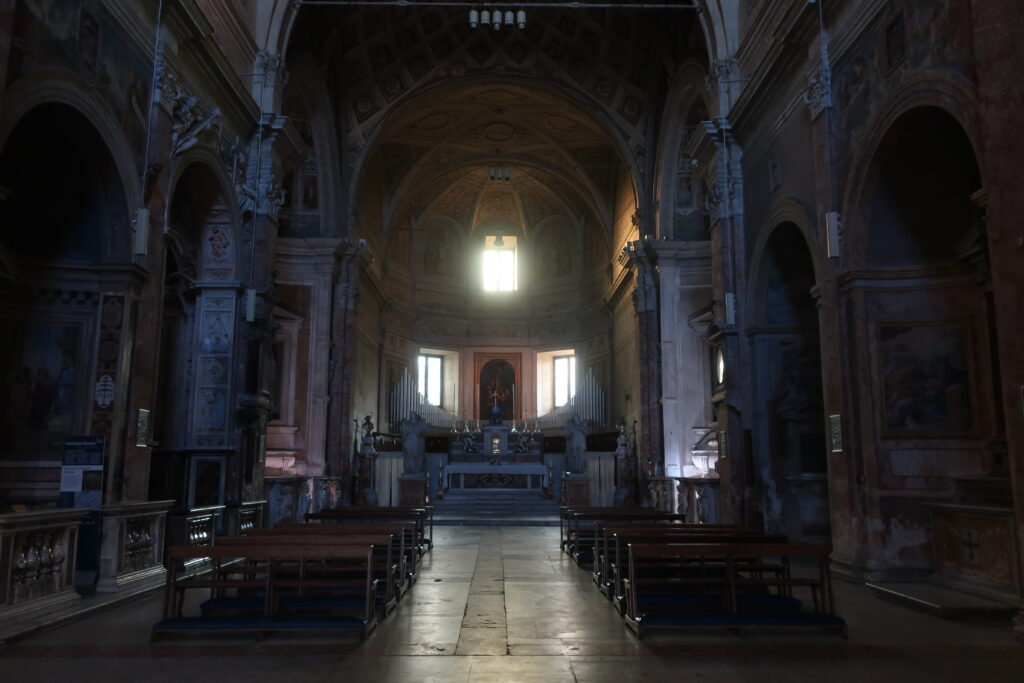
I came to this church in the evening. It was just before the end of the opening hours, but I chose this time because I thought I would be able to experience the magic of Bernini's light better if it was a little darker. I chose this time because I thought I could experience the magic of Bernini's light better if it was a little darker.
Note the following pictures.
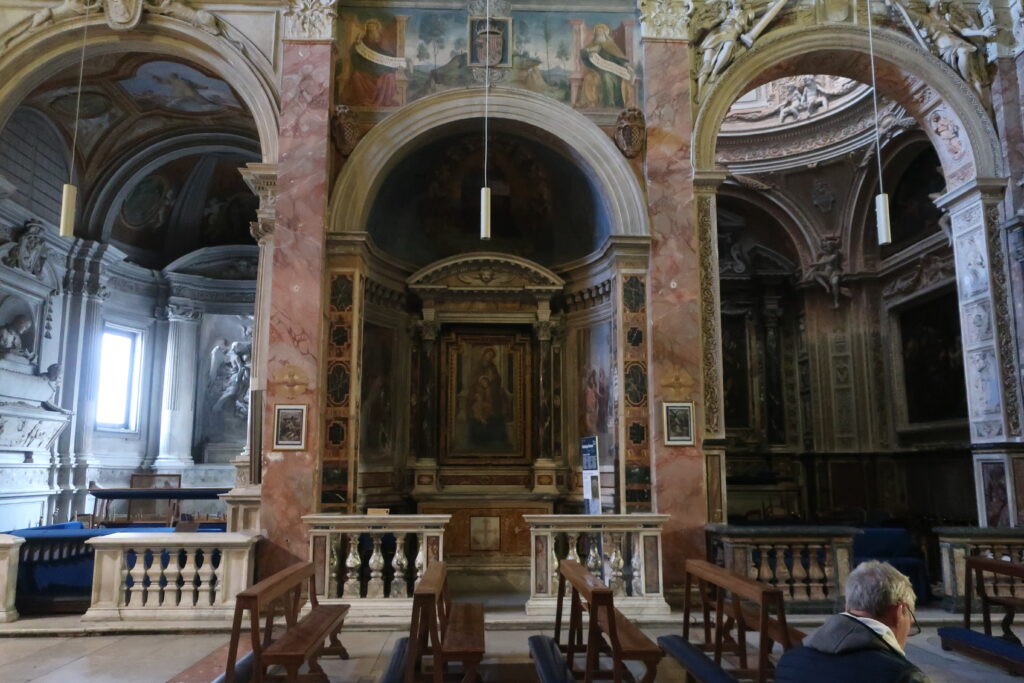
On the far left is the Raimondi Chapel designed by Bernini. It is obvious that this is the only place that is overwhelmingly bright.
This brightness surprised me from the bottom of my heart as well. As you can see in the photo above, I felt its brightness even more when I compared it to the darkness of other chapels. I take my hat off to Bernini's theatrical technique and the idea of light spectacle. This is even more so since it is a work from the 1630s. For those of us living in the age of electricity, it may not seem like a good idea to "bring in light through a window to illuminate a work of art. However, I believe that Bernini's greatness lies in the fact that he came up with this idea at a time when there was no electricity and the idea of illuminating sculptures with light was completely unheard of. It was Bernini who made it possible for us to take things for granted.
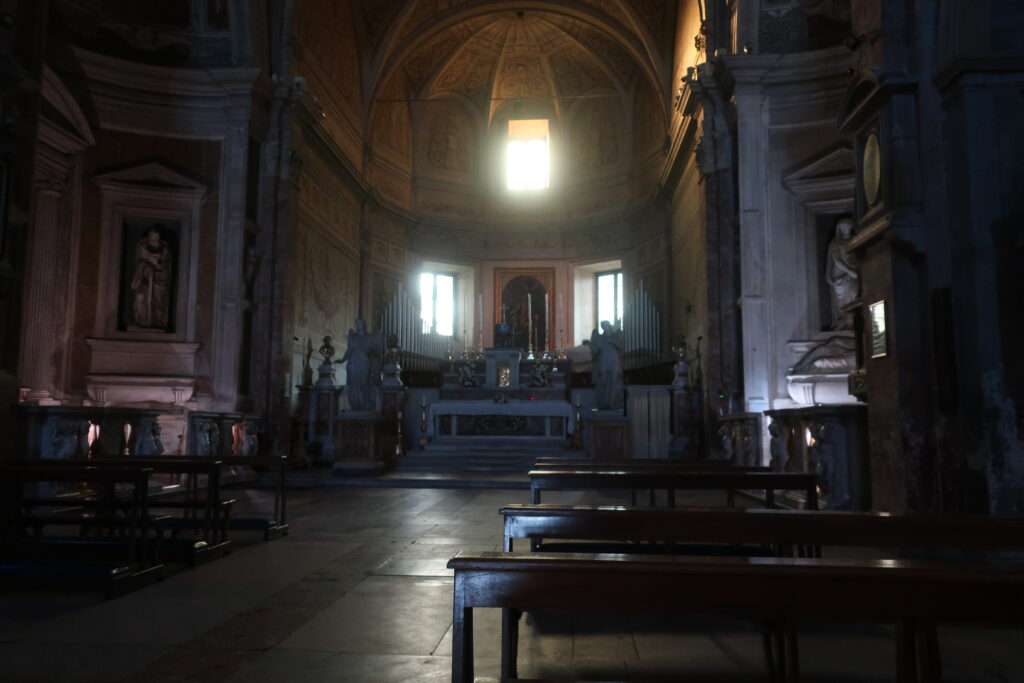
I stayed in this church until just before closing time. It is a small church far from the center of the city, so it is very quiet. In the quiet, dimly lit hall, I savored the church to my heart's content. The comfort of the church at dusk was enough to make me fall in love with it.
The time I spent in this church was one of the most memorable of my stay in Rome. If I could go back to Rome again, I would definitely visit again at this time.
This church is also a very nice spot to feel Bernini's spectacle of light.
Fountain of the Four Rivers" in Piazza Navona, Rome
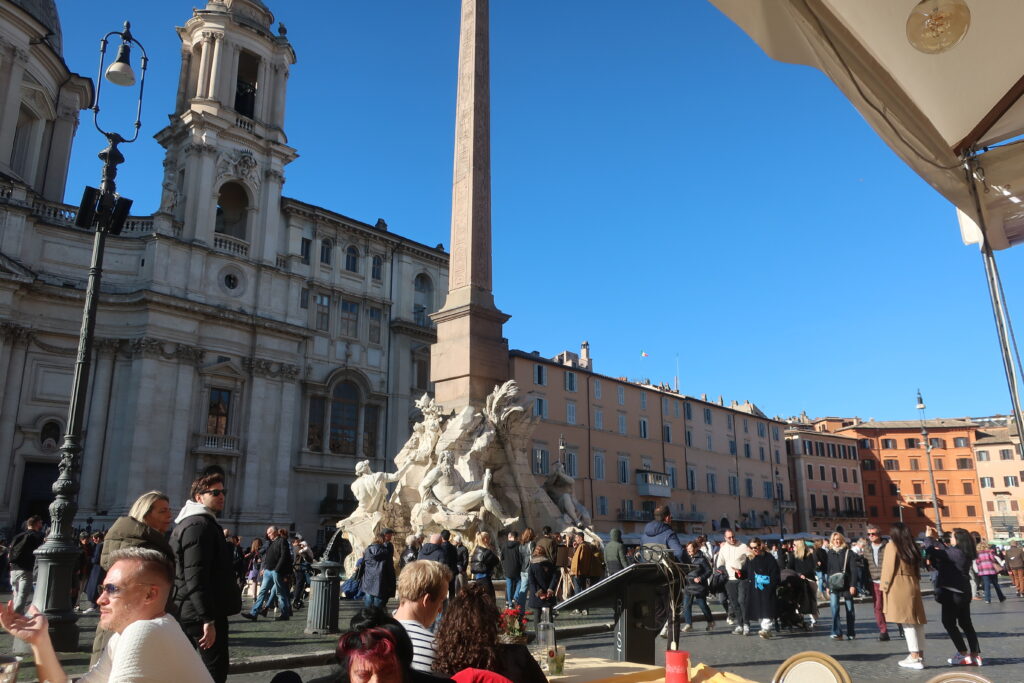
Along with Piazza di Spagna, Piazza Navona is the face of Rome.
Here, too, is a wonderful sculptural work by Bernini. It is the Fountain of the Four Rivers in the photo.
A huge fountain sits in a vast space surrounded by buildings. This fountain, which is perfectly at home in the Roman landscape, actually hides an amazing episode. I was quite surprised to know that there was such a backstory to this fountain. Bernini was a man who led a tumultuous life with no shortage of anecdotes, but the episode related to this fountain is particularly astonishing. Please refer to the following article for more details about the episode.
The square is also lined with restaurants and eateries, where visitors can enjoy a meal while admiring the typical Roman scenery.
I too had a blissful lunch here.
If you are wondering where to have lunch during your stay in Rome, why don't you have a meal at this piazza and feel the wonderful Rome? The price is a bit touristy, but I think it is a reasonable price to enjoy the atmosphere that is typical of Rome. Highly recommended.
Conclusion
So far, I have introduced "15 recommended sightseeing spots in Rome" and more than that, but what do you think? I am sure there are some churches you have never heard of. However, I am confident that all of the churches and historic sites I have introduced here are wonderful places that I highly recommend.
To be honest, it would take at least a week to visit all the places I have recommended. If you are planning to visit all the places I have recommended, you will need at least a week to visit all the places I have recommended.
Rome has so much to offer!
If you come to Rome with a vague idea of what you would like to see, you may find yourself in a panic as you race against time to see the most famous sites. Wandering around Rome at your leisure is wonderful, but if you find your own theme to some extent and have a plan to see the sights you want to see, you will be able to explore Rome much more efficiently and intensely. You will be able to explore Rome much more efficiently and intensely if you have a plan of your own.
As you have probably noticed from reading this article, neither the Mouth of Truth nor the Trevi Fountain are included in my recommendations. These are some of the most famous sights in Rome that I have cut out because they are not included in my theme.
If I'm going to spend time at the "Mouth of Truth," I want every second of Bernini's masterpiece! I want to learn about ancient Rome and Roman Catholicism!
It was with this in mind that I toured Rome.
I am sure some of you are thinking, "I want to see something like this! I want to experience it! I am sure there is something you would like to see or experience.
Rome is indeed a wonderful city. However, there is a trap of having too much to see and do. We hope that our blog posts will be of help to you.
And I am embarrassed to come here and tell you this, but I originally did not intend to write this article.
However, an encounter with "something" a few days ago rekindled my love for Rome.
Actually, I am in India right now. (*as of March 1, 2024)
I had been on a trip to visit Buddhist sites since early February, and at the end of the trip I visited Sarnath, the holy place where the Buddha first preached. It is a suburb of Varanasi (Benares), famous for the Ganges River.
I also had the opportunity to see the "Sarnath Buddha," a masterpiece of Indian Buddhist art in the museum's collection, and this statue awakened me.
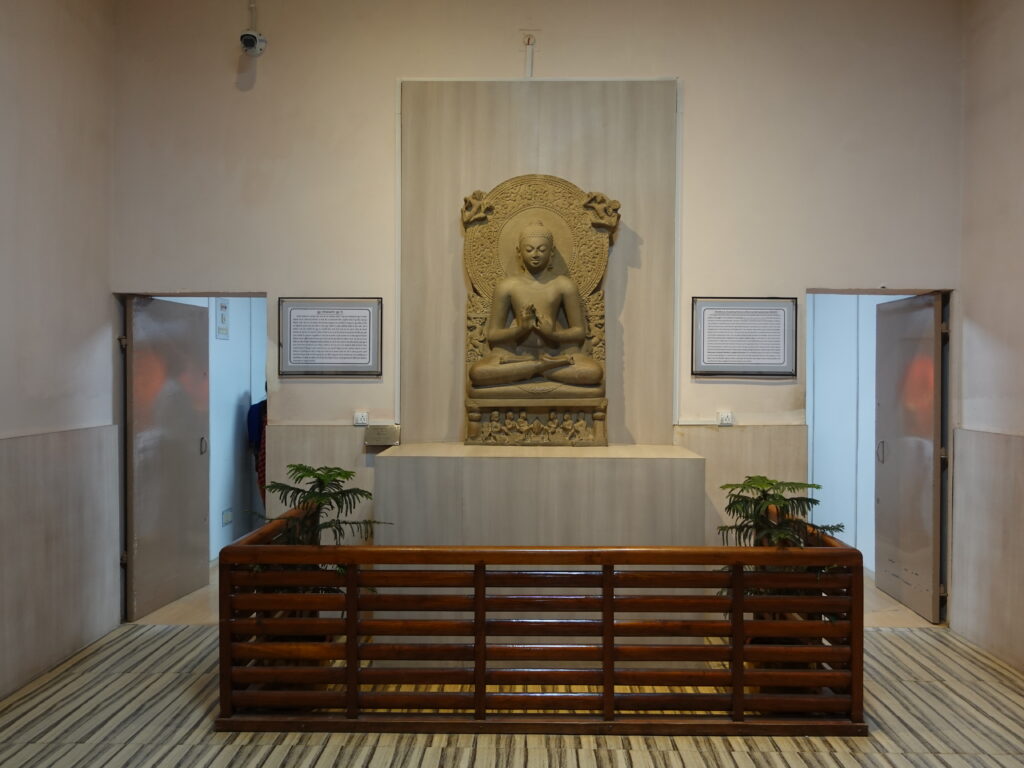
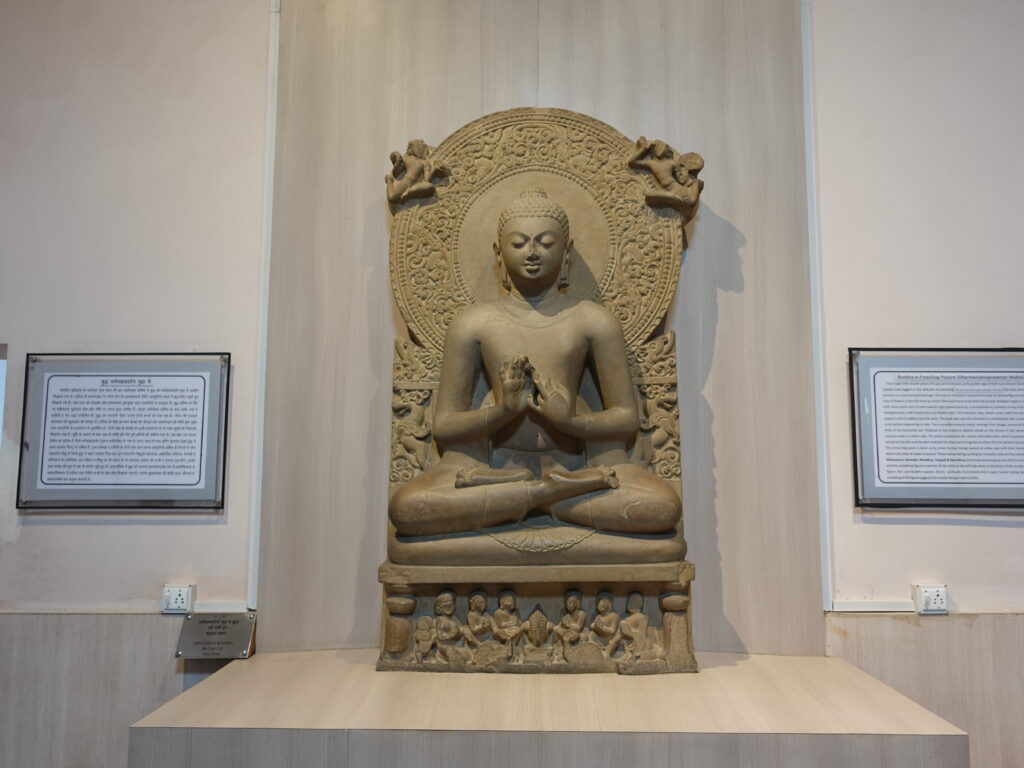
I was simply speechless before this Buddha image, so graceful, so serene, so perfect, that I could not leave.
The shock of this Buddha image continued long after I left the museum and returned to my lodgings, where I remained enthralled by this perfect sculpture.
That's when.
Oh! I want to go to Rome...!"
Rome has art that will intoxicate you whether you ask for it or not...!"
Oh! Rome! Roma...!"
Let me confess. I was already fed up with India. I am not very good at India. But I wanted to visit Buddhist sites to learn what Buddhism is all about.
But India is definitely not for me! (cries) I can't give you the details in this article, but India is still India.
And as I was nearing the end of my trip to India, I came across this "Sarnath Buddha" just when I was at the end of my rope.
Perfect beauty. A sculpture so overwhelming that it takes your consciousness away in an instant.
In the days following my encounter with "Sarnath Buddha," I spent most of the car ride thinking of Rome. That luscious Rome. Bernini's Rome. Blissful hours spent in an empty church..."
This is already a serious illness. I decided to treat this uncontrollable obsession with Rome by writing an article. As a result, I wrote this article all at once.
Thanks to you, I managed to suppress my paroxysmal love for Rome, lol.
I was so in love with Rome that I wanted to fly there if I was not careful. Even though I was in India.
That is how fascinating the city of Rome is to me. If I were asked what country I would like to visit again, my immediate answer would be Rome.
We hope that we have conveyed the charm of Rome to you.
Each of the links above provides more detailed explanations, and we hope you will find them useful if you are interested in any of these places.
The above is "Monks' Recommendation: 15 Sightseeing Spots in Rome! From the royal road to maniacal churches, taste the best of beauty".
Next Article.
Related Articles











